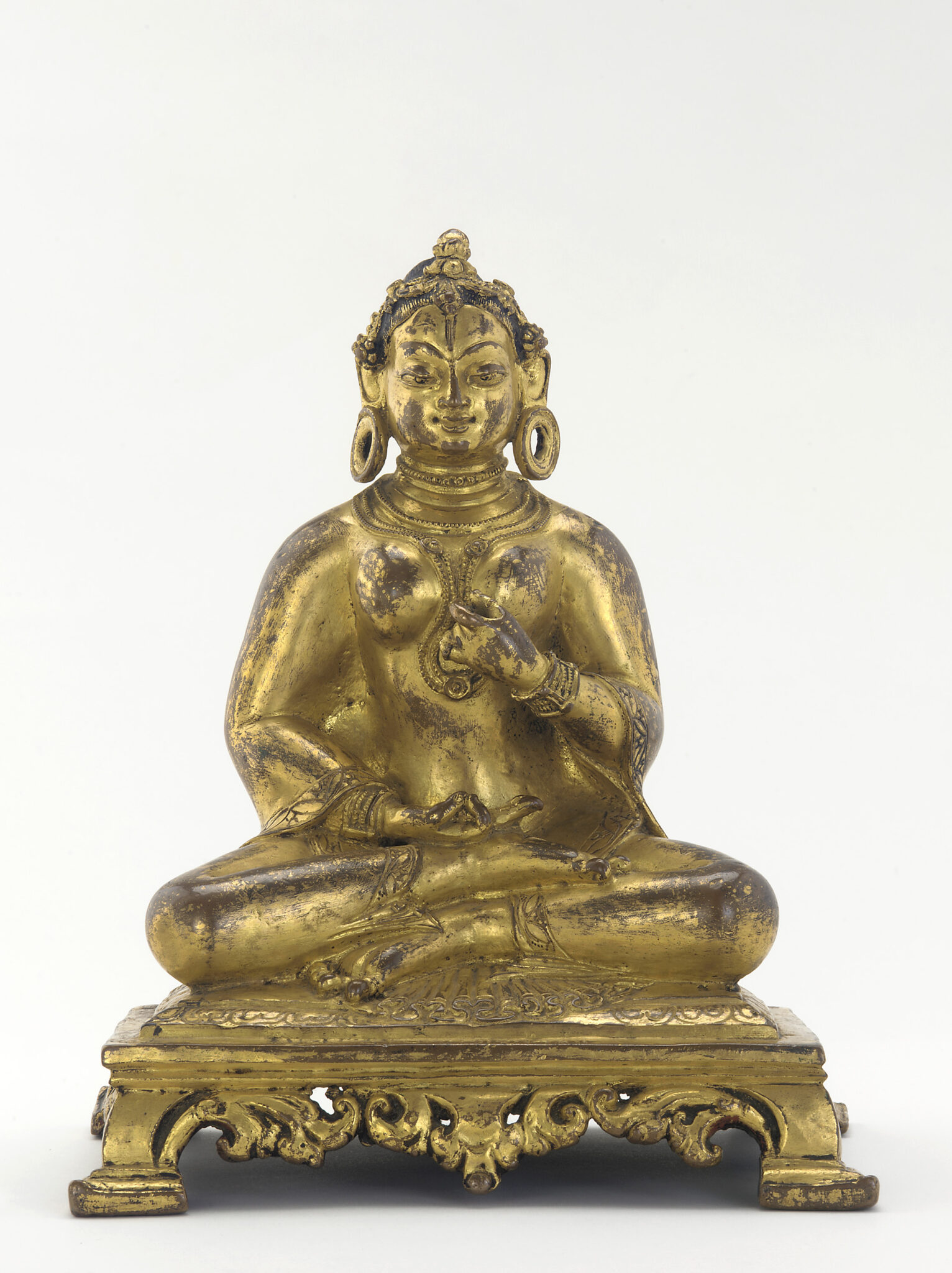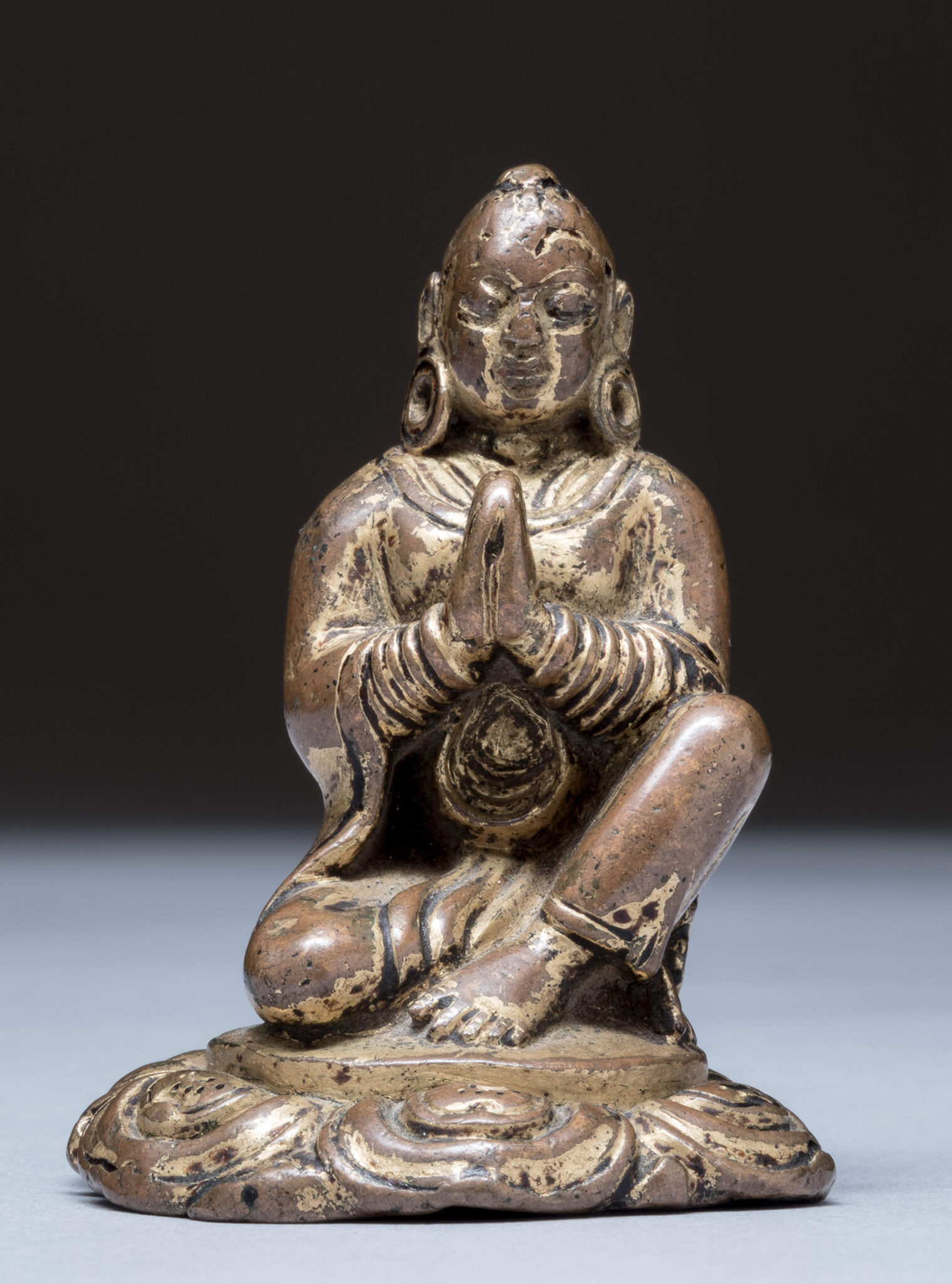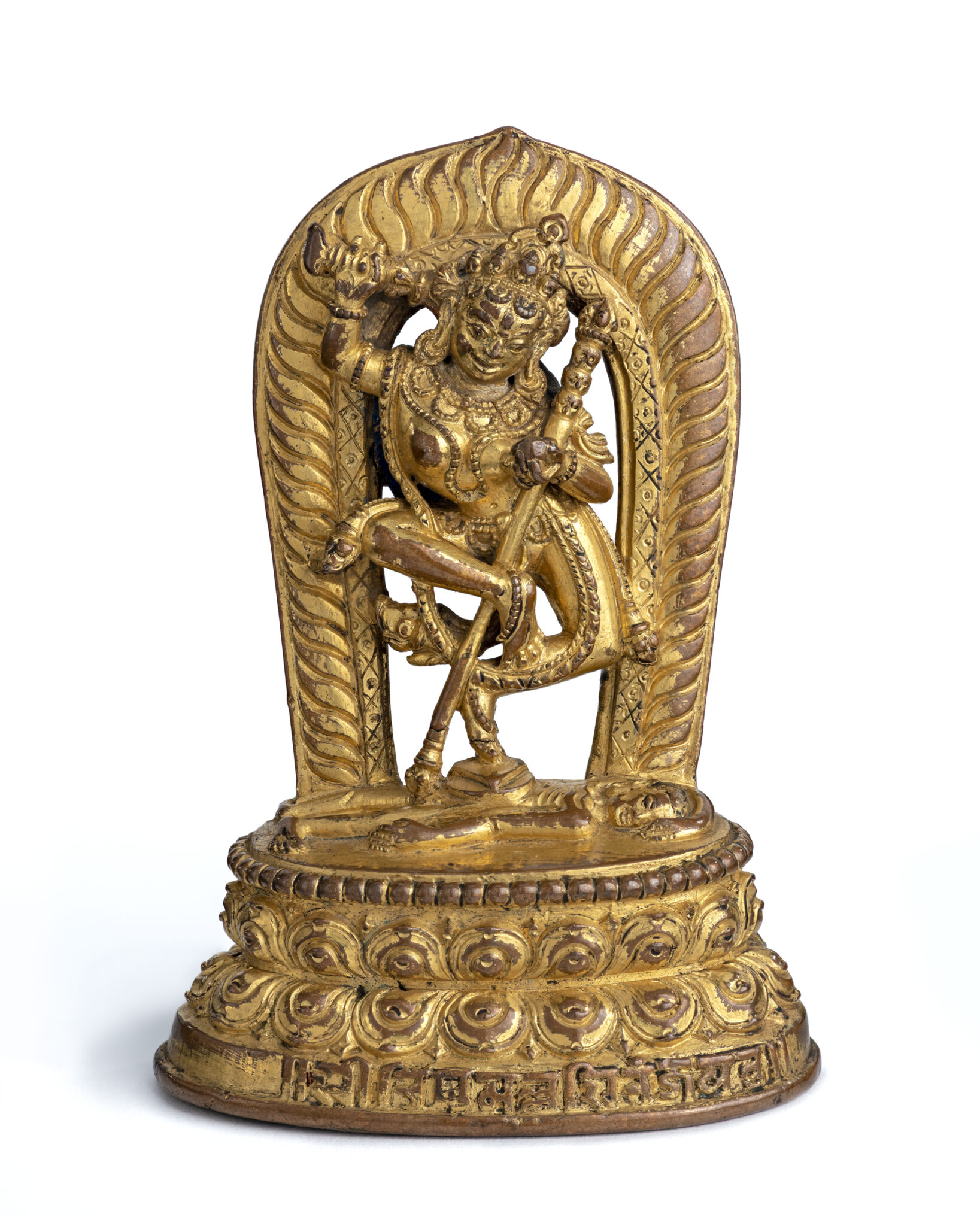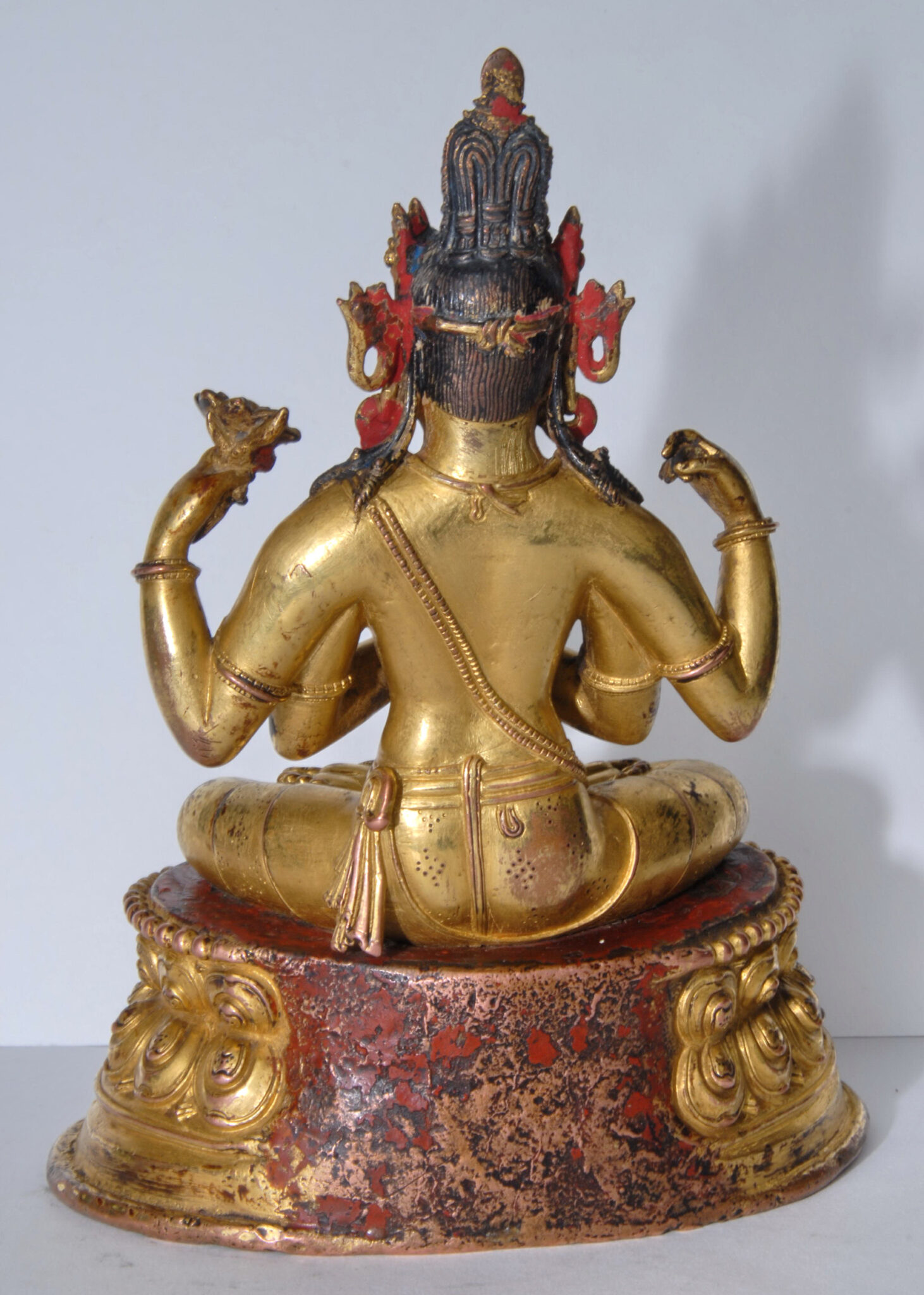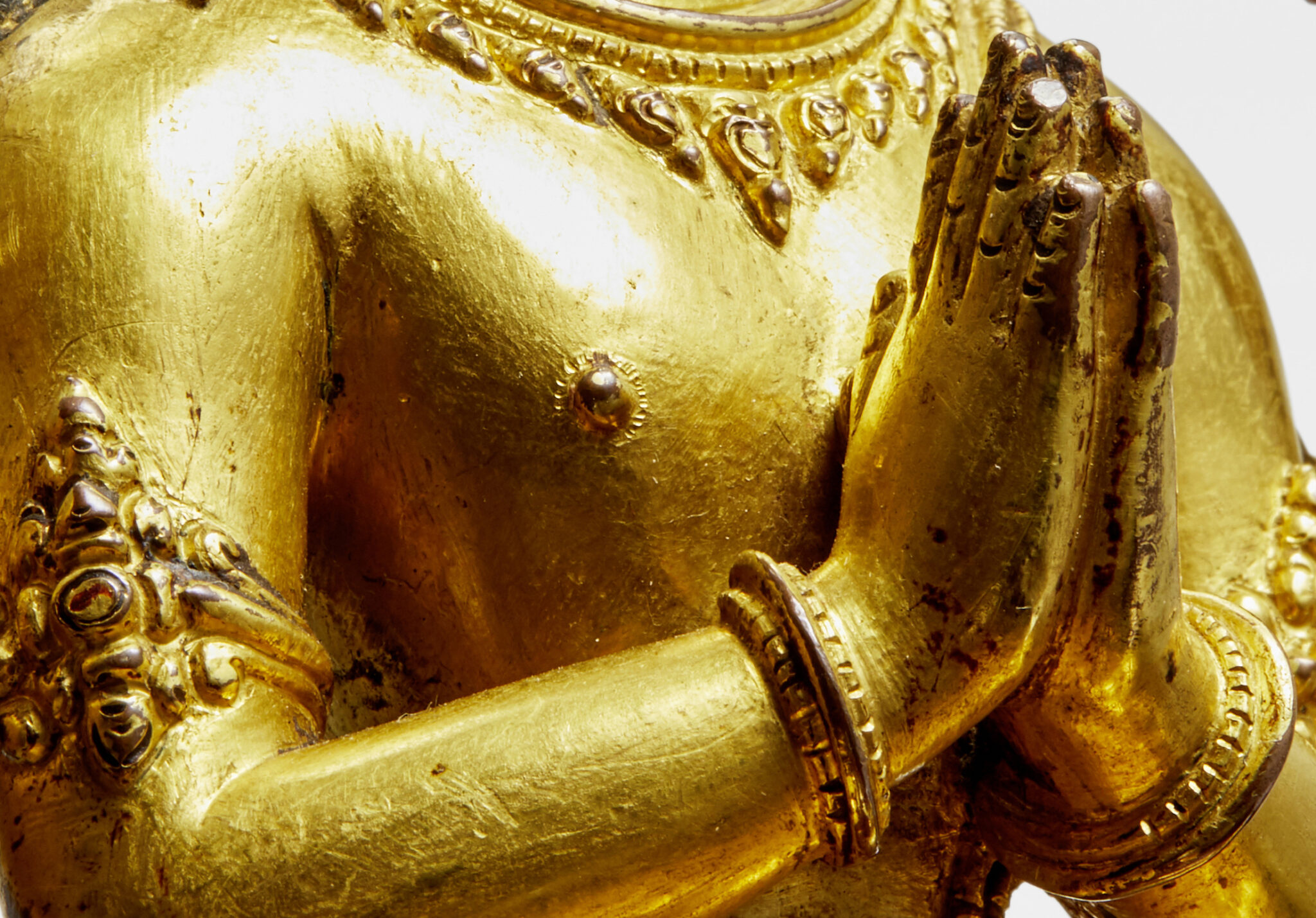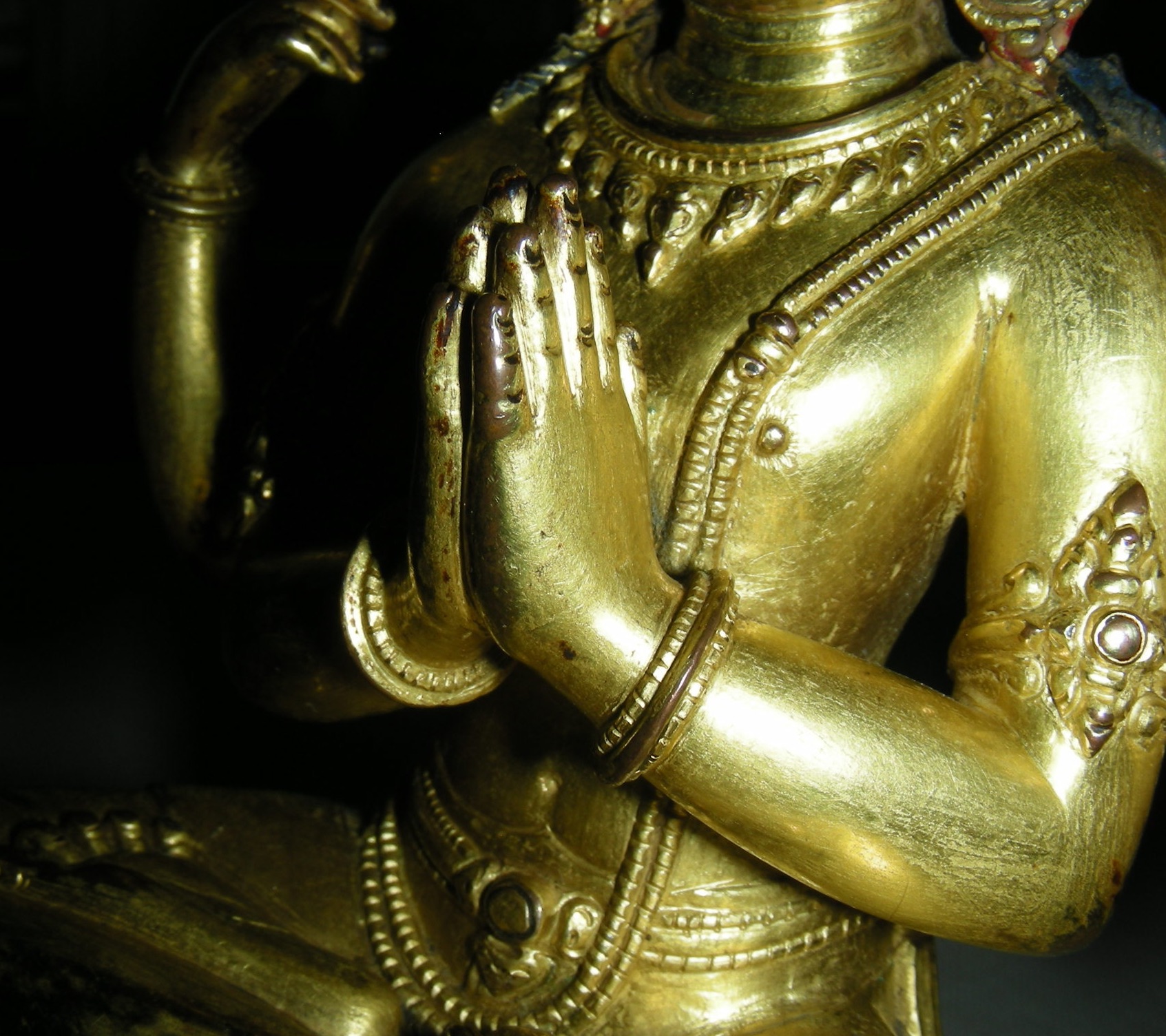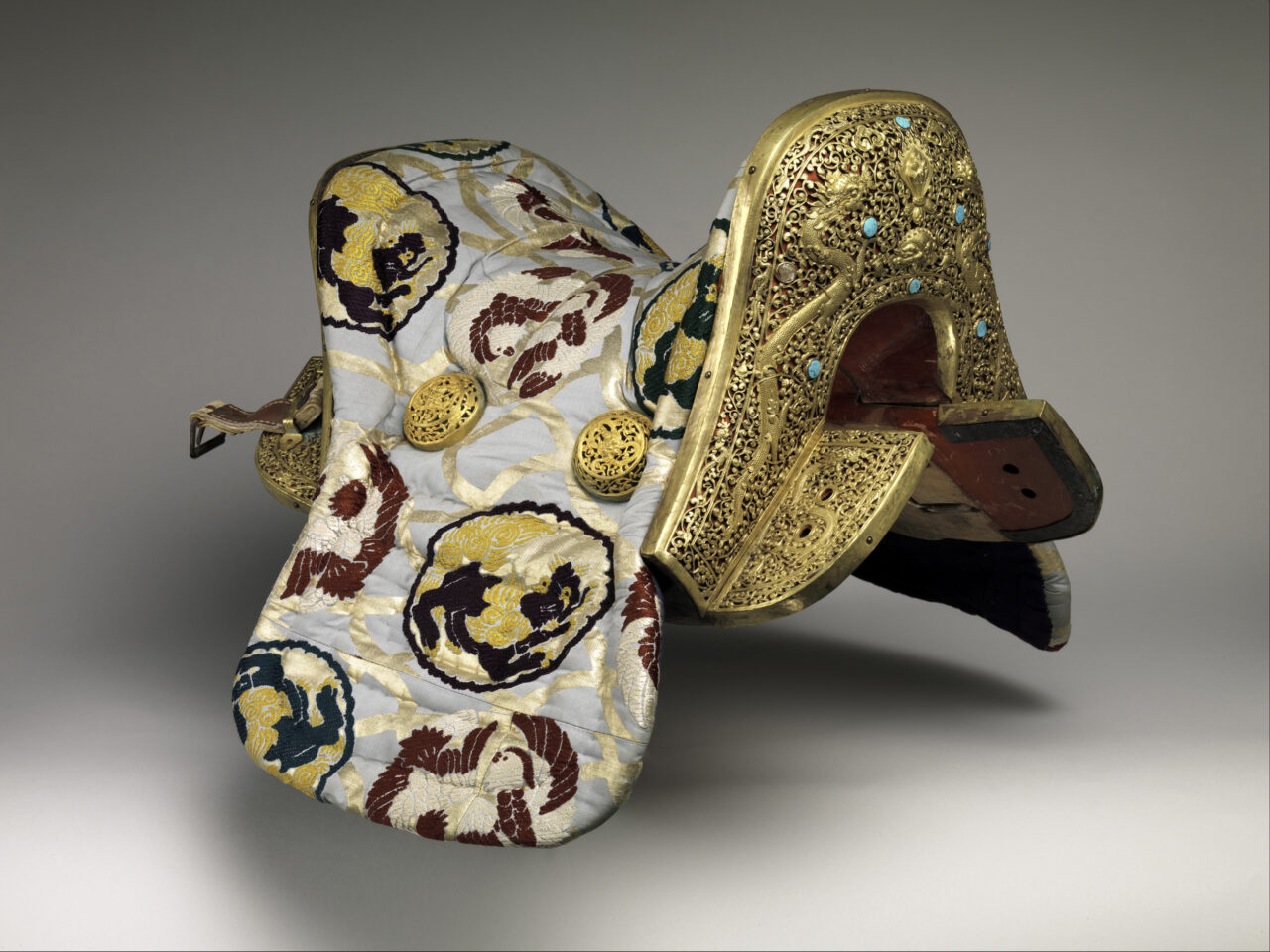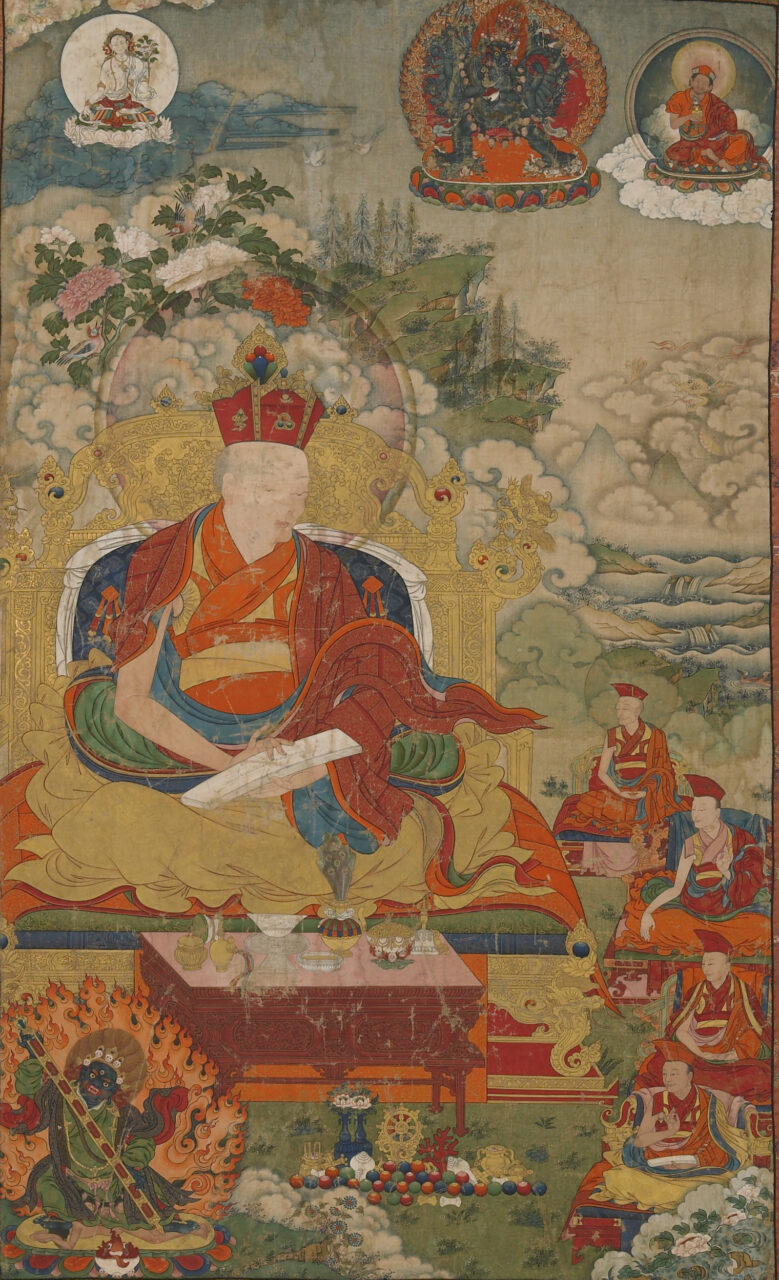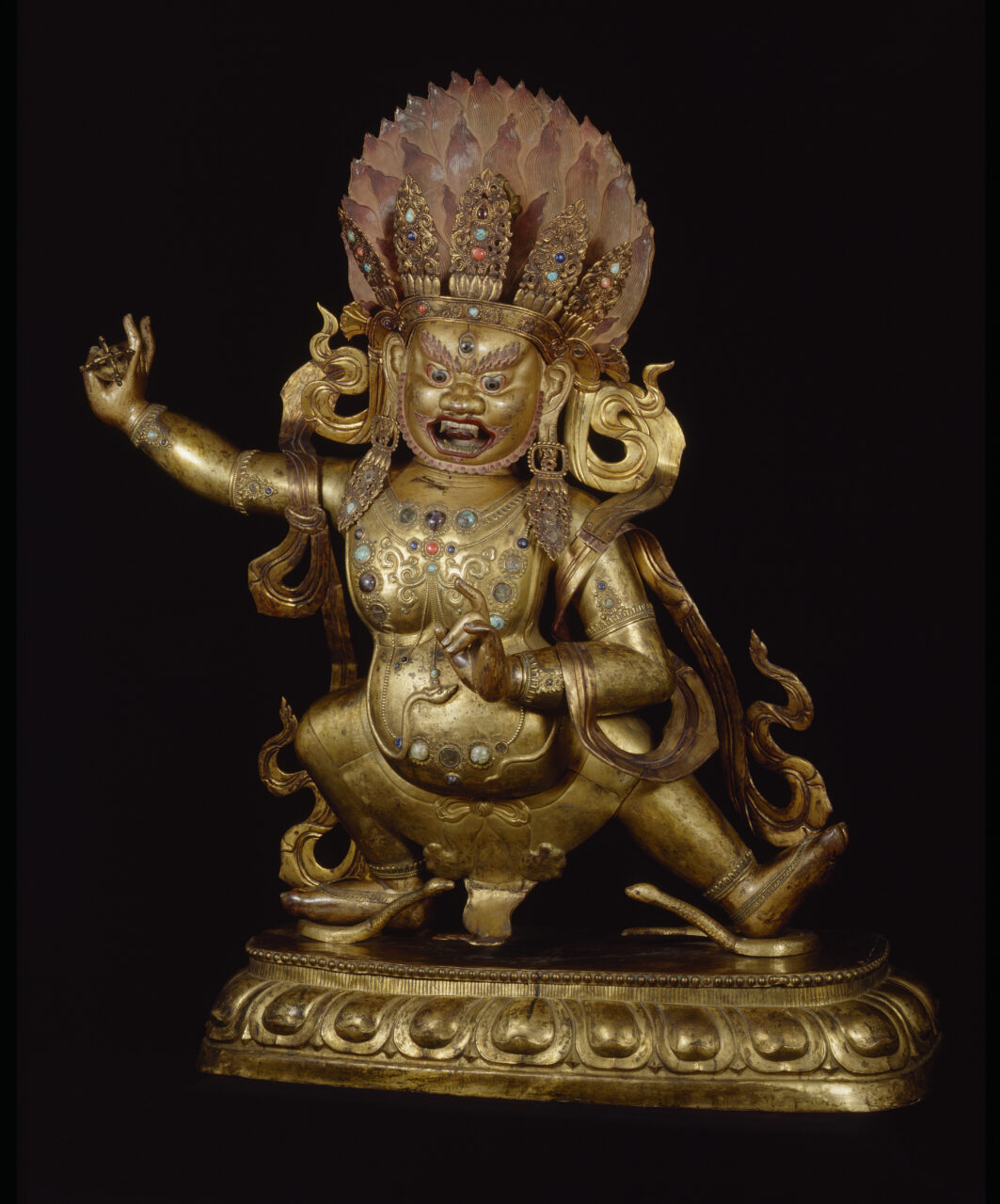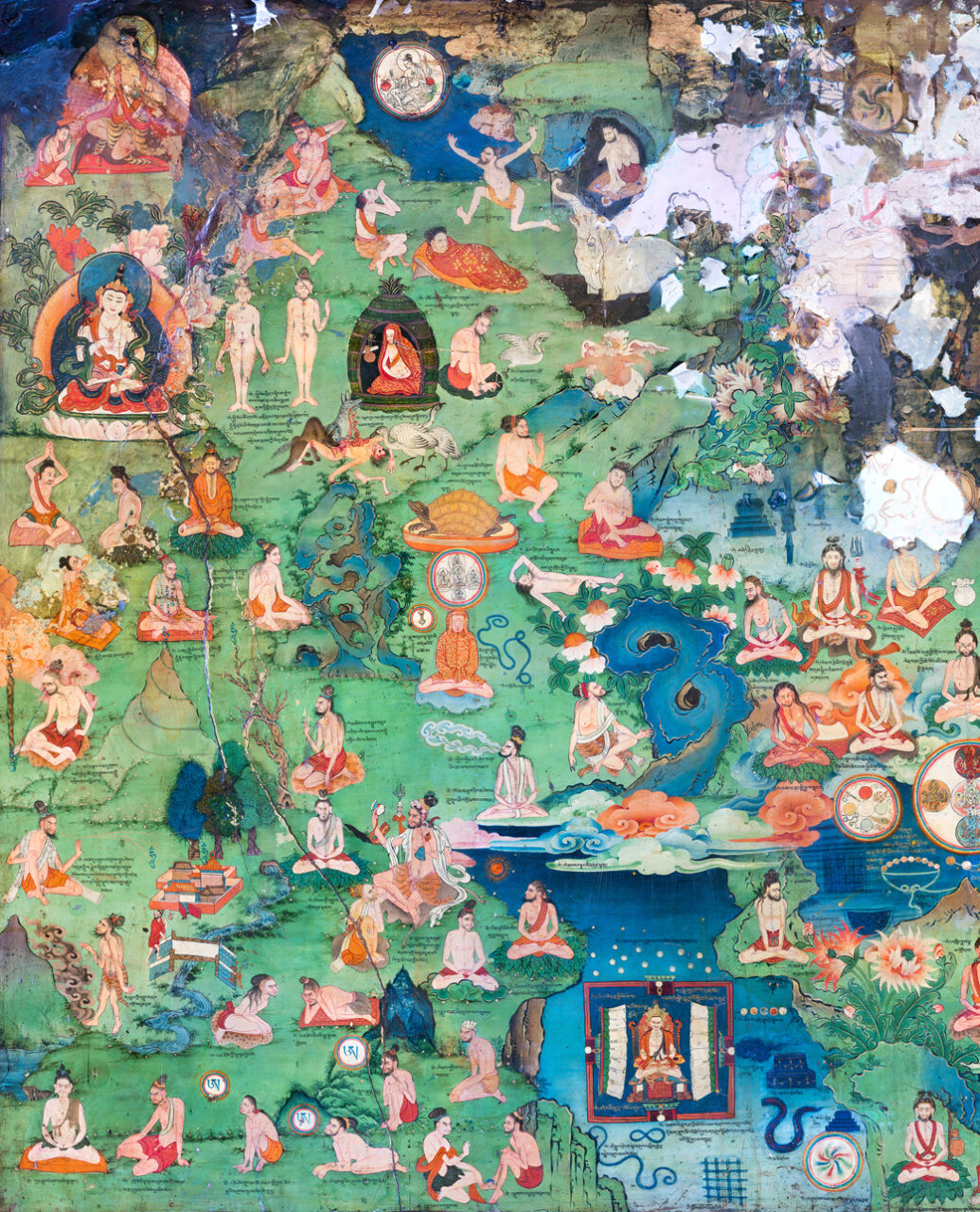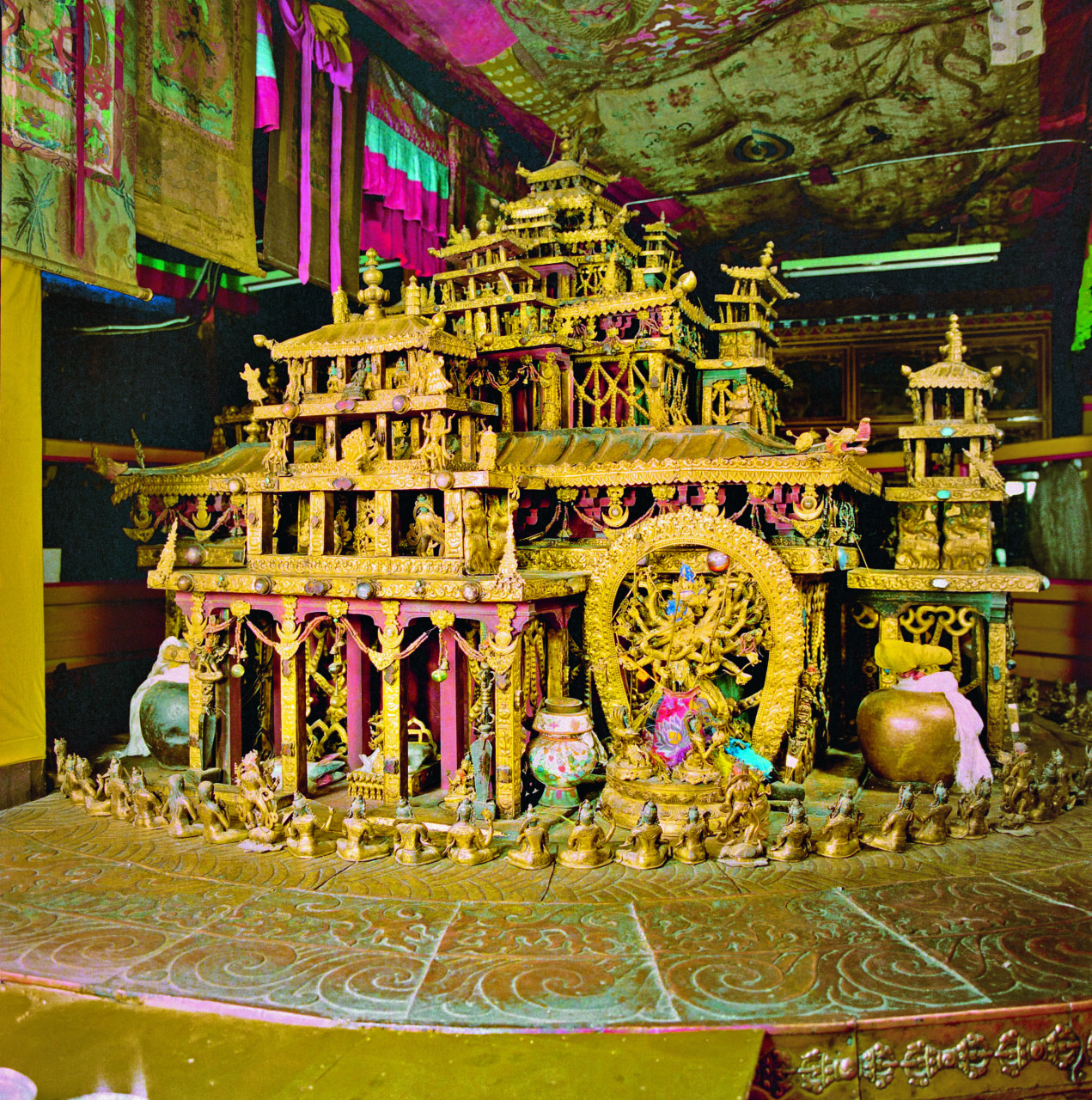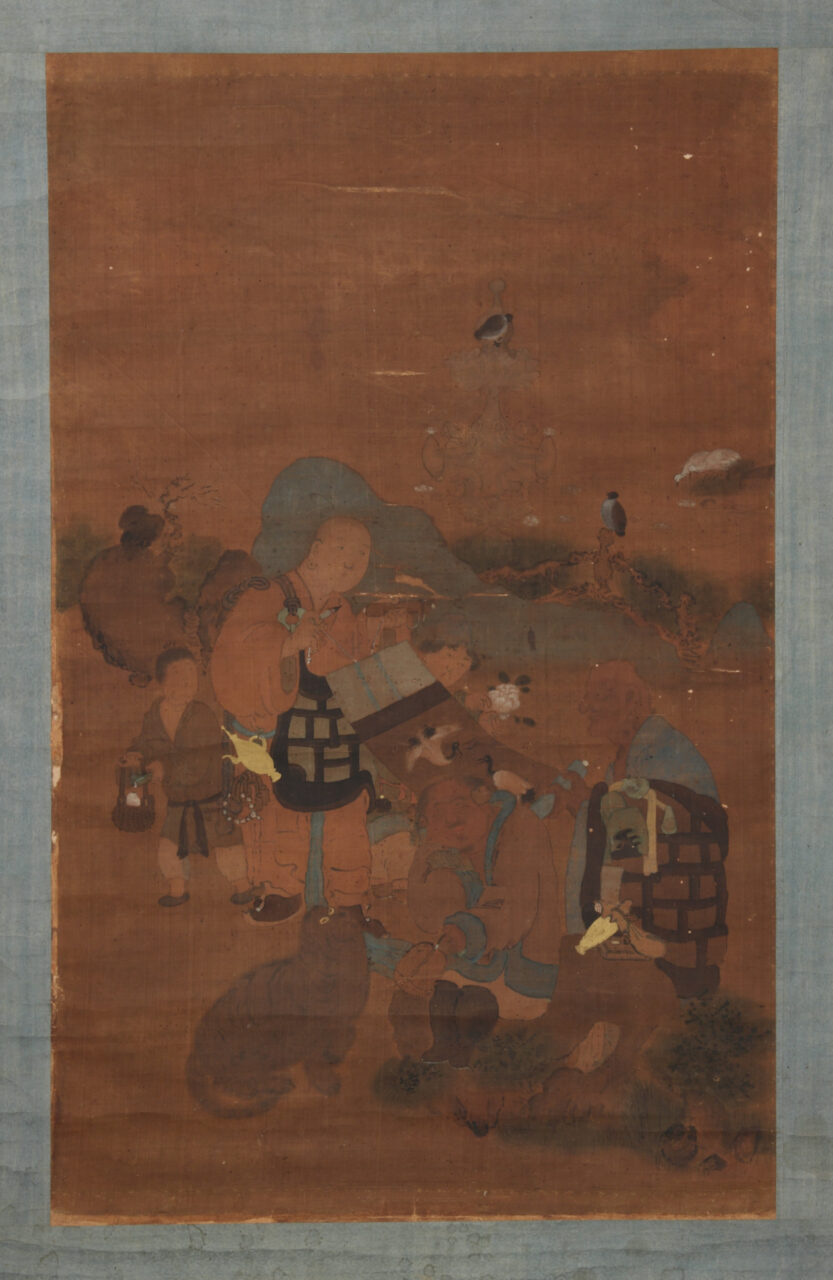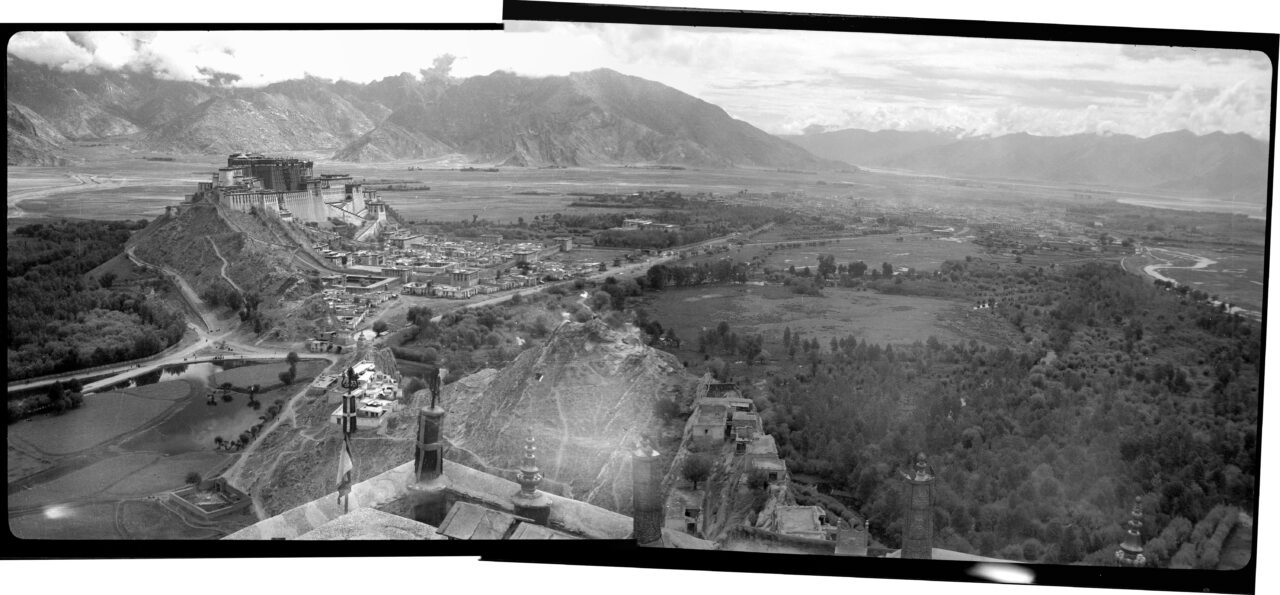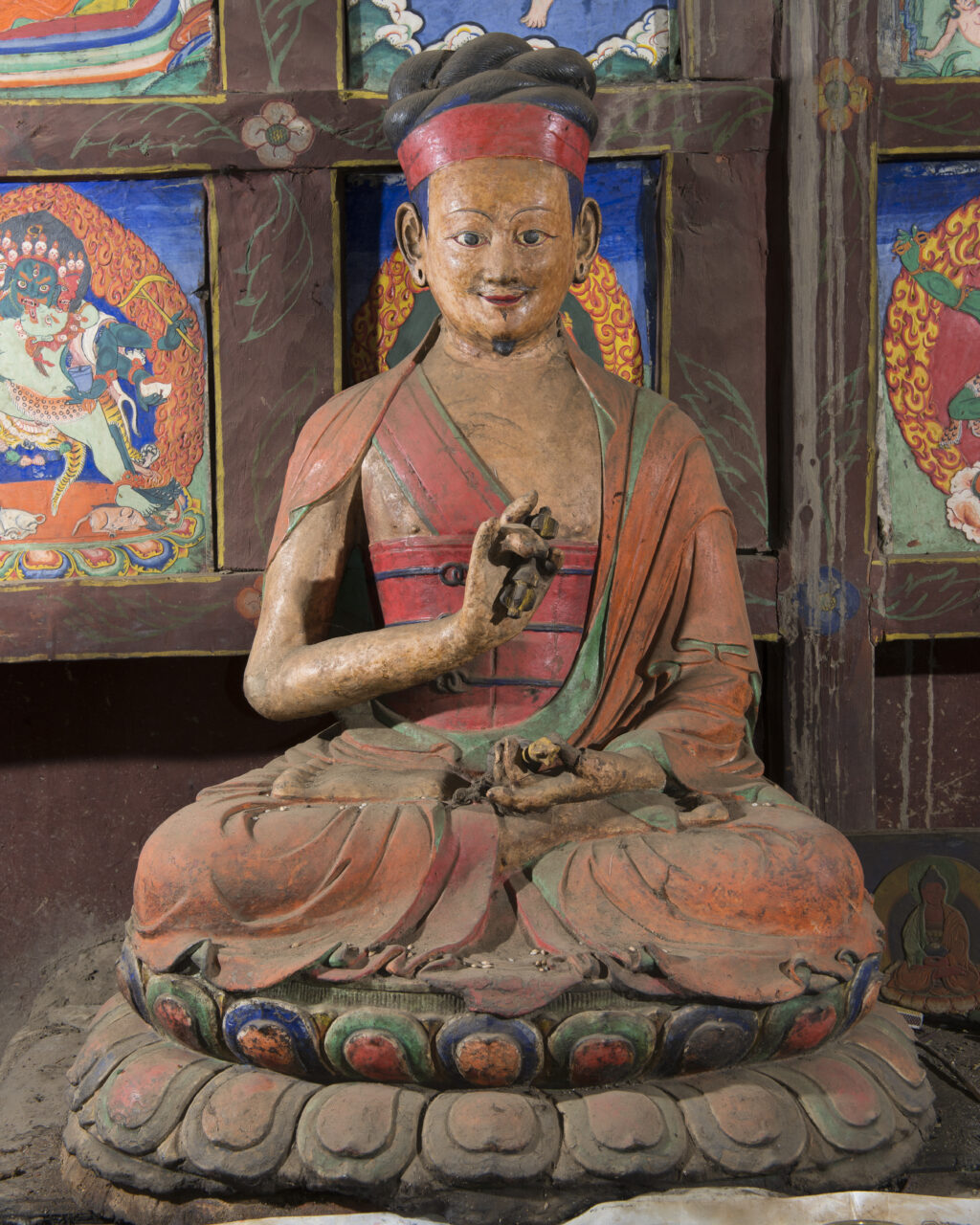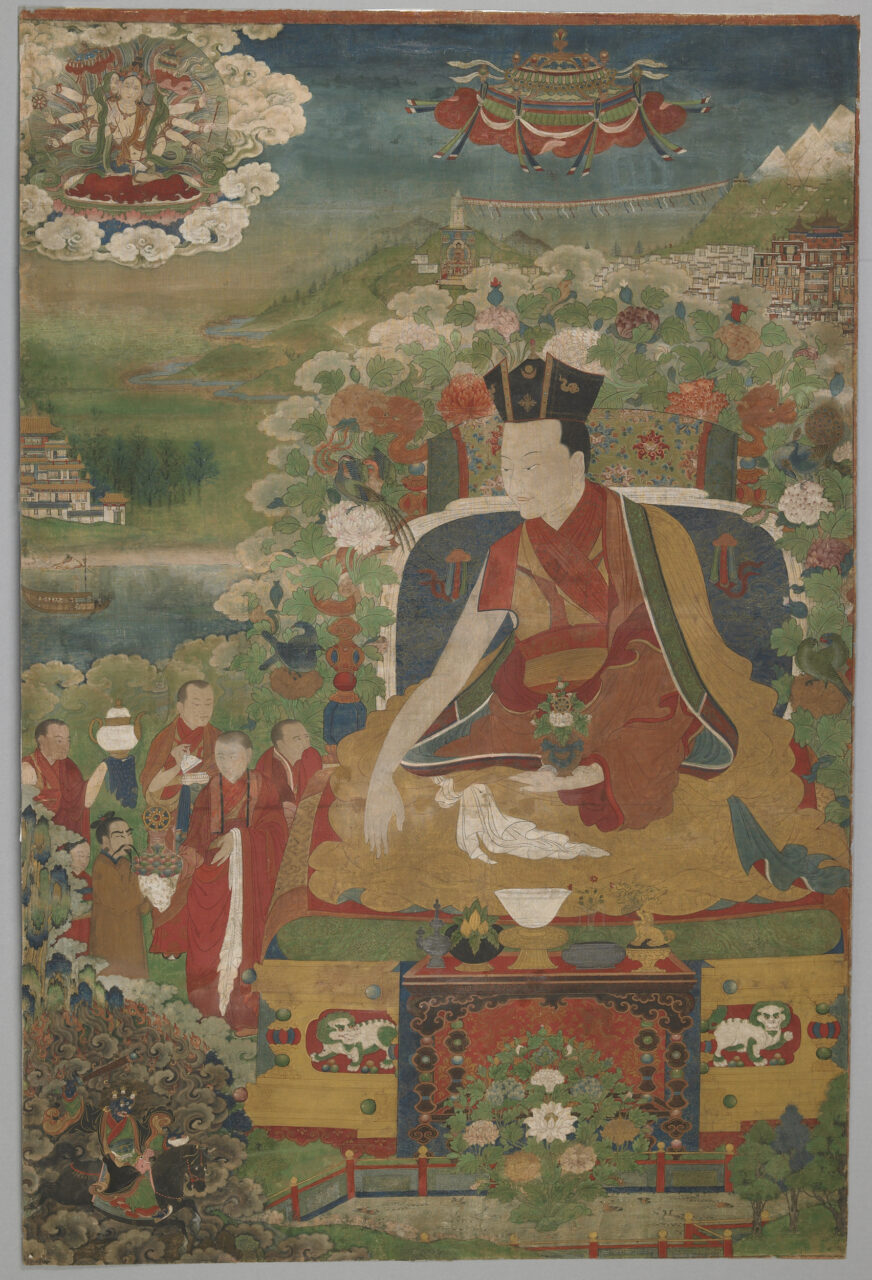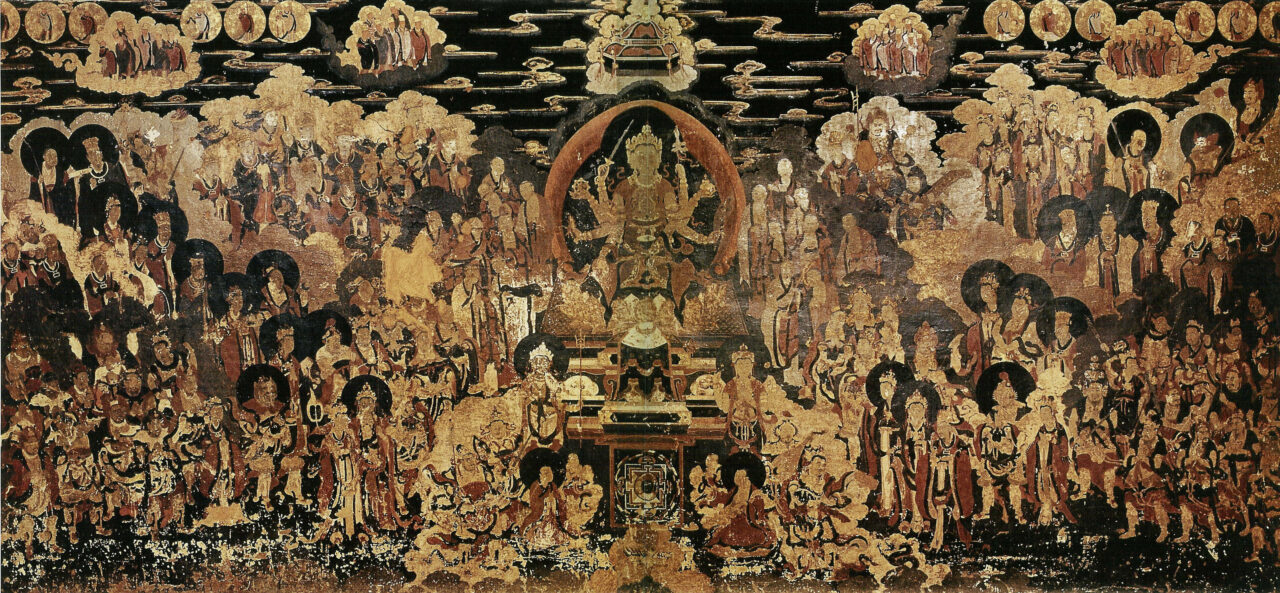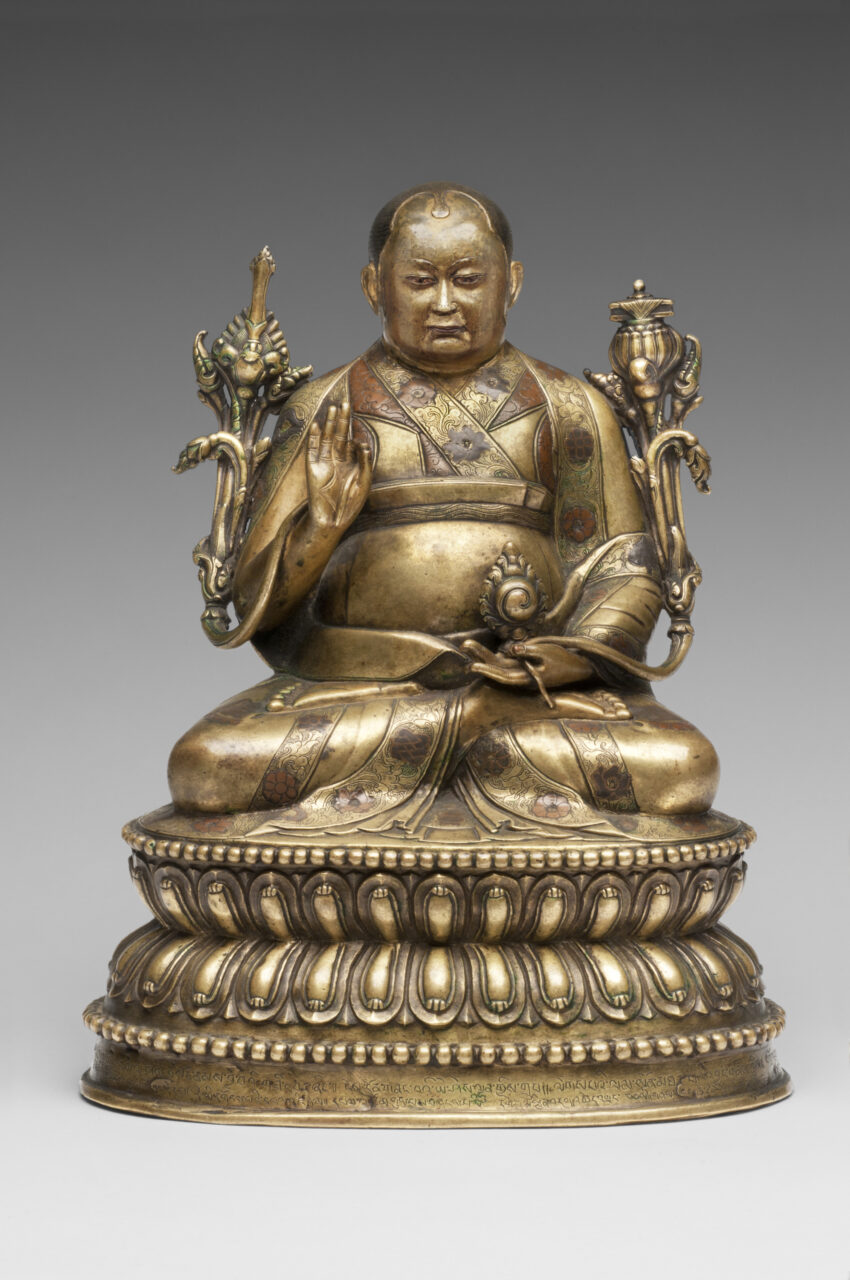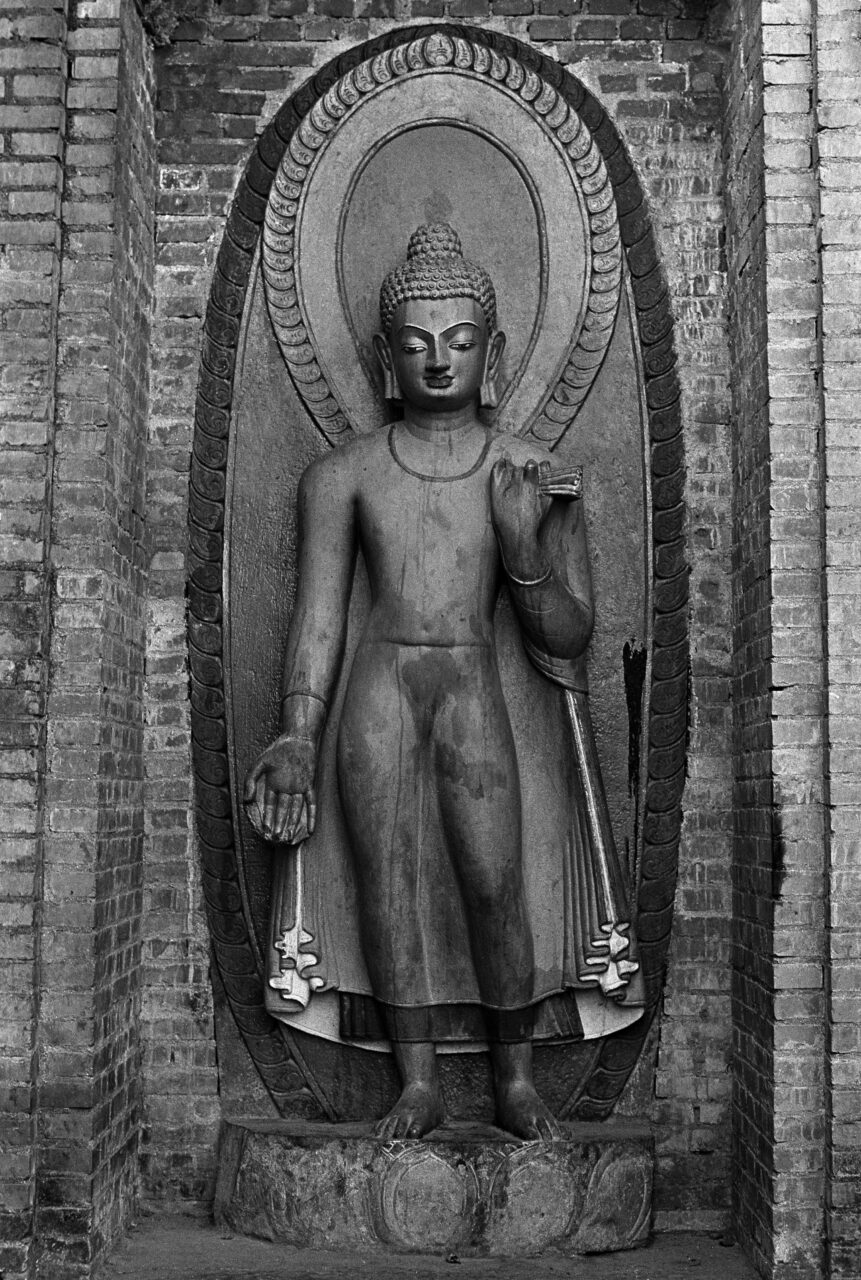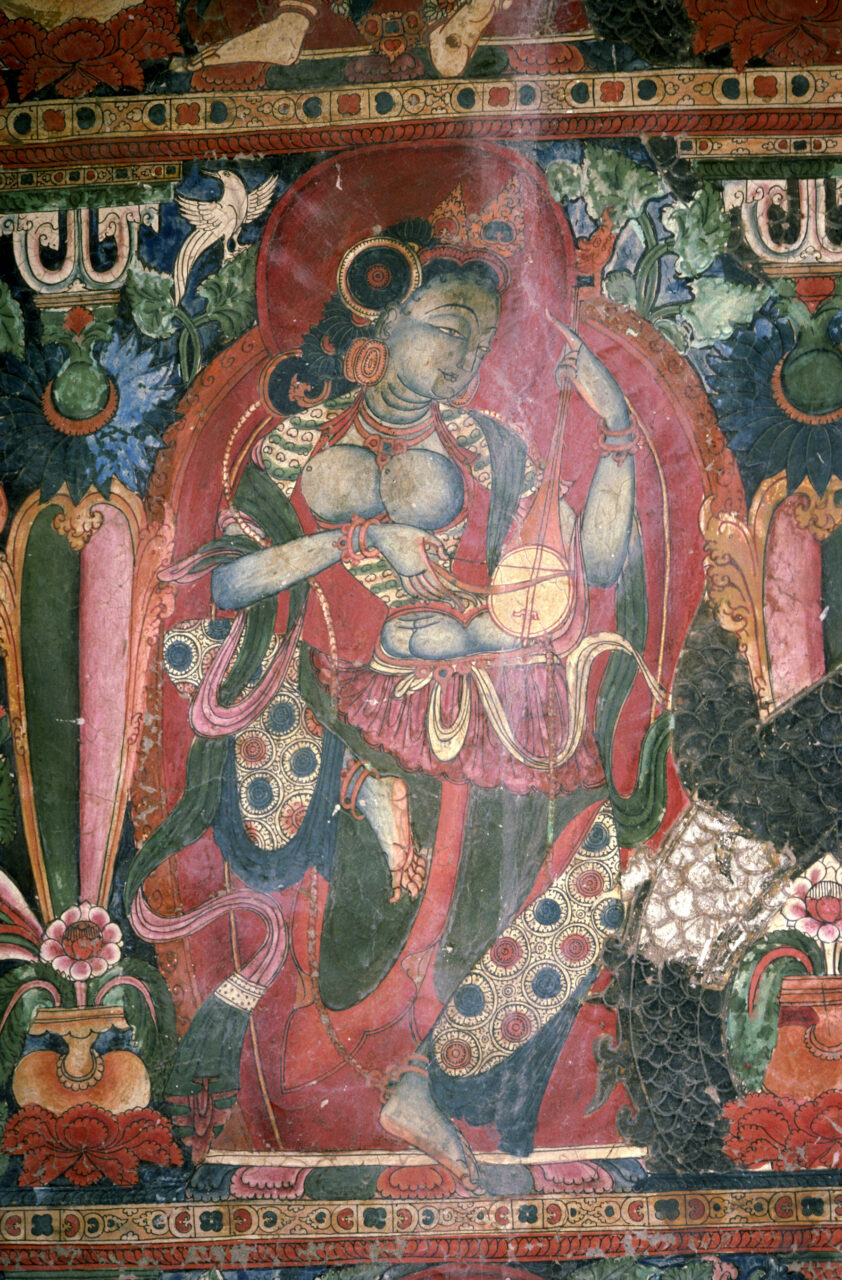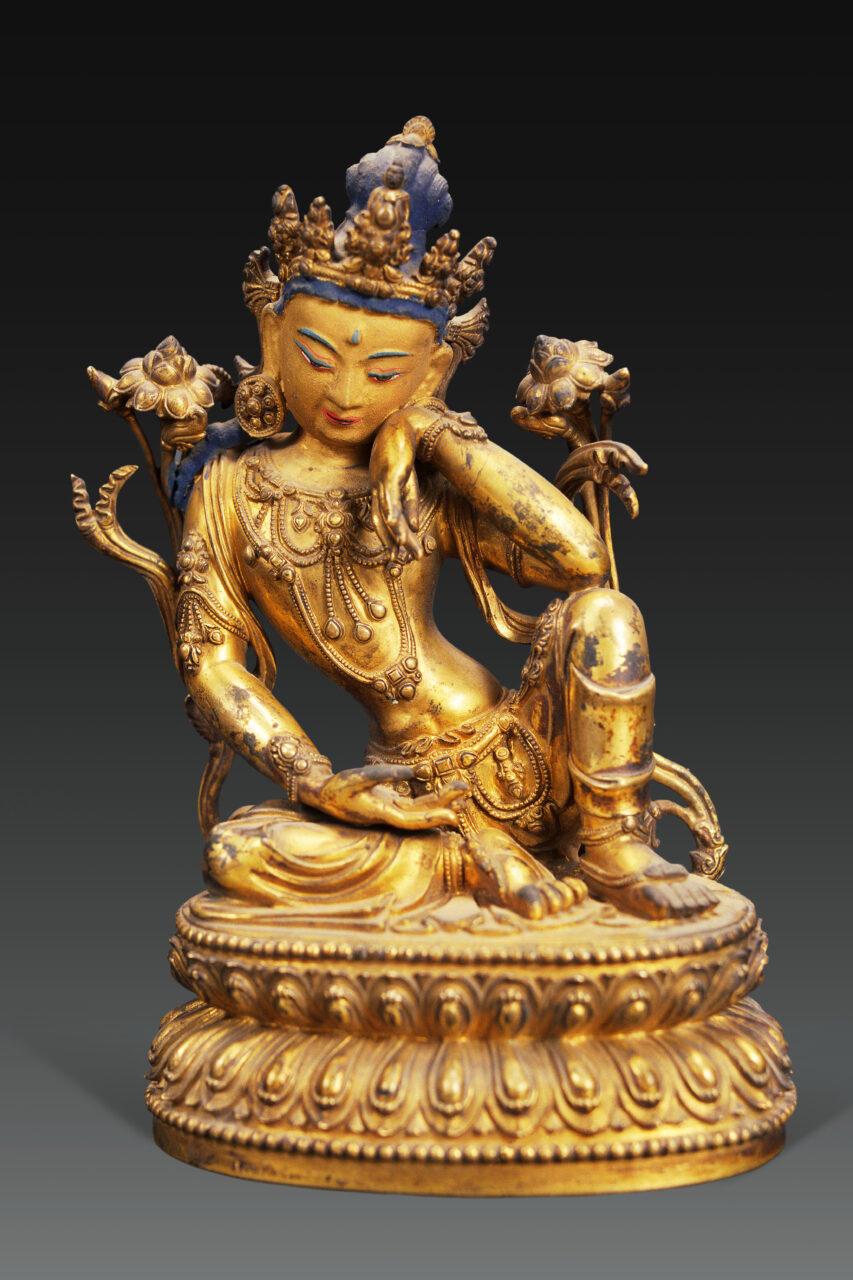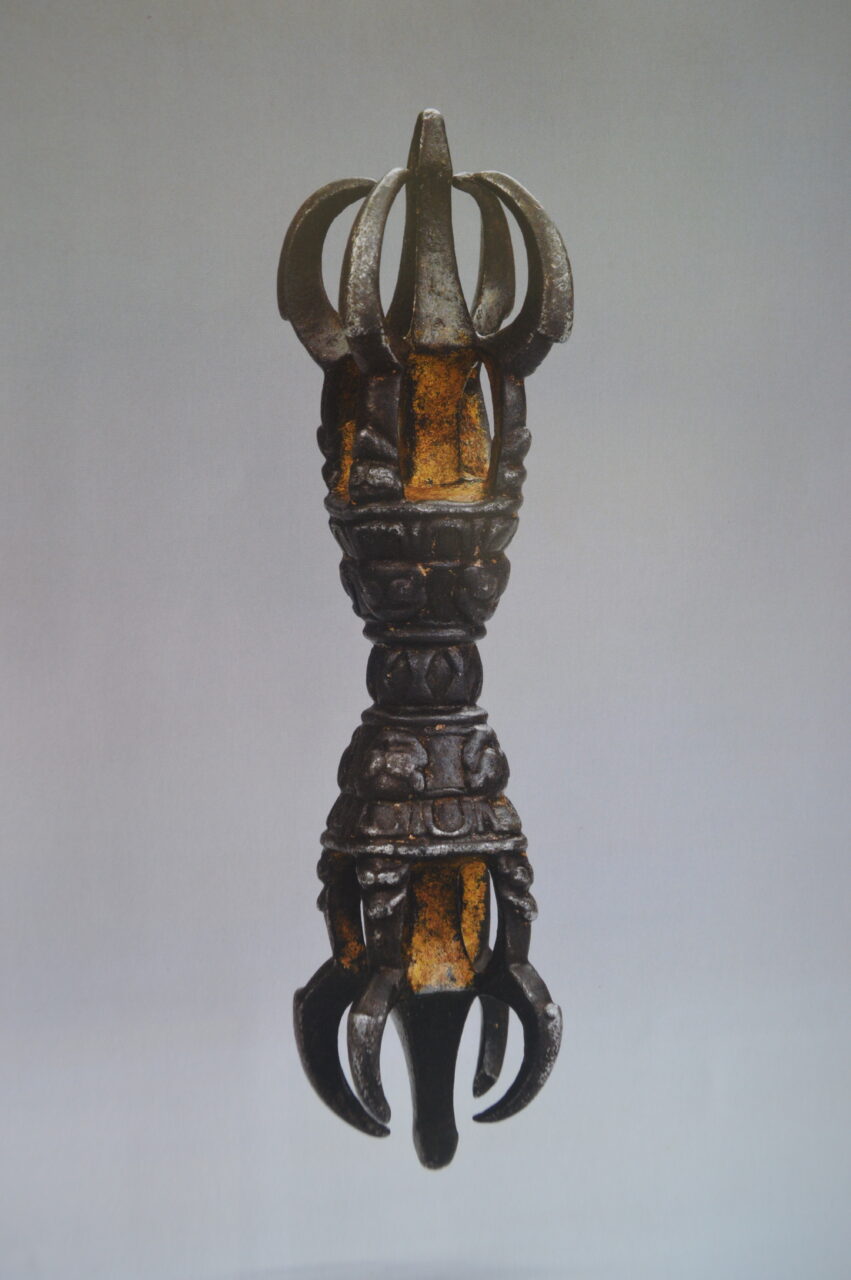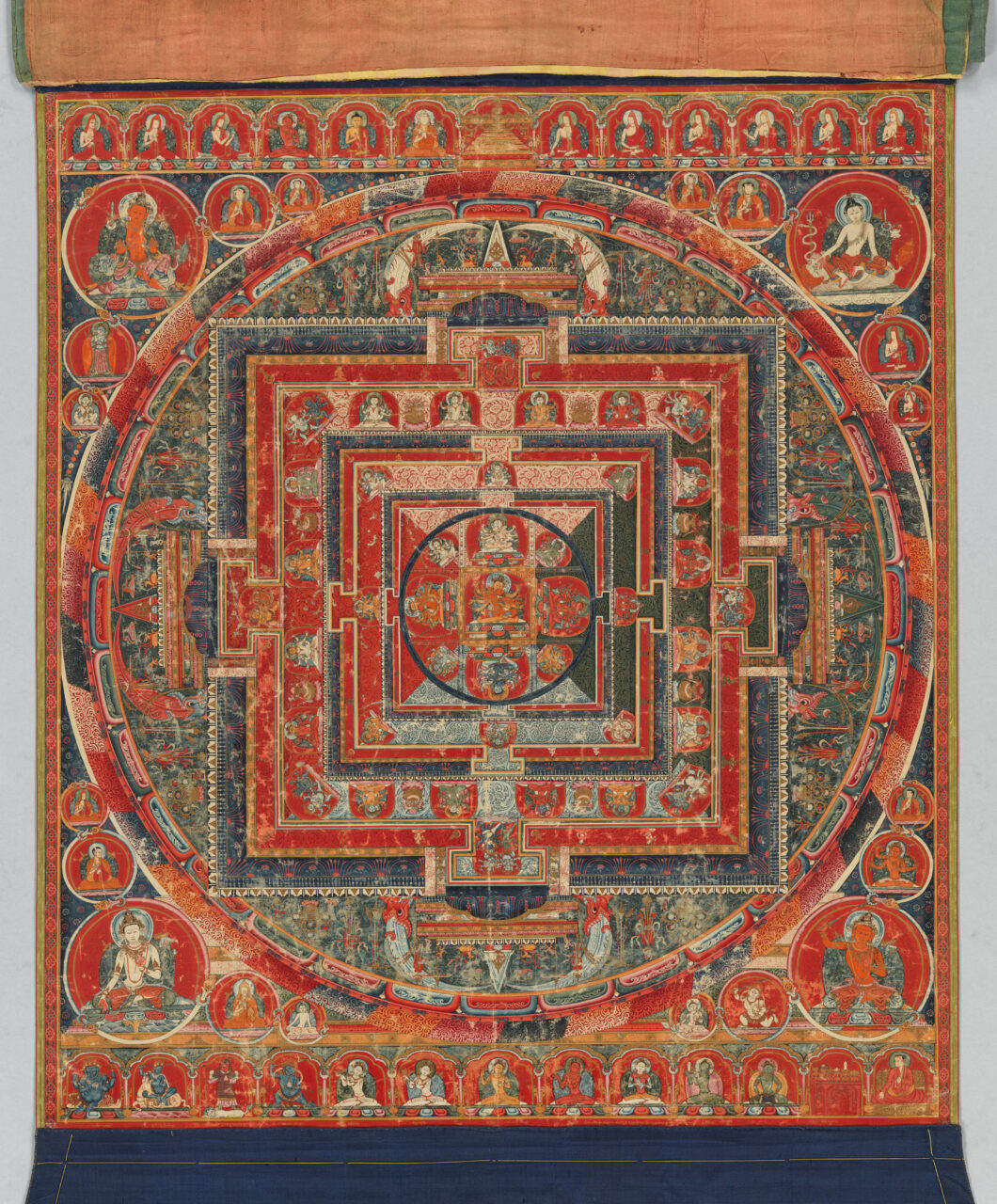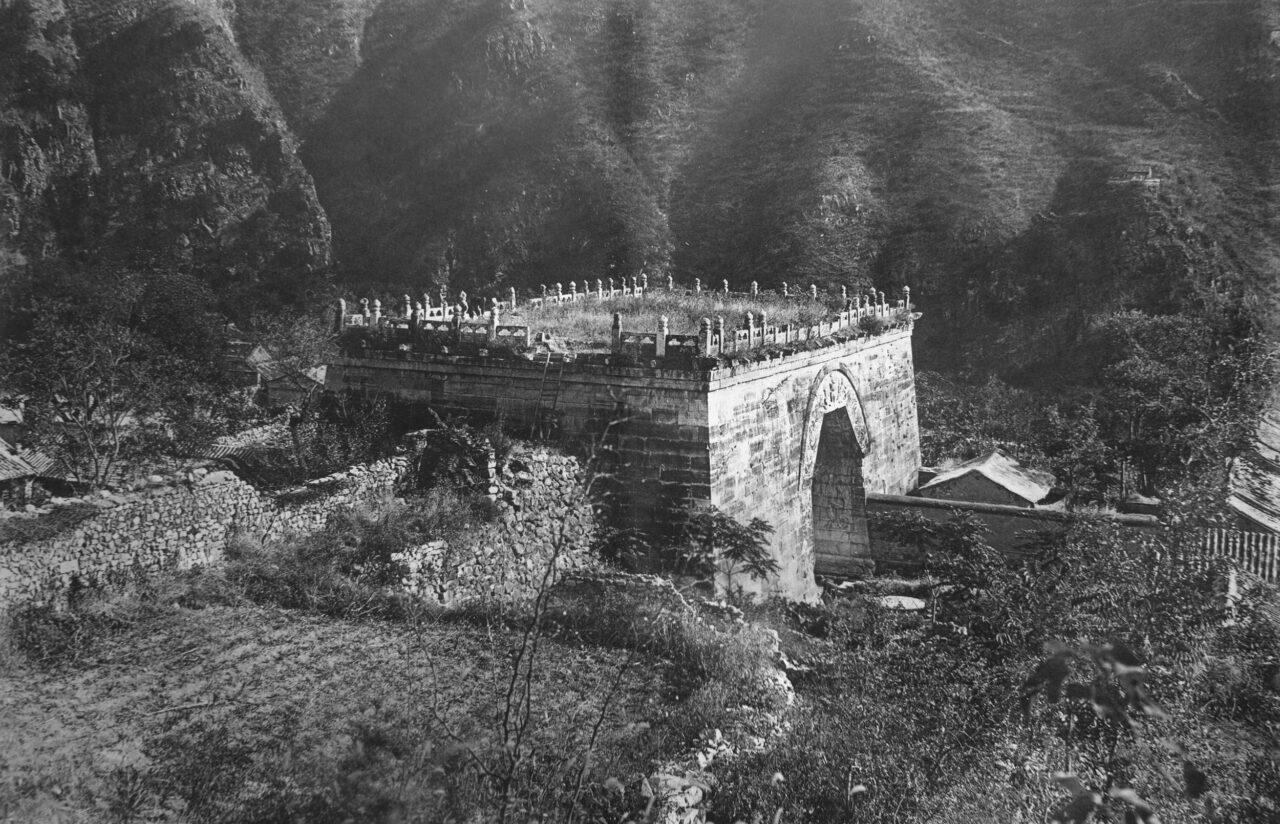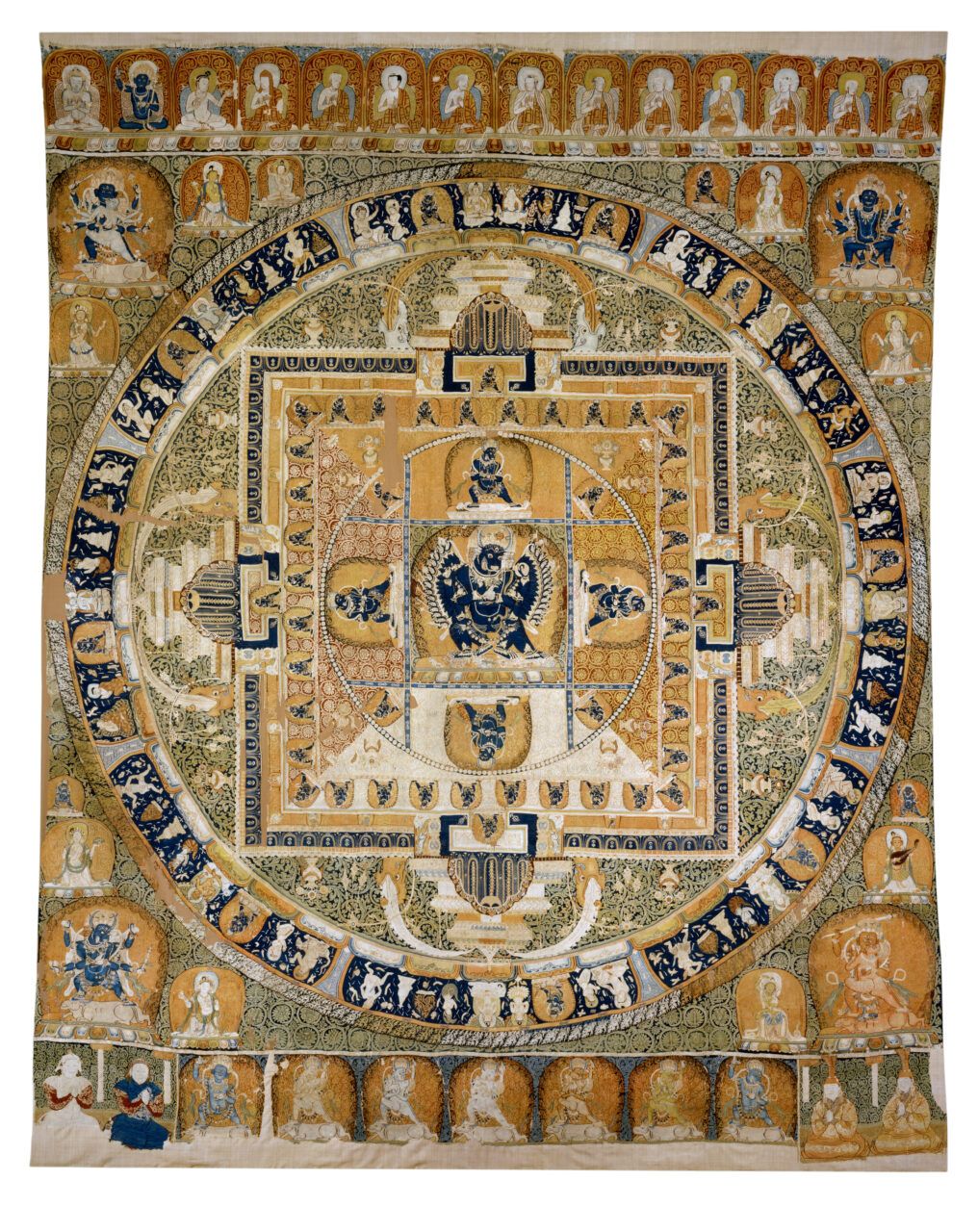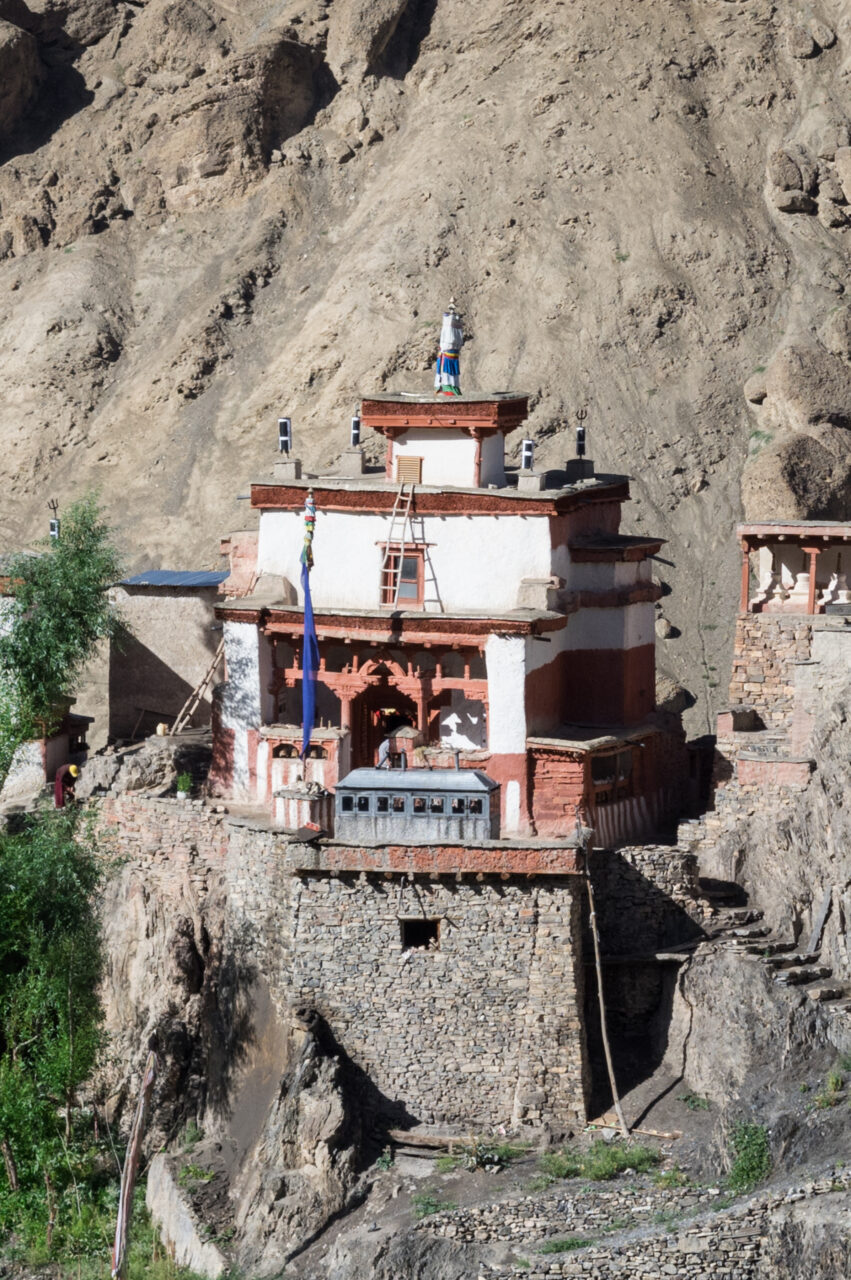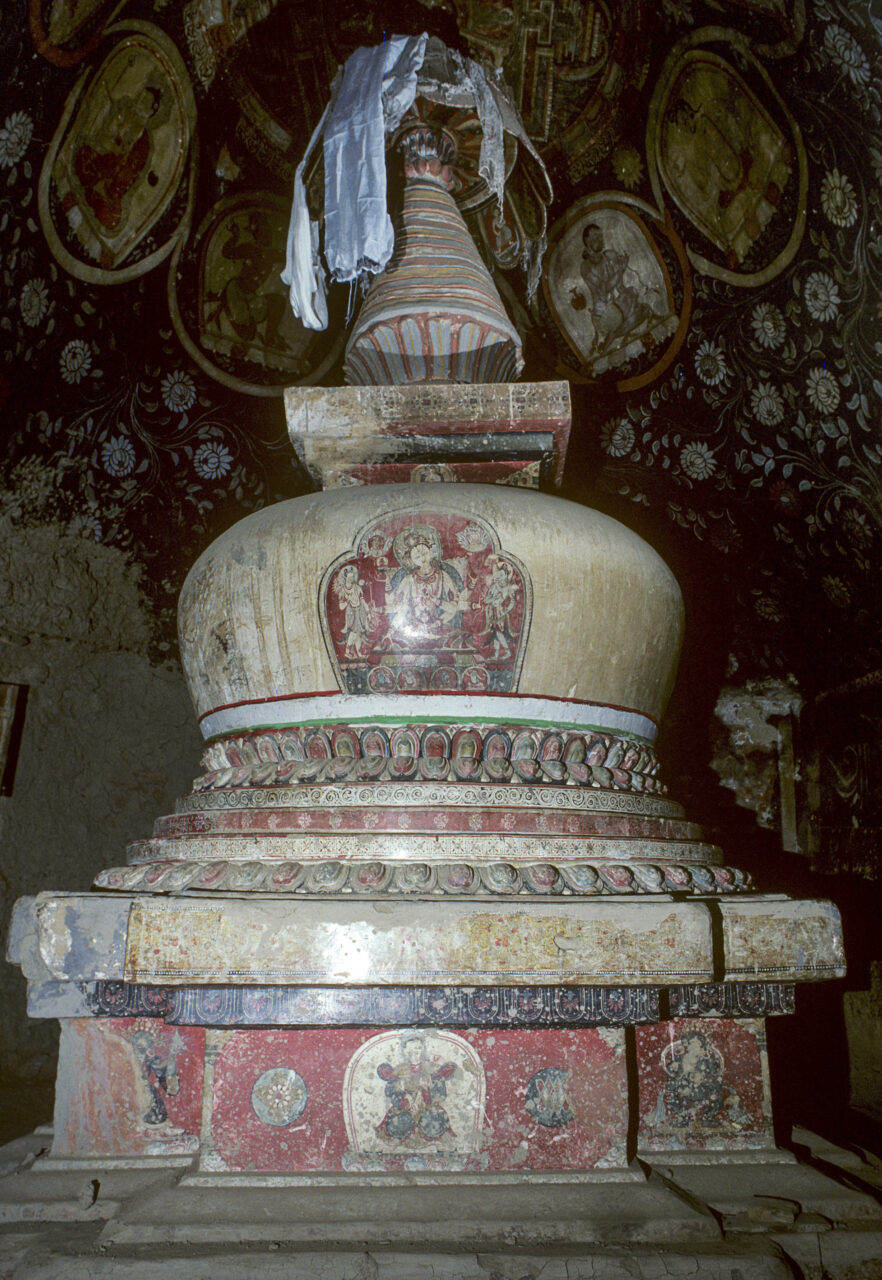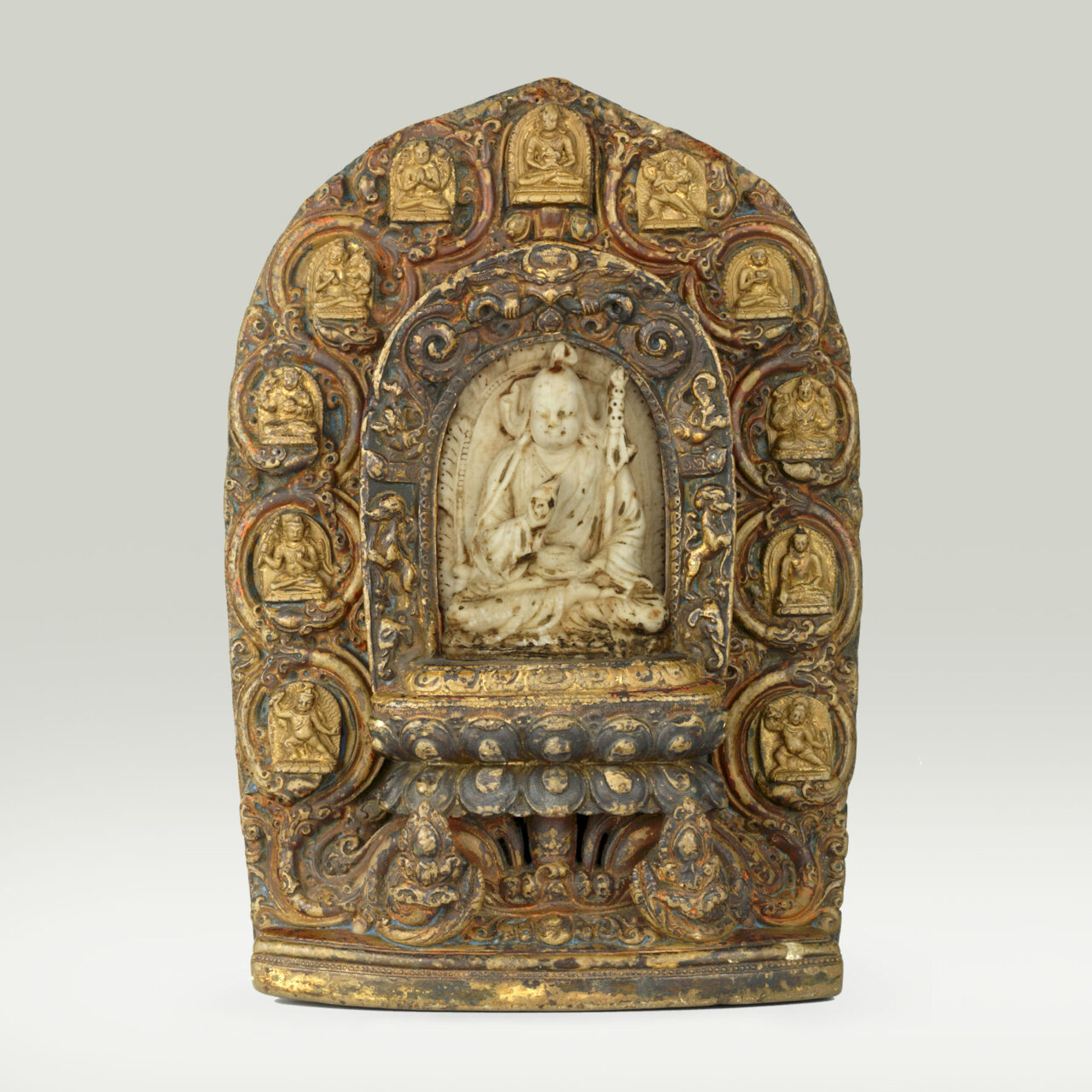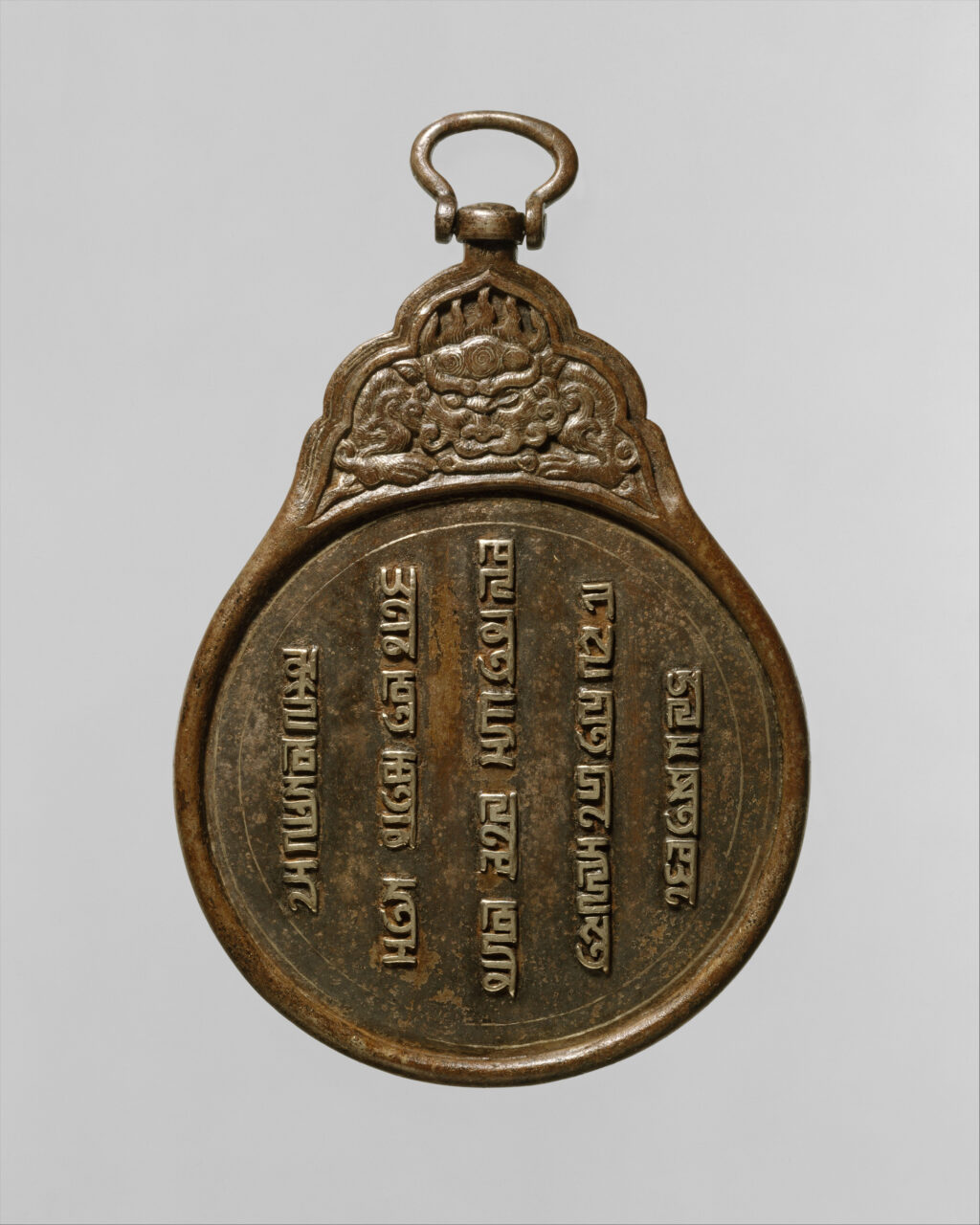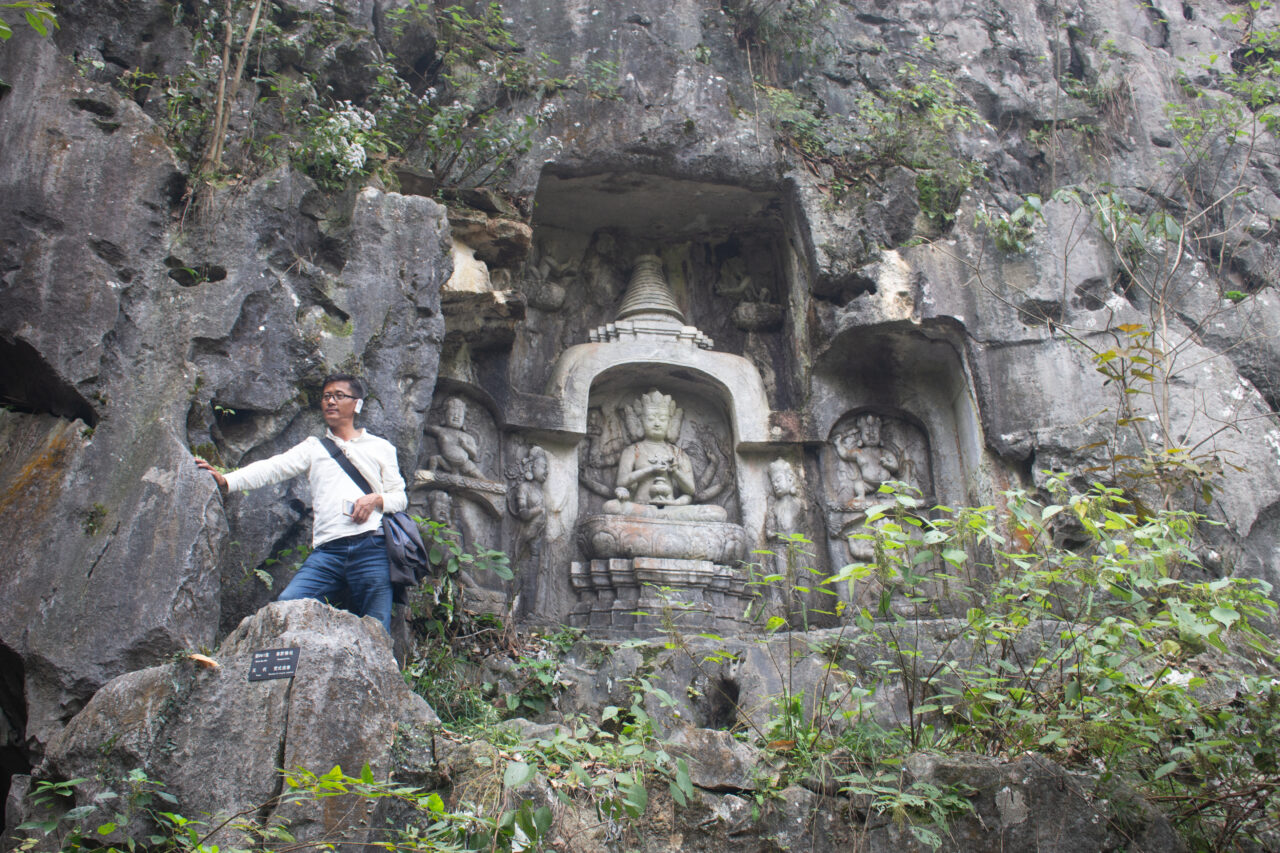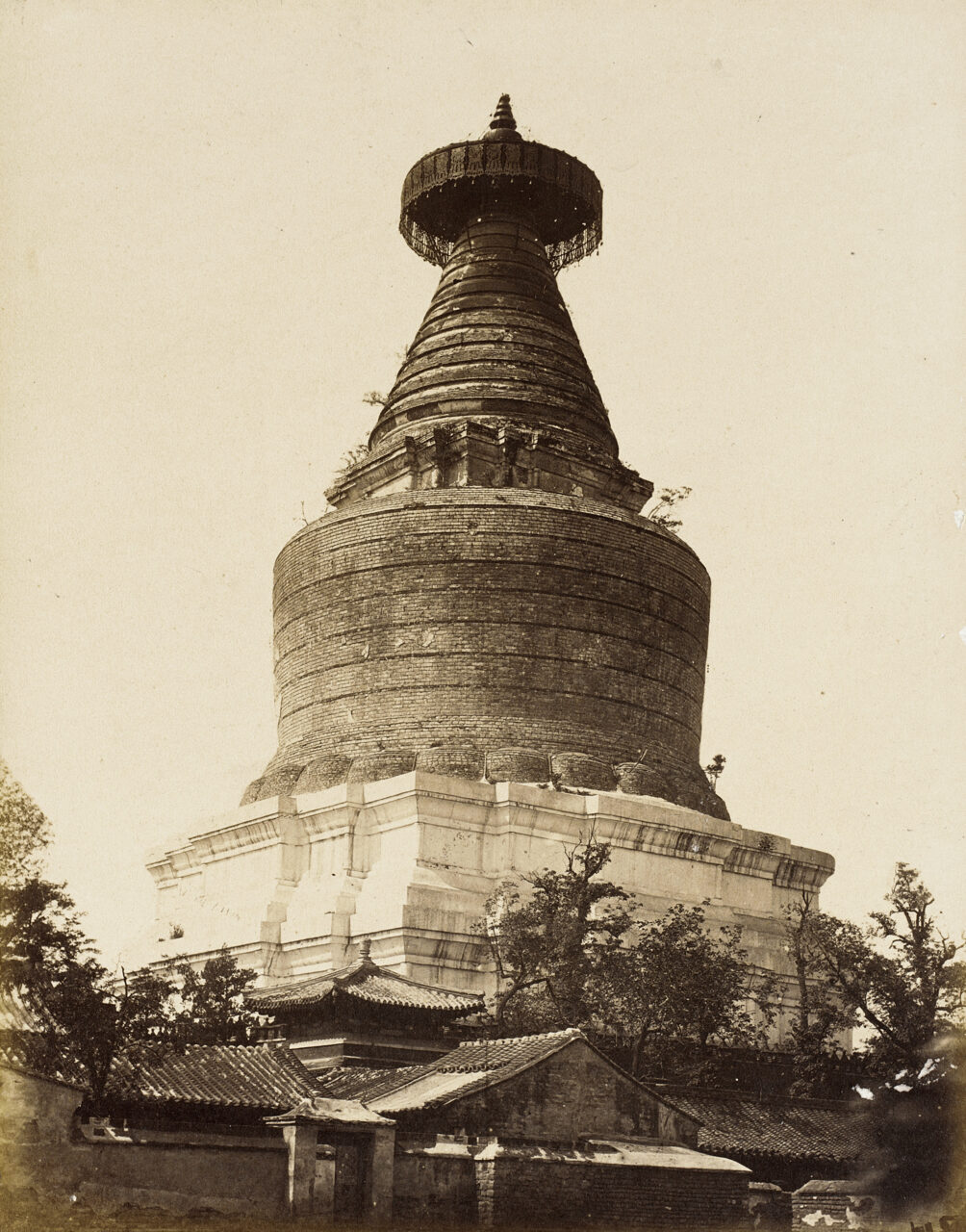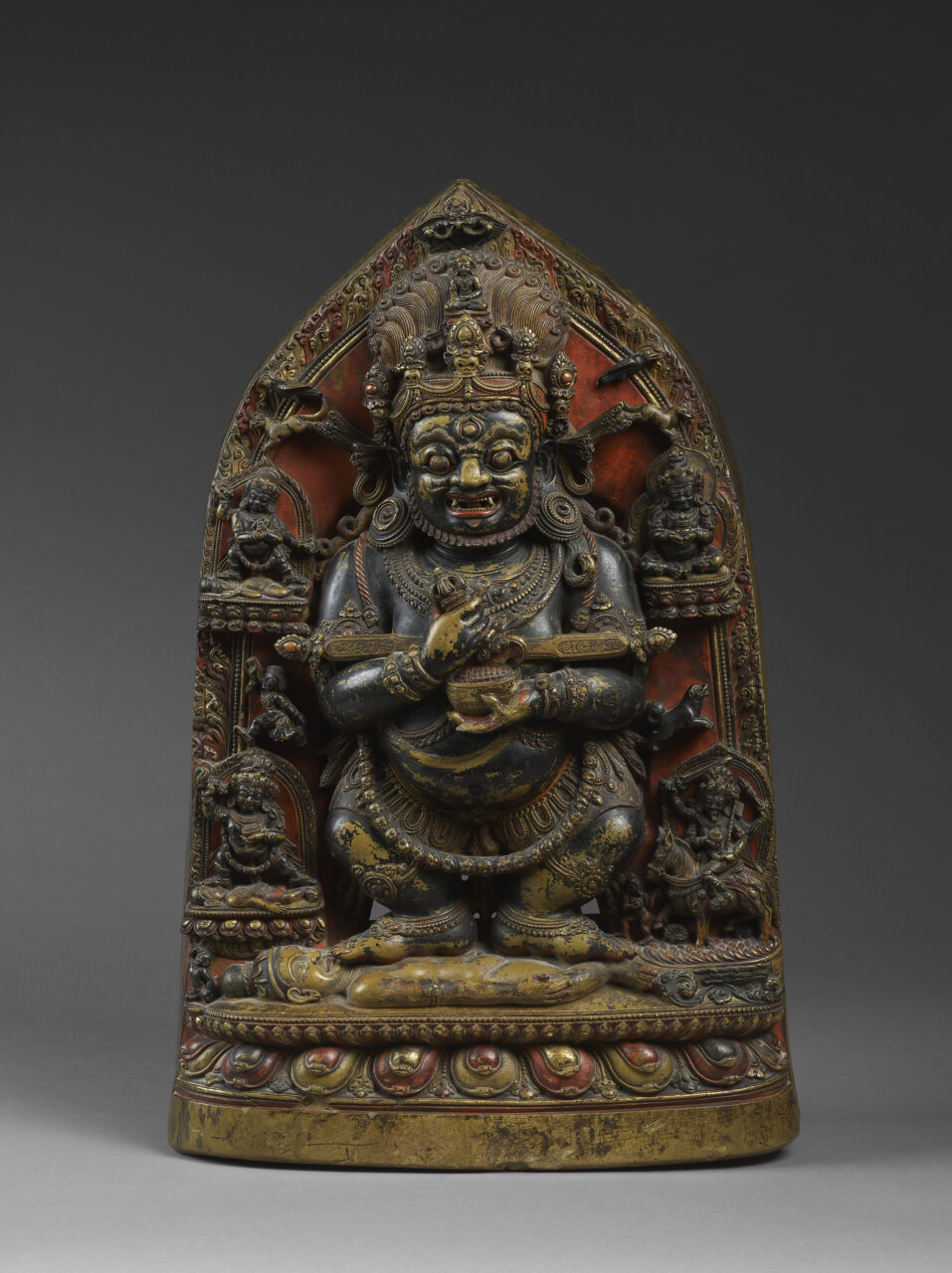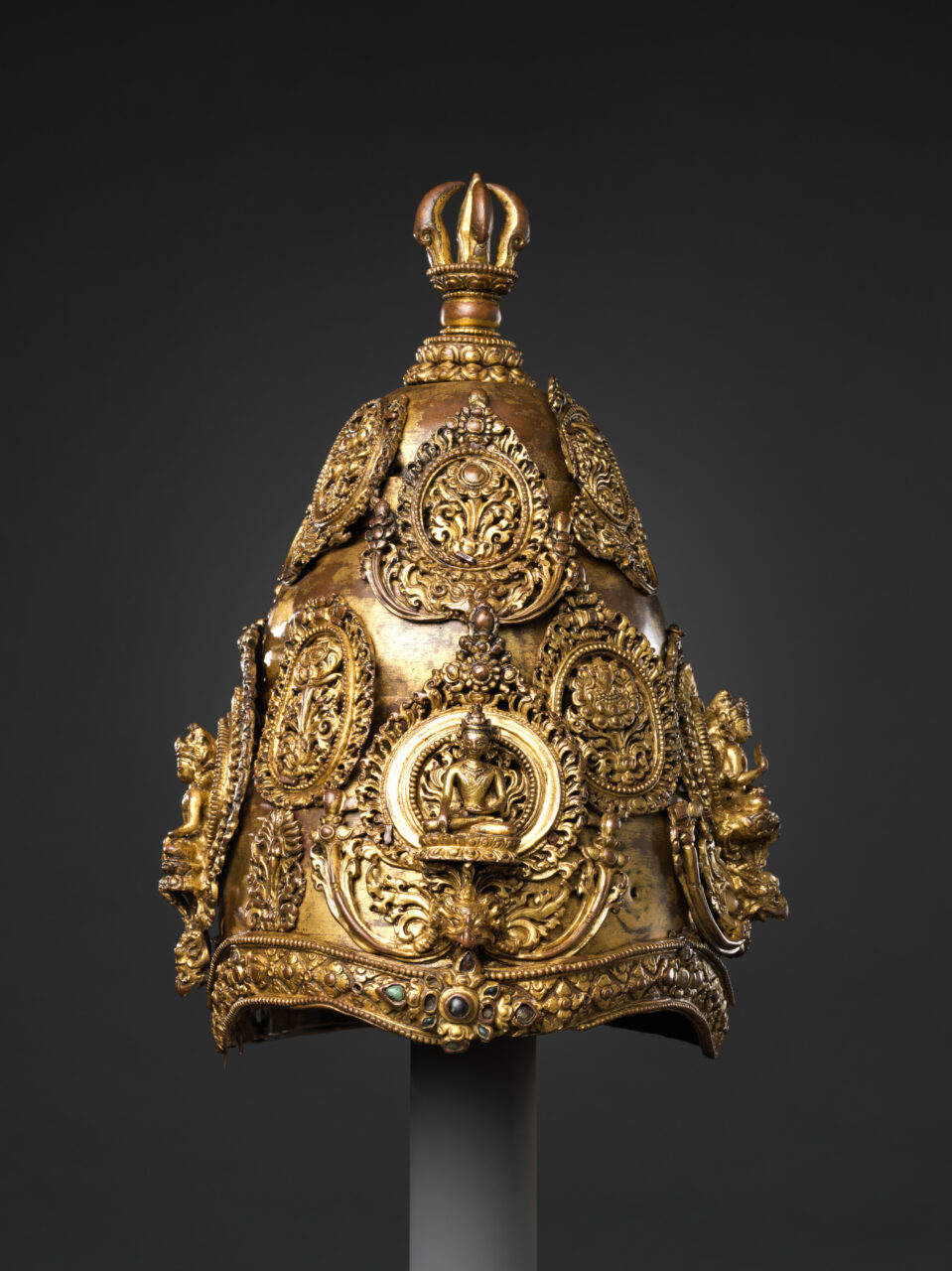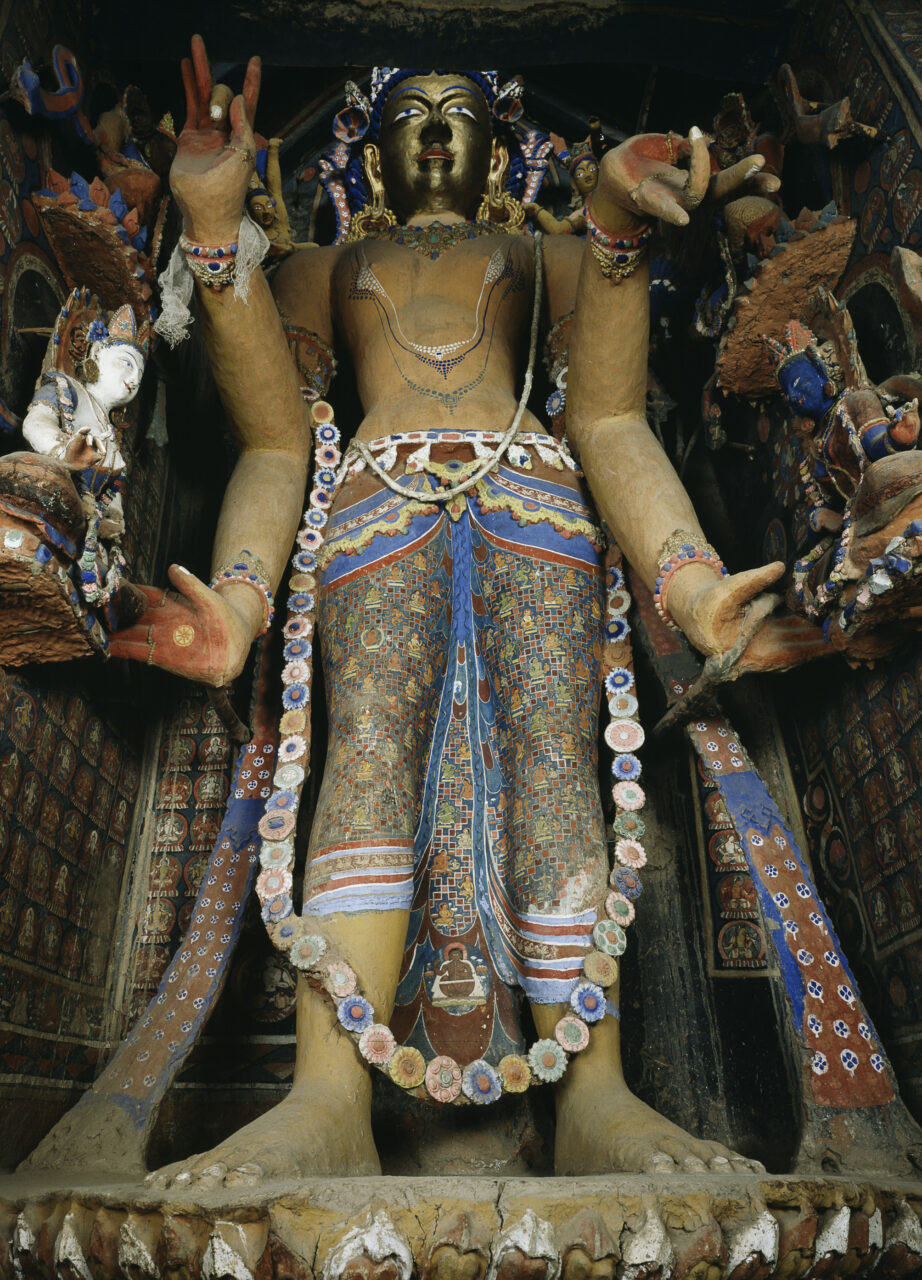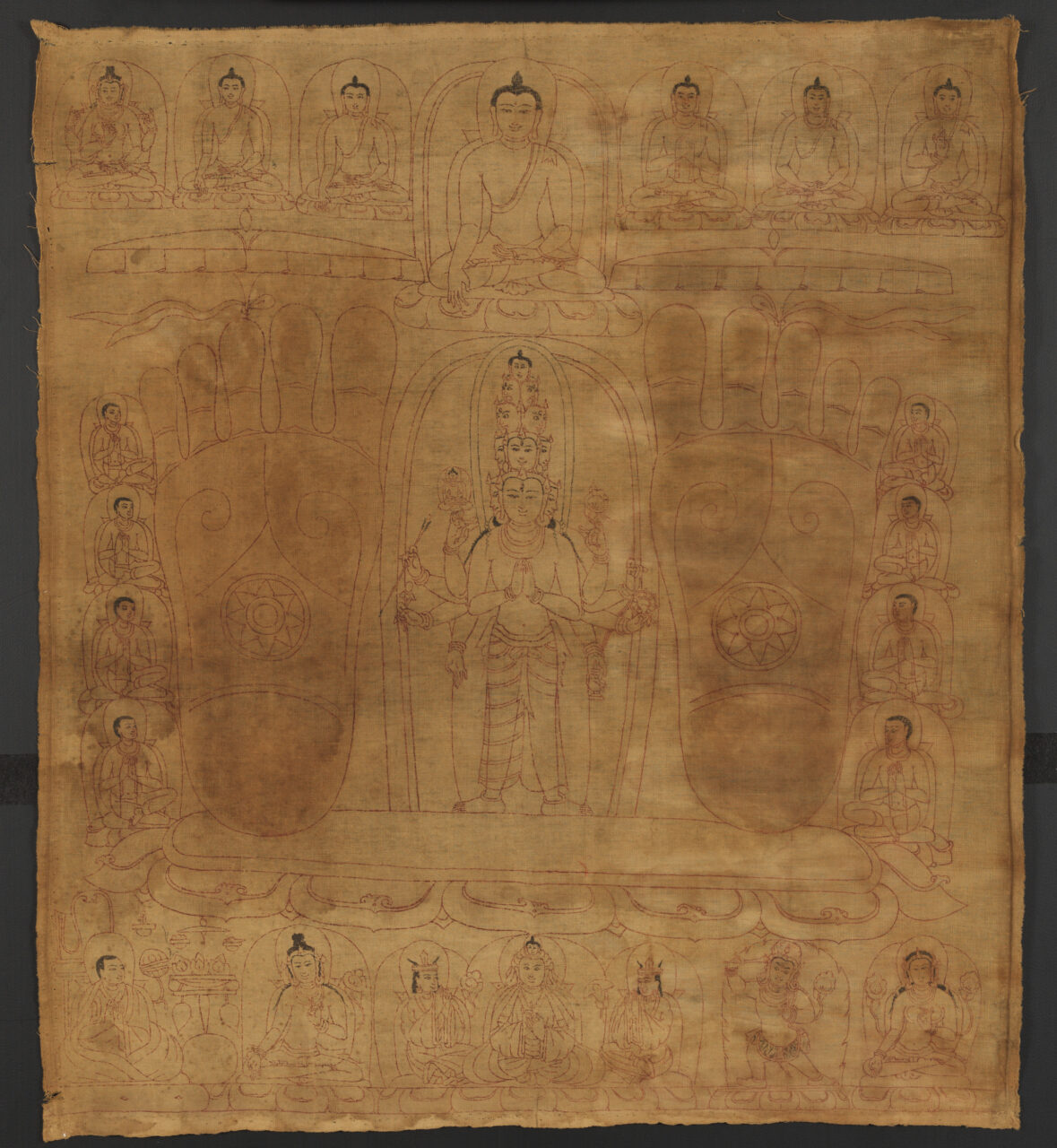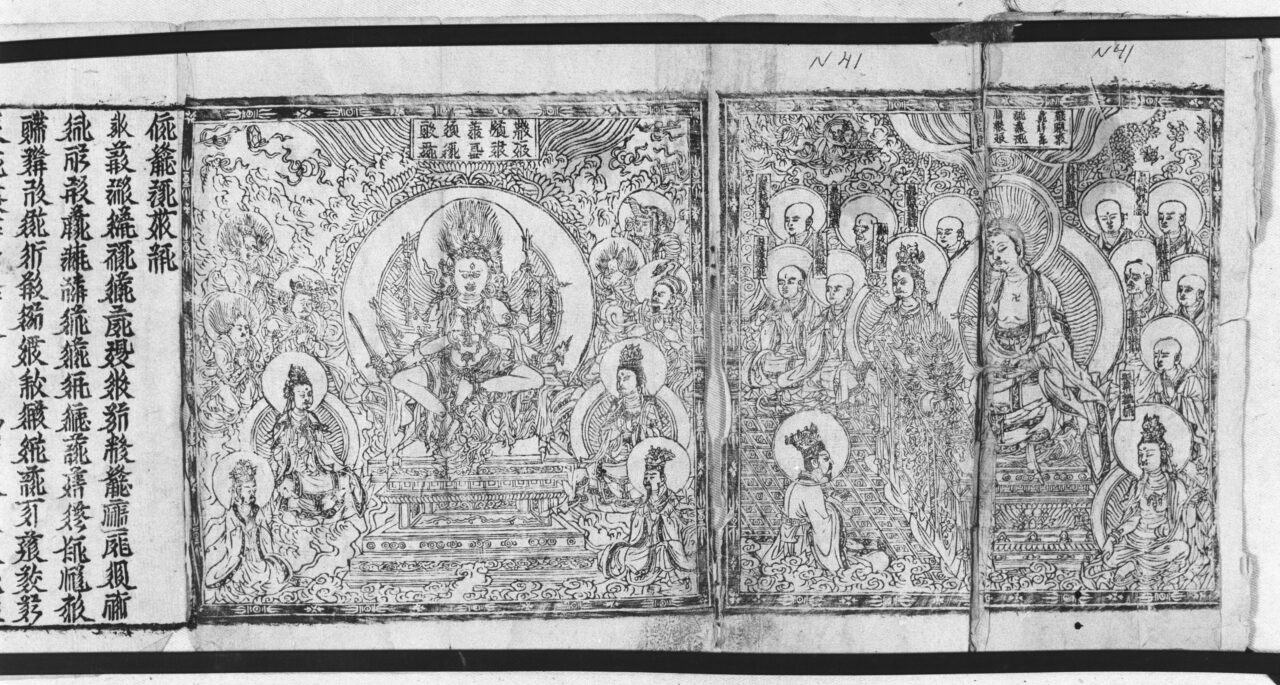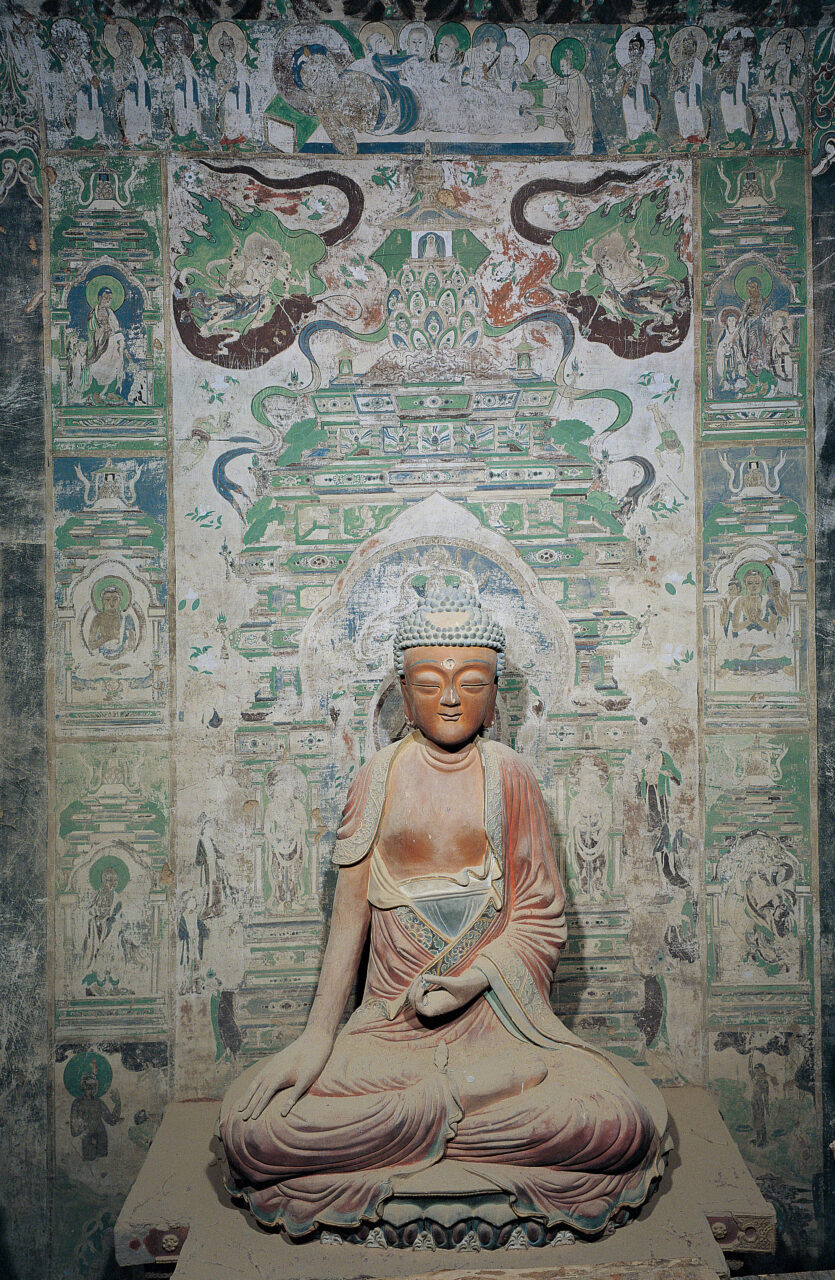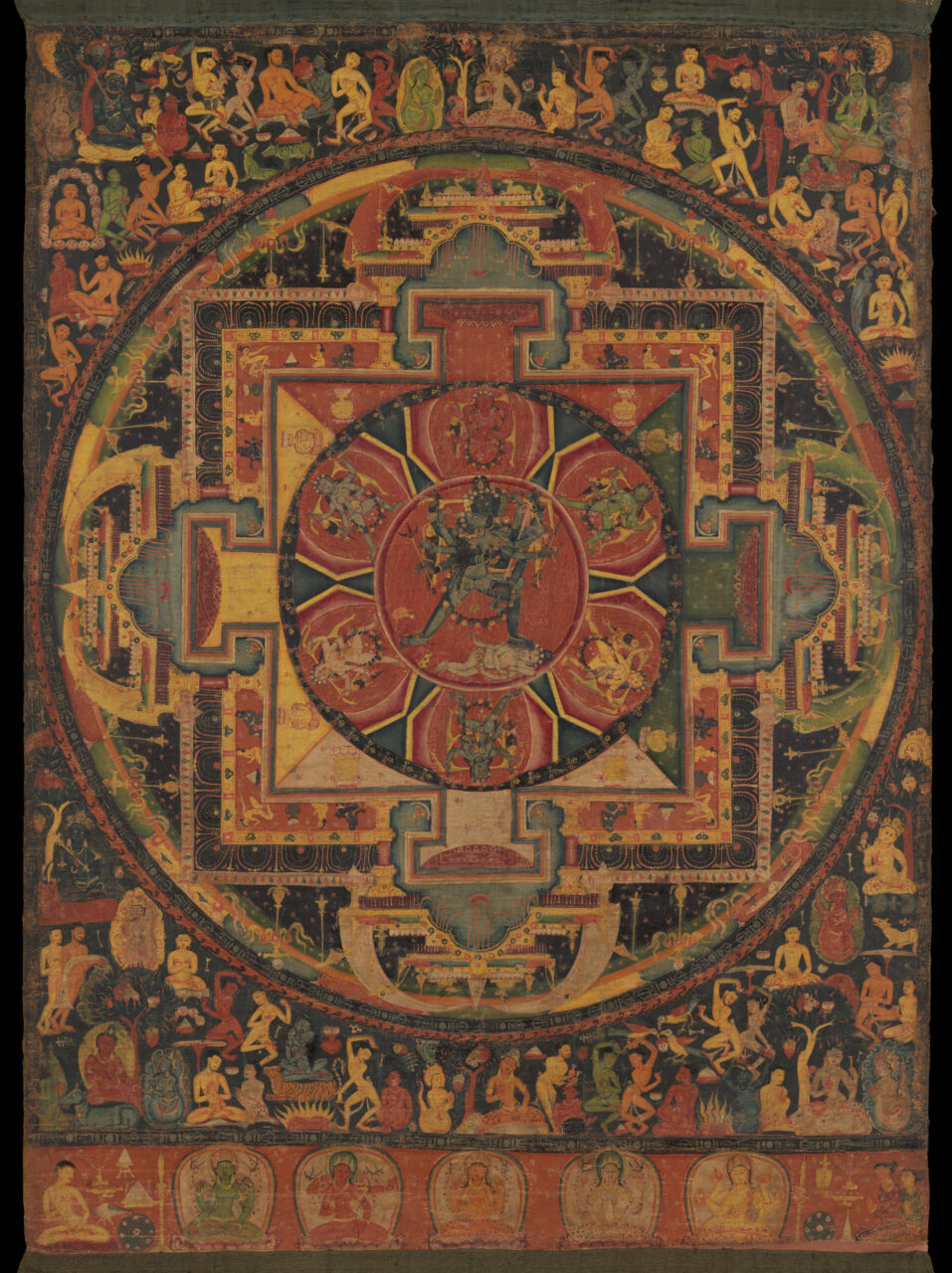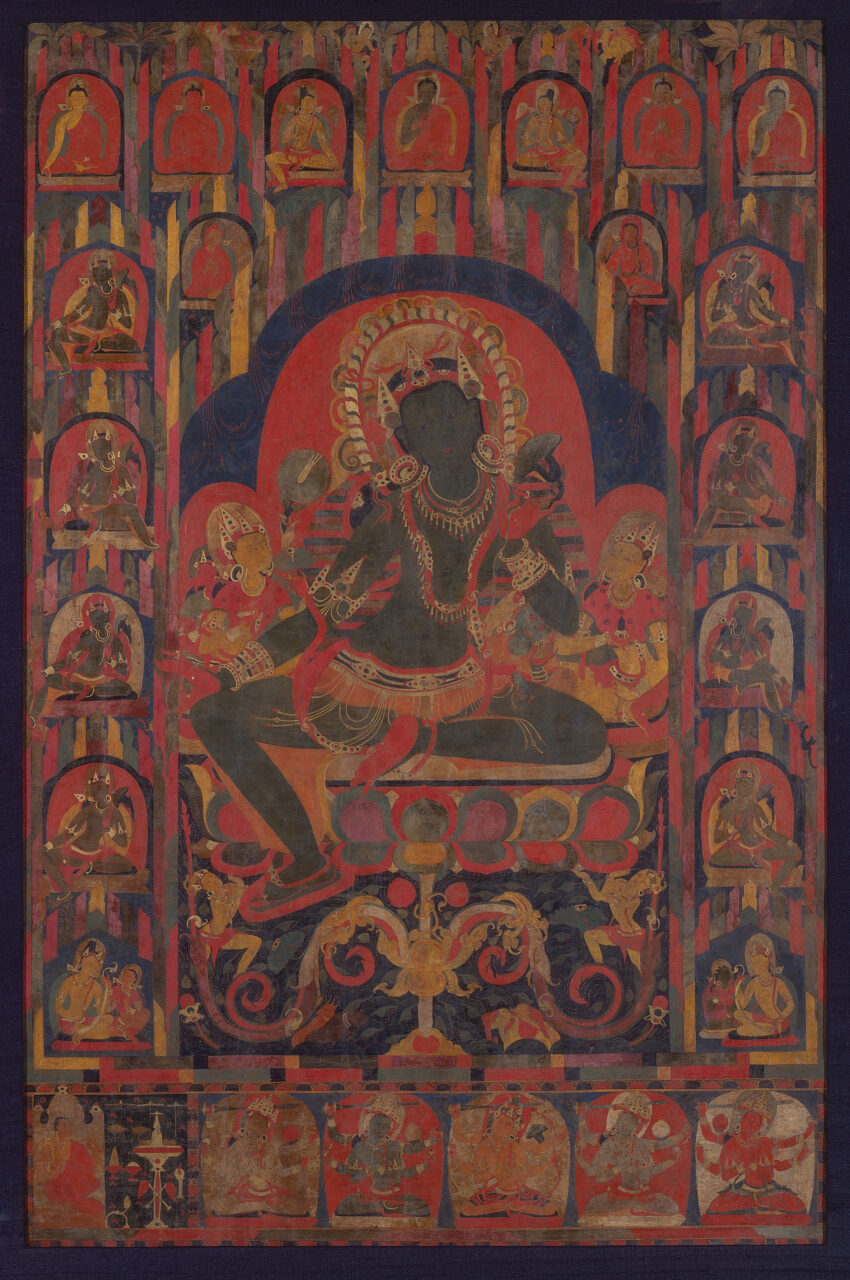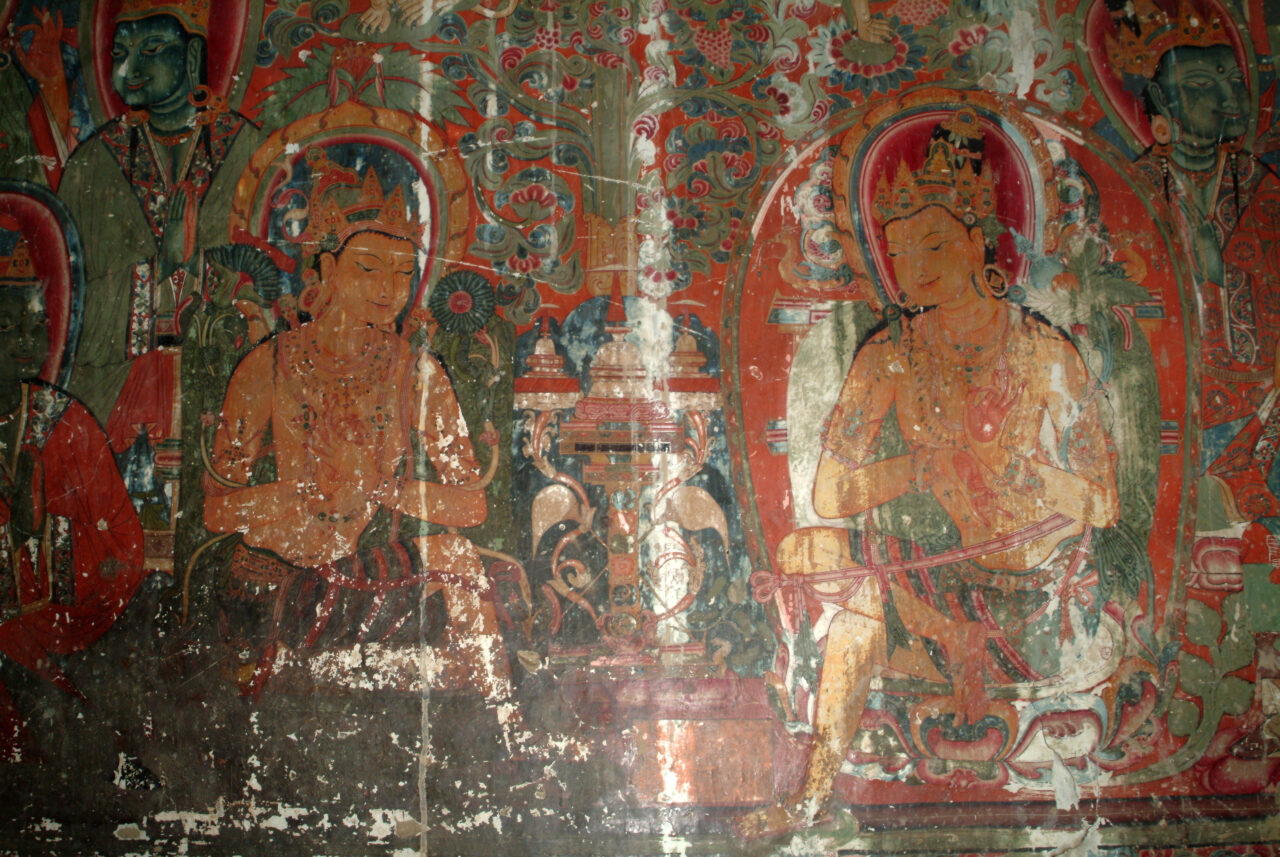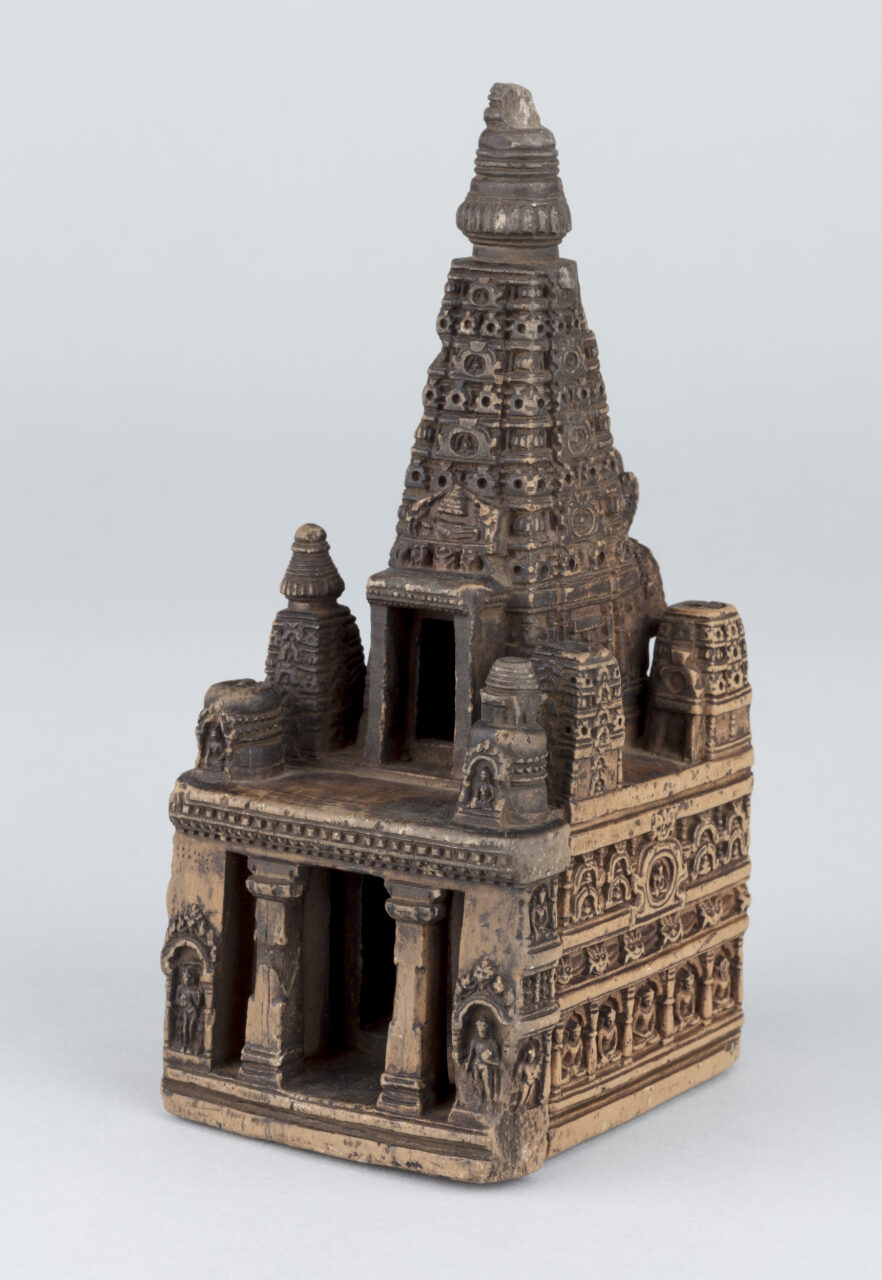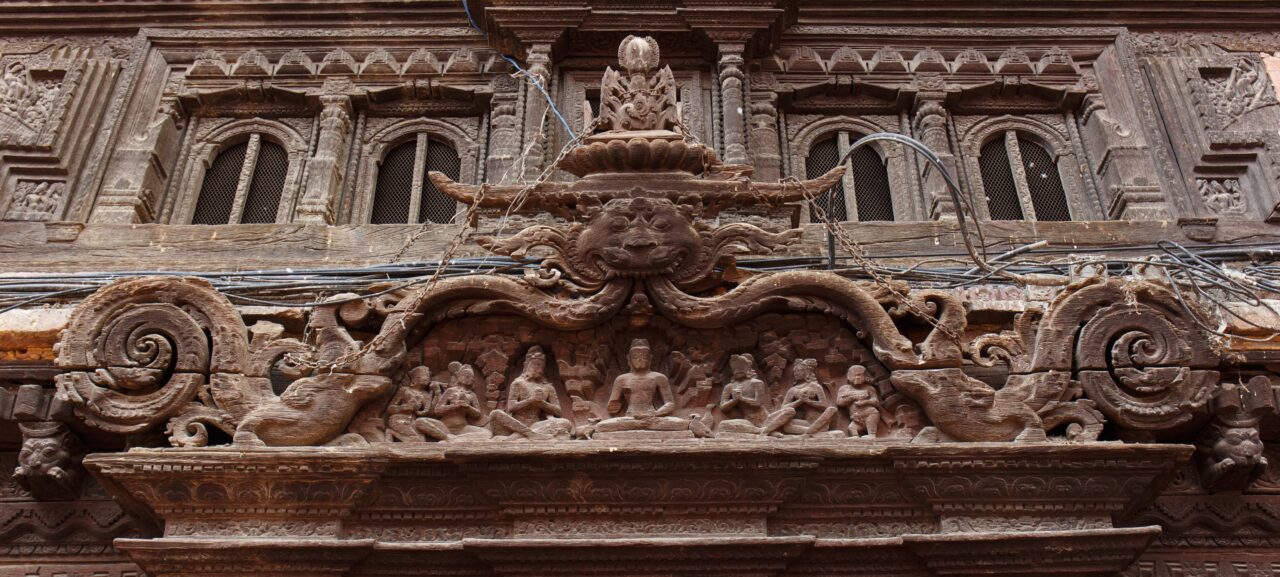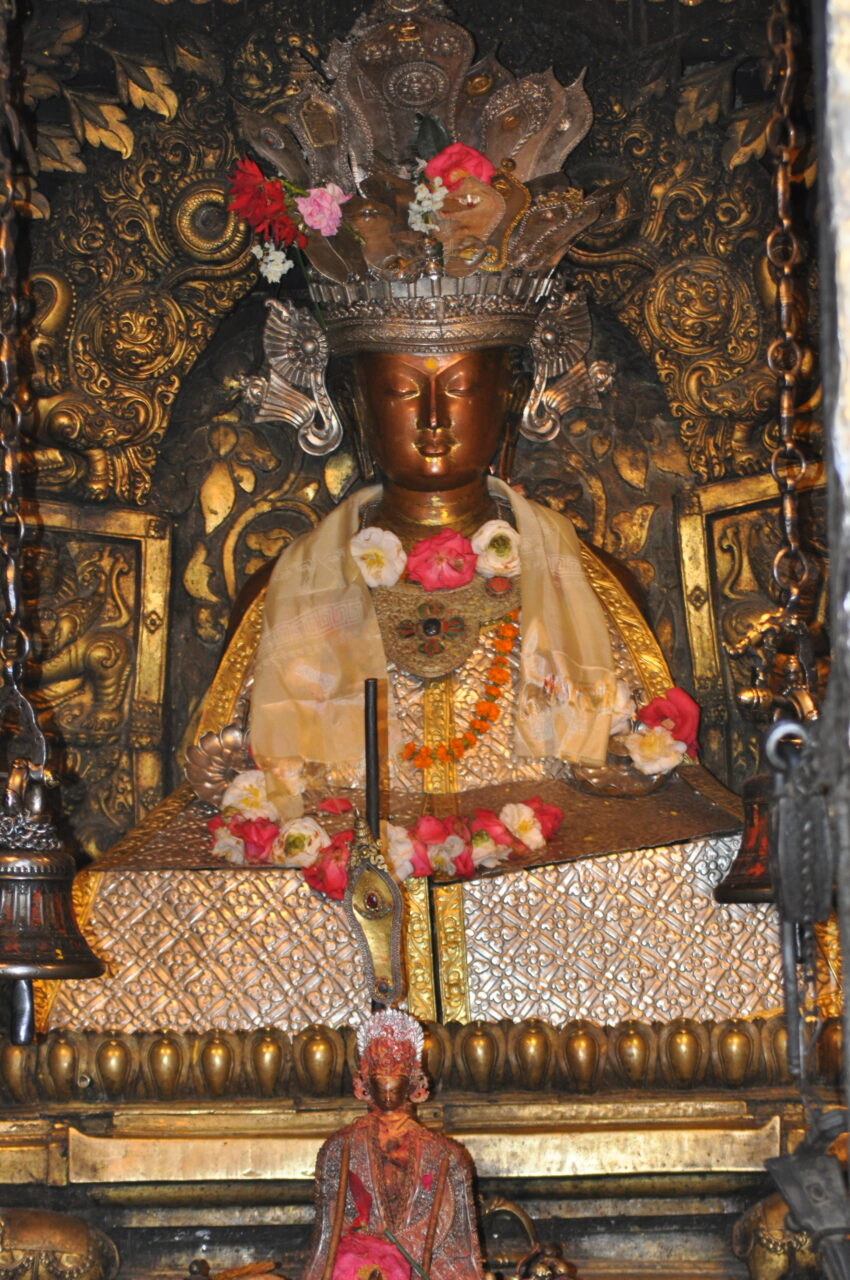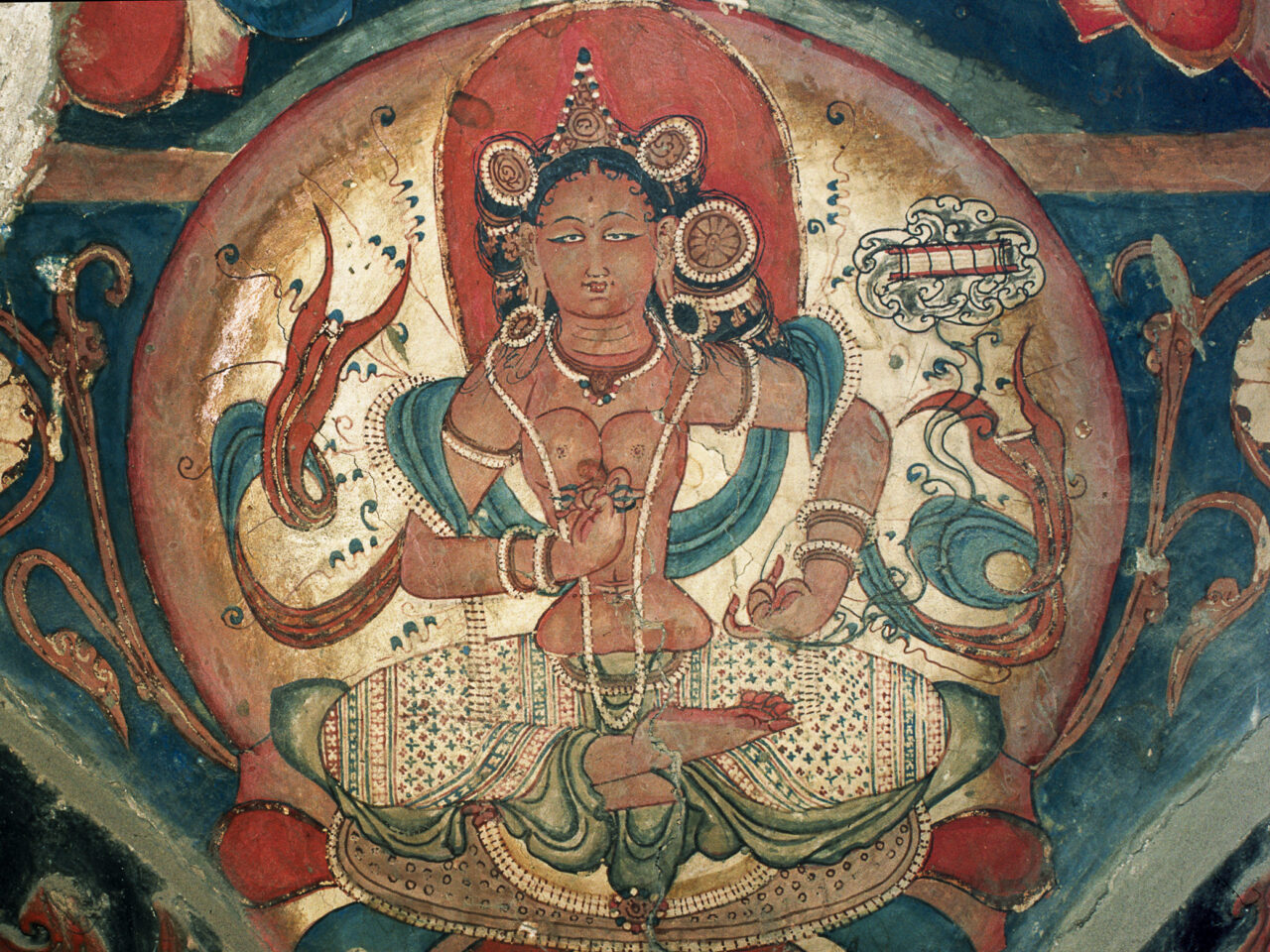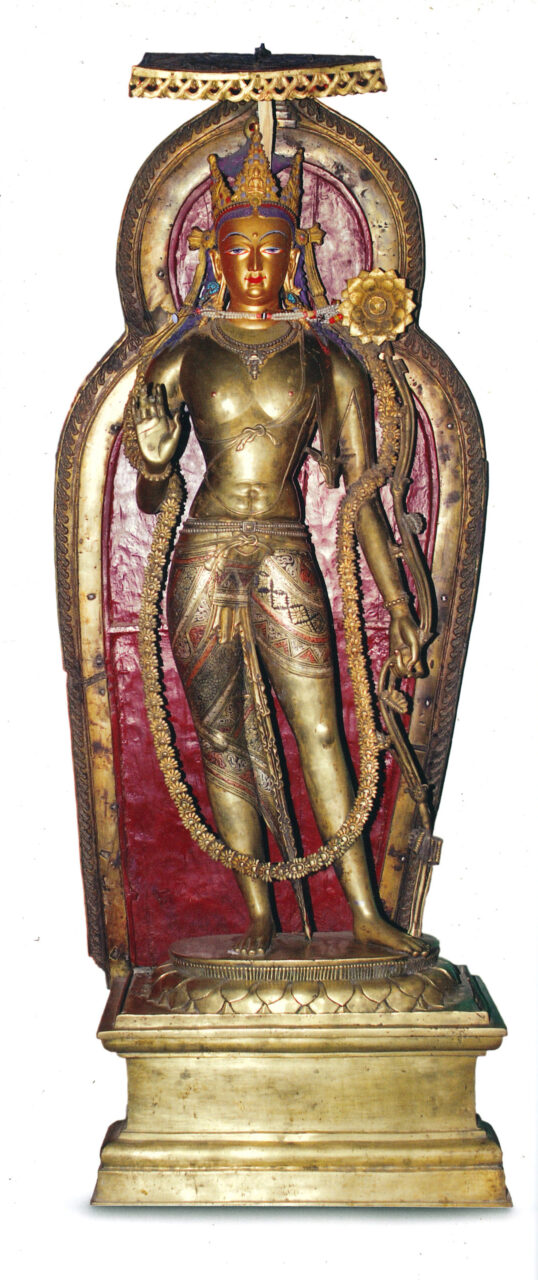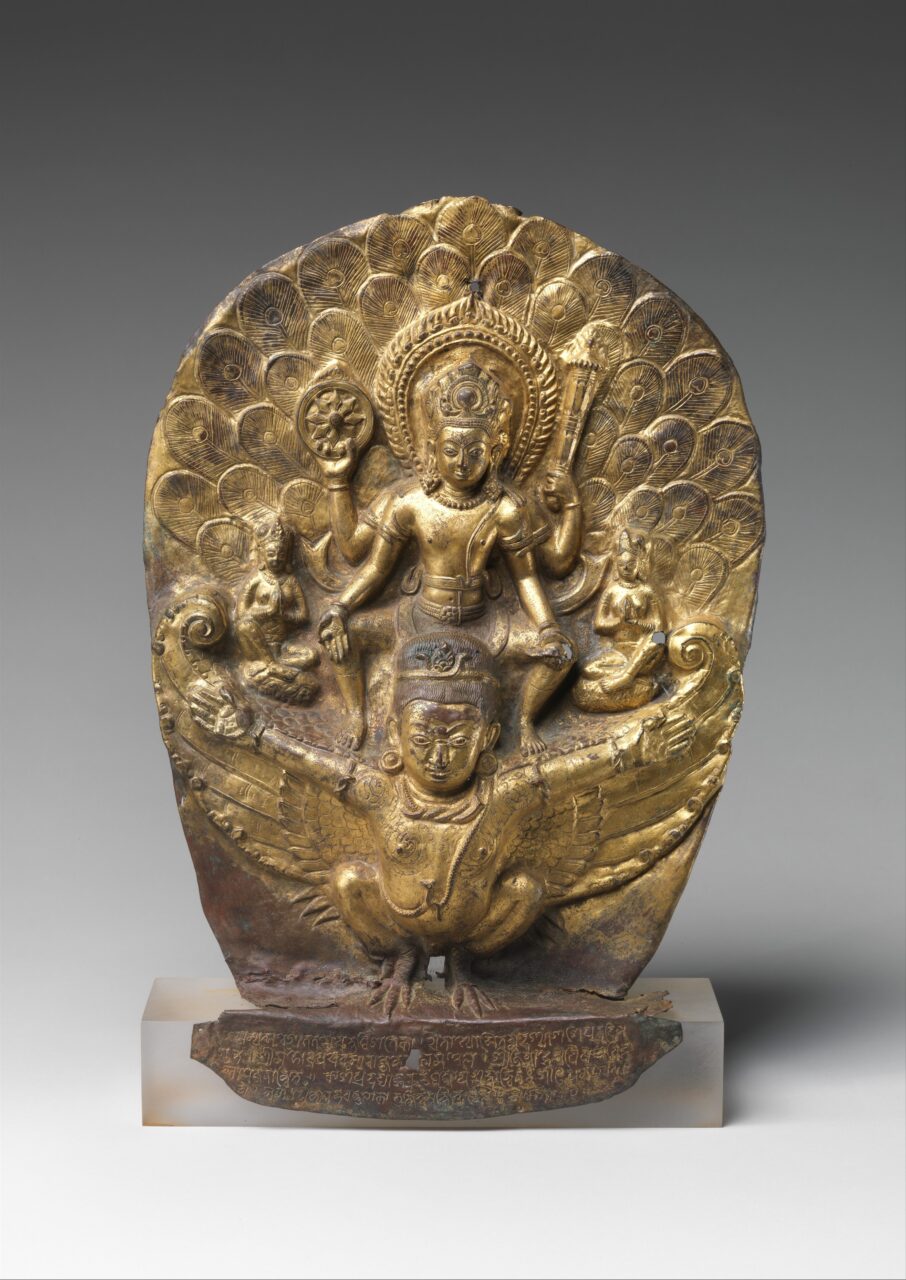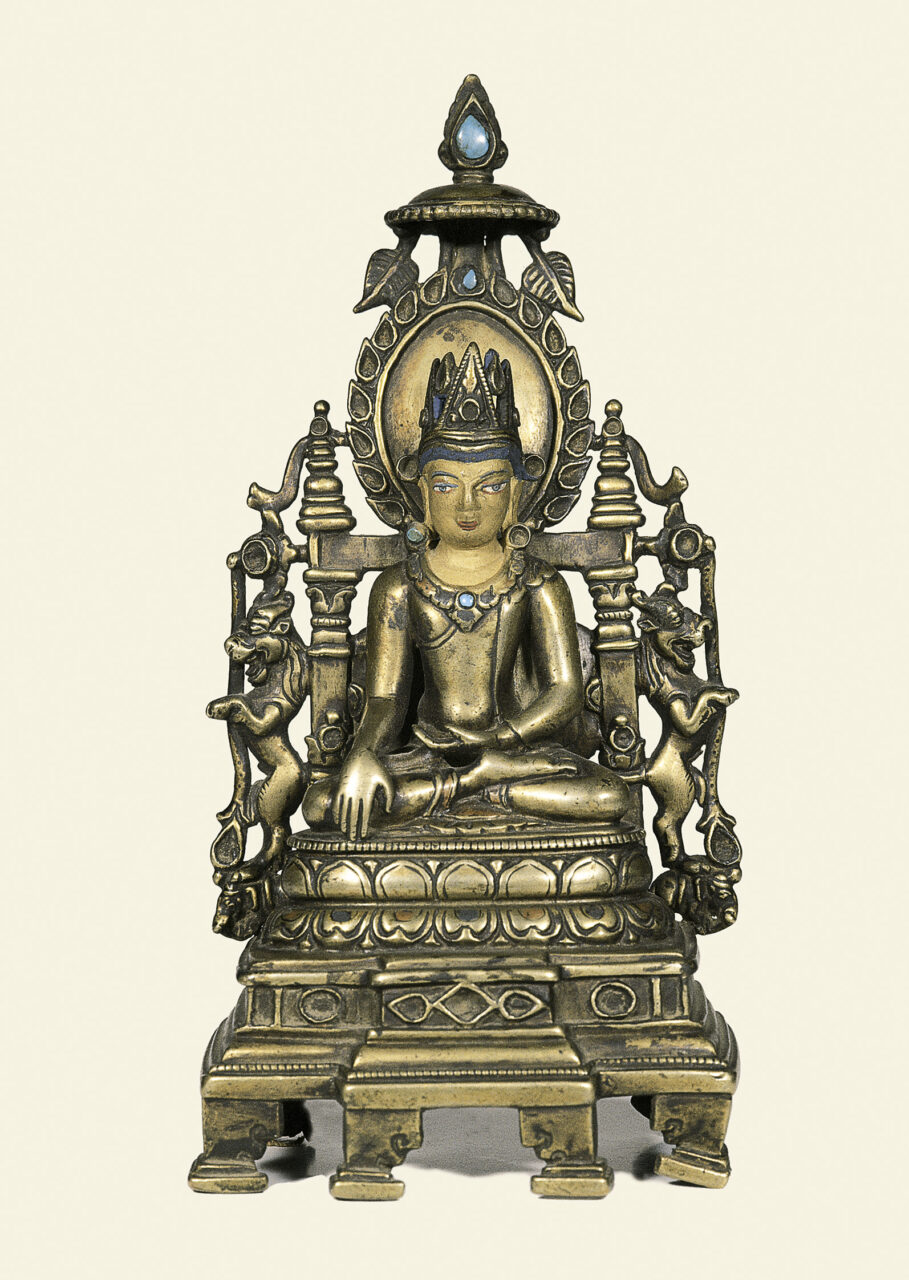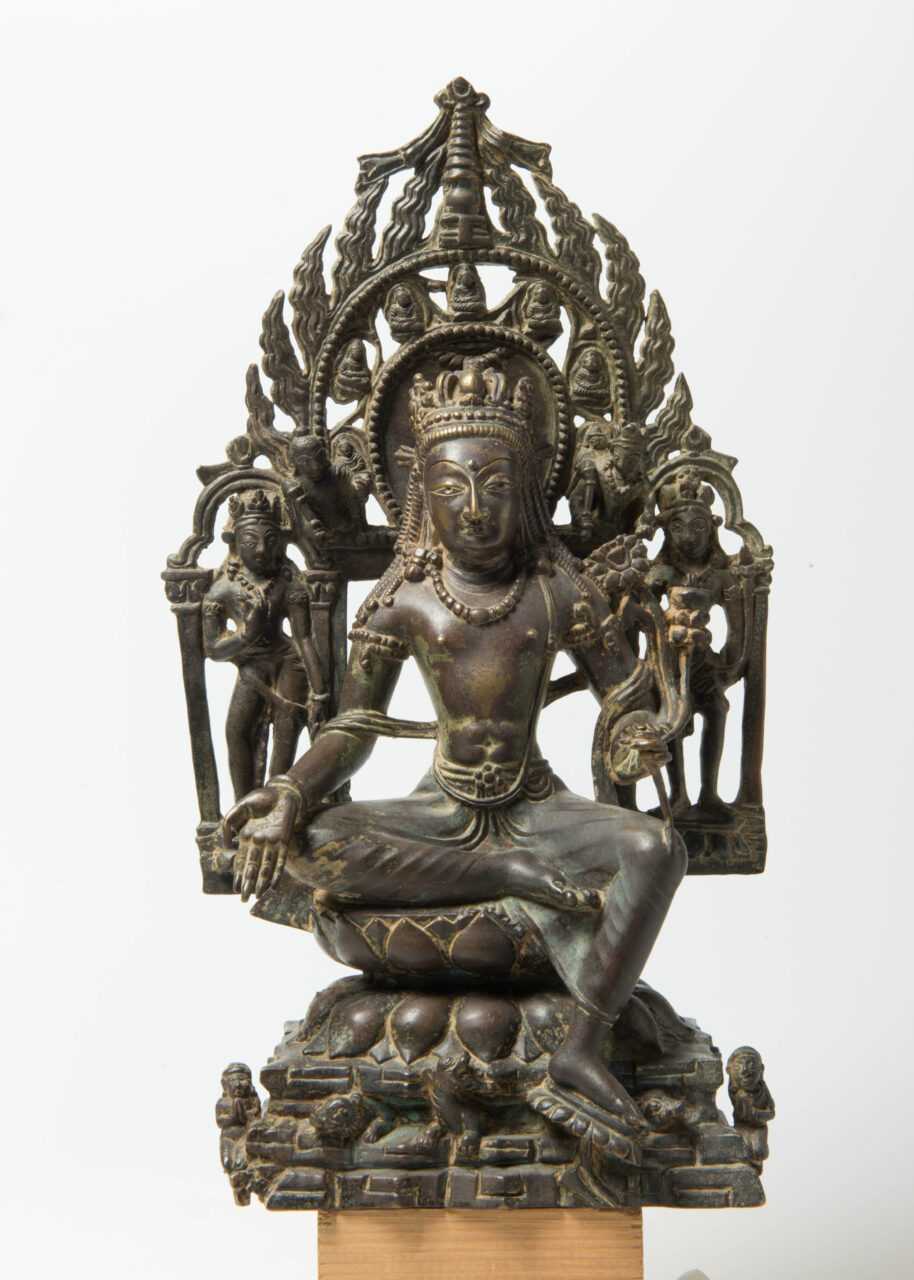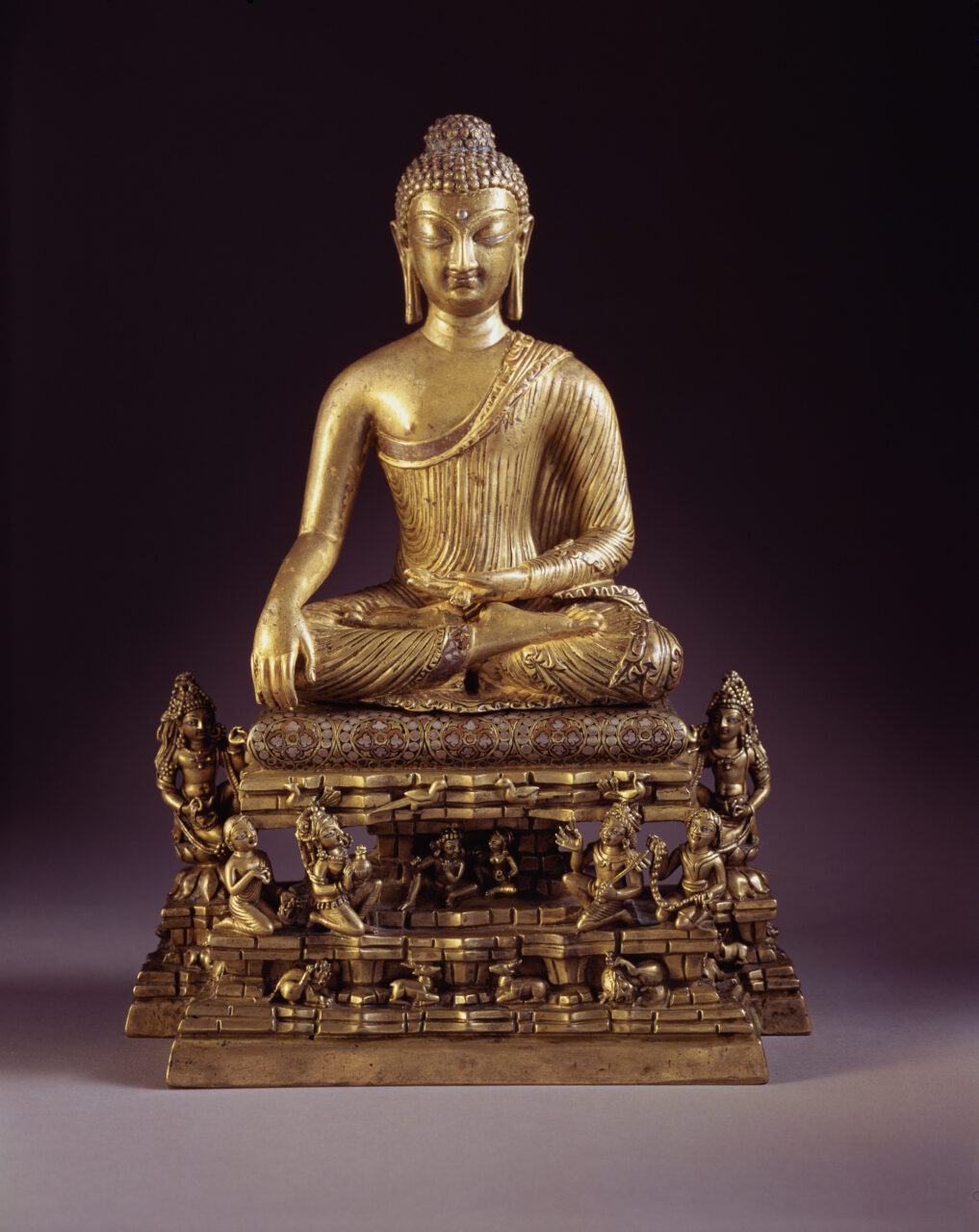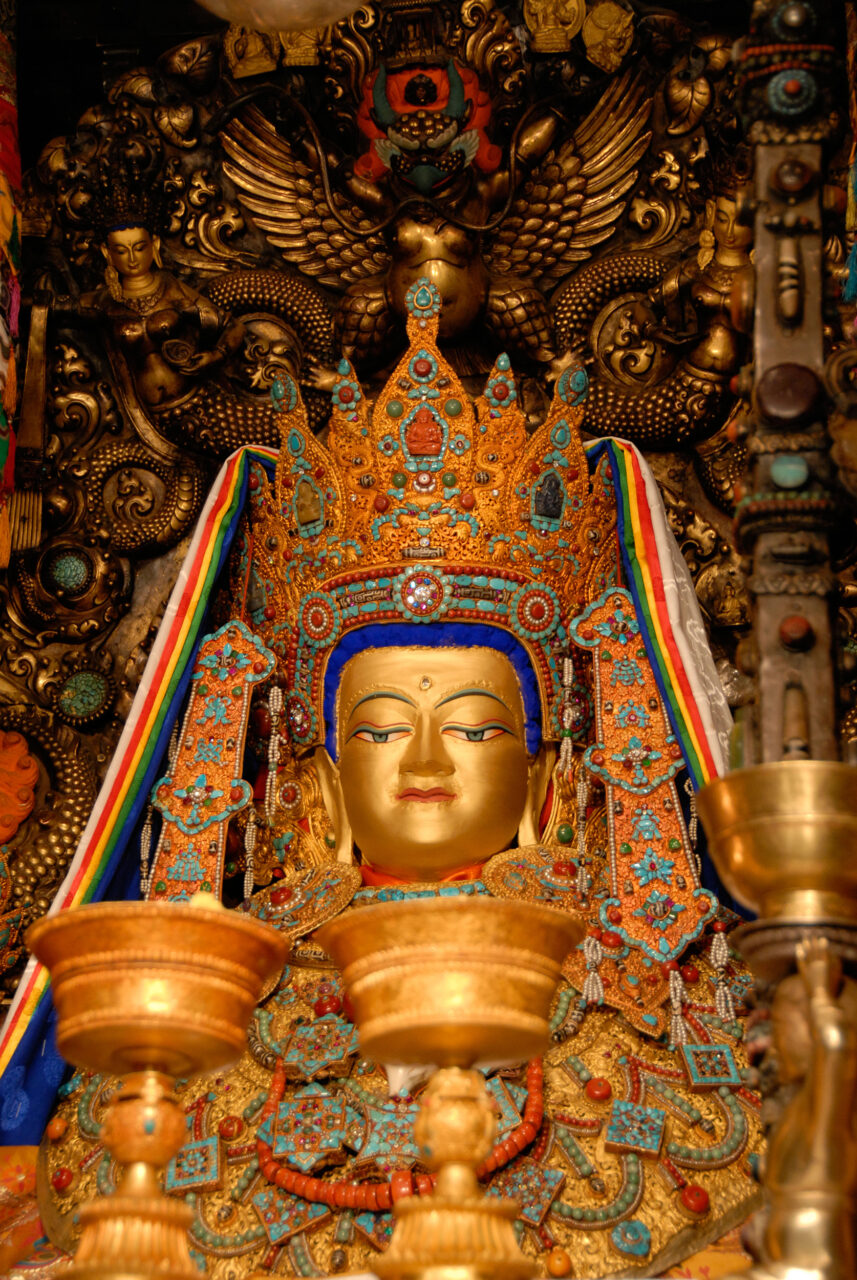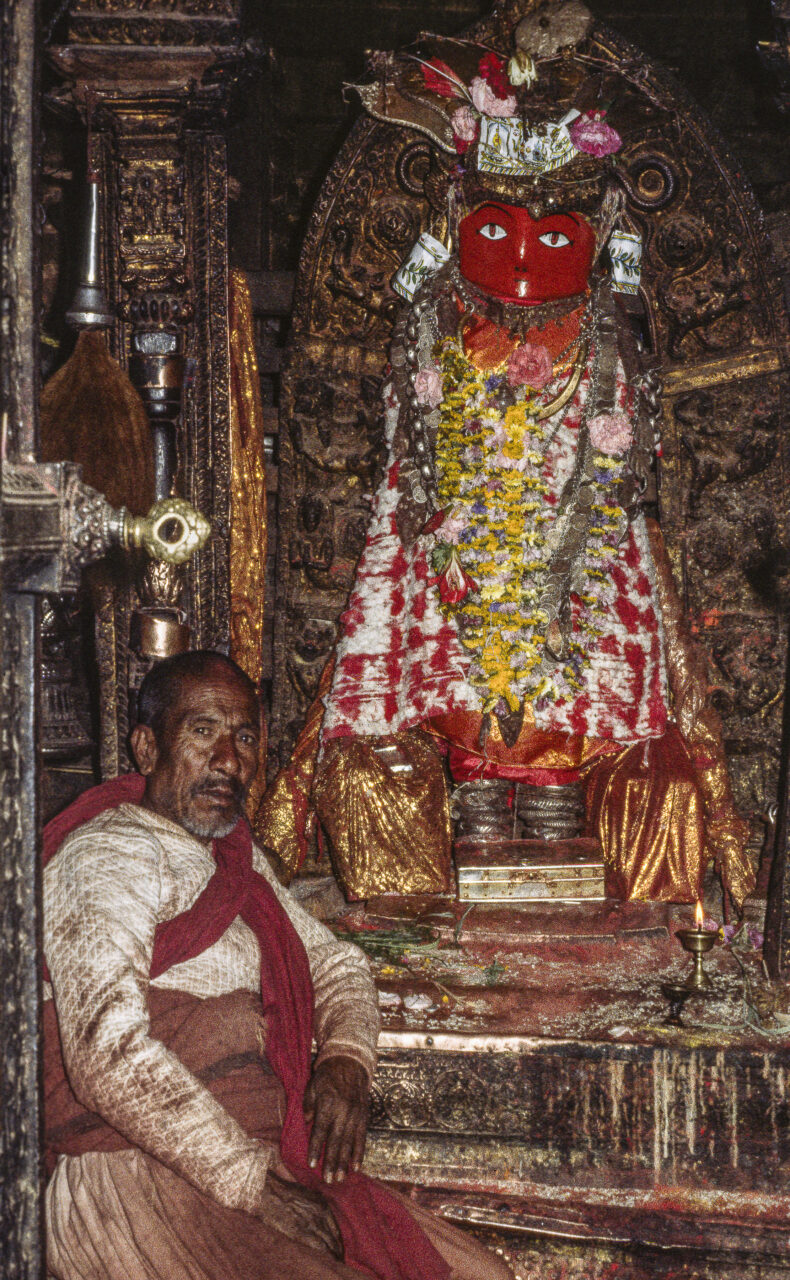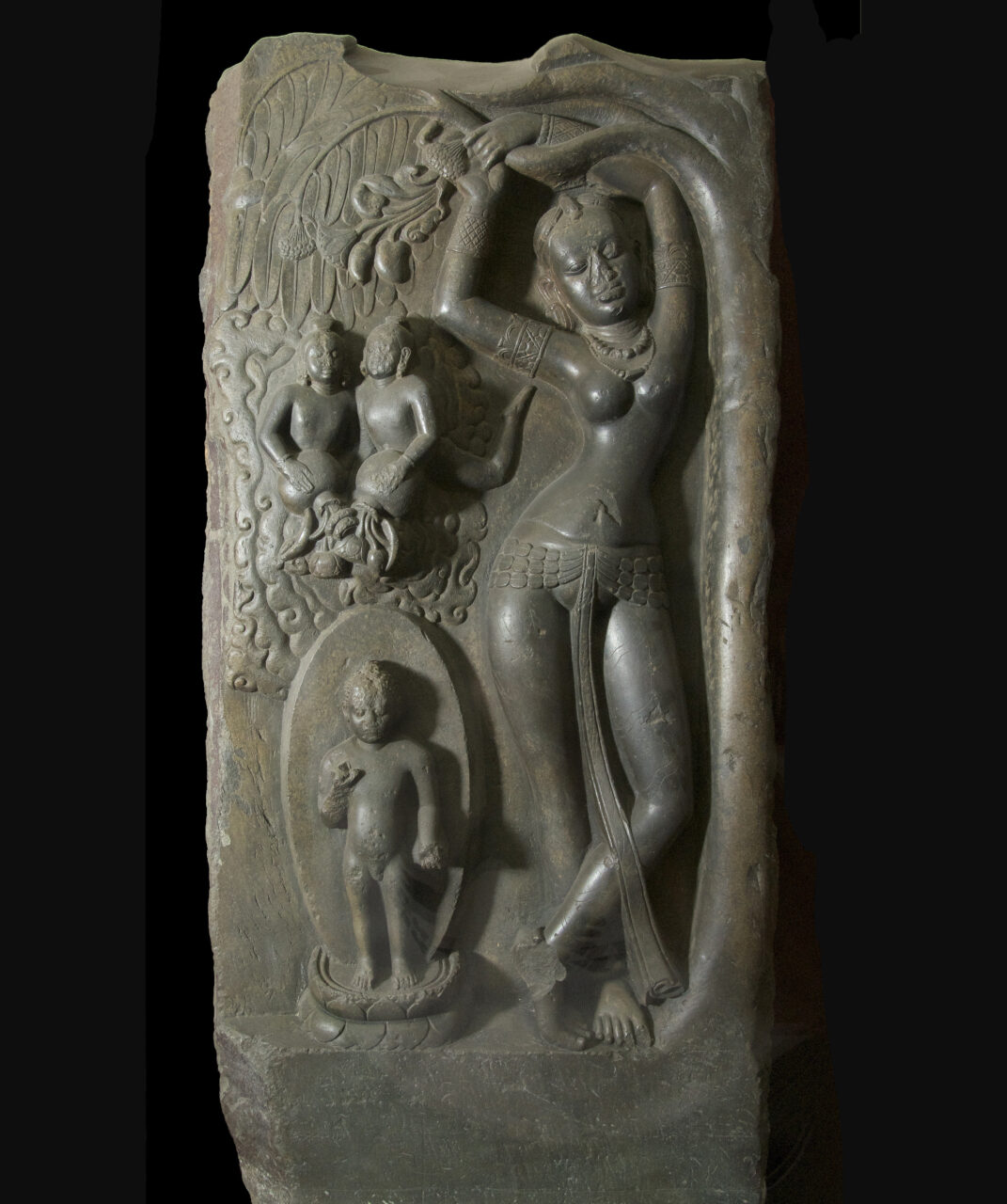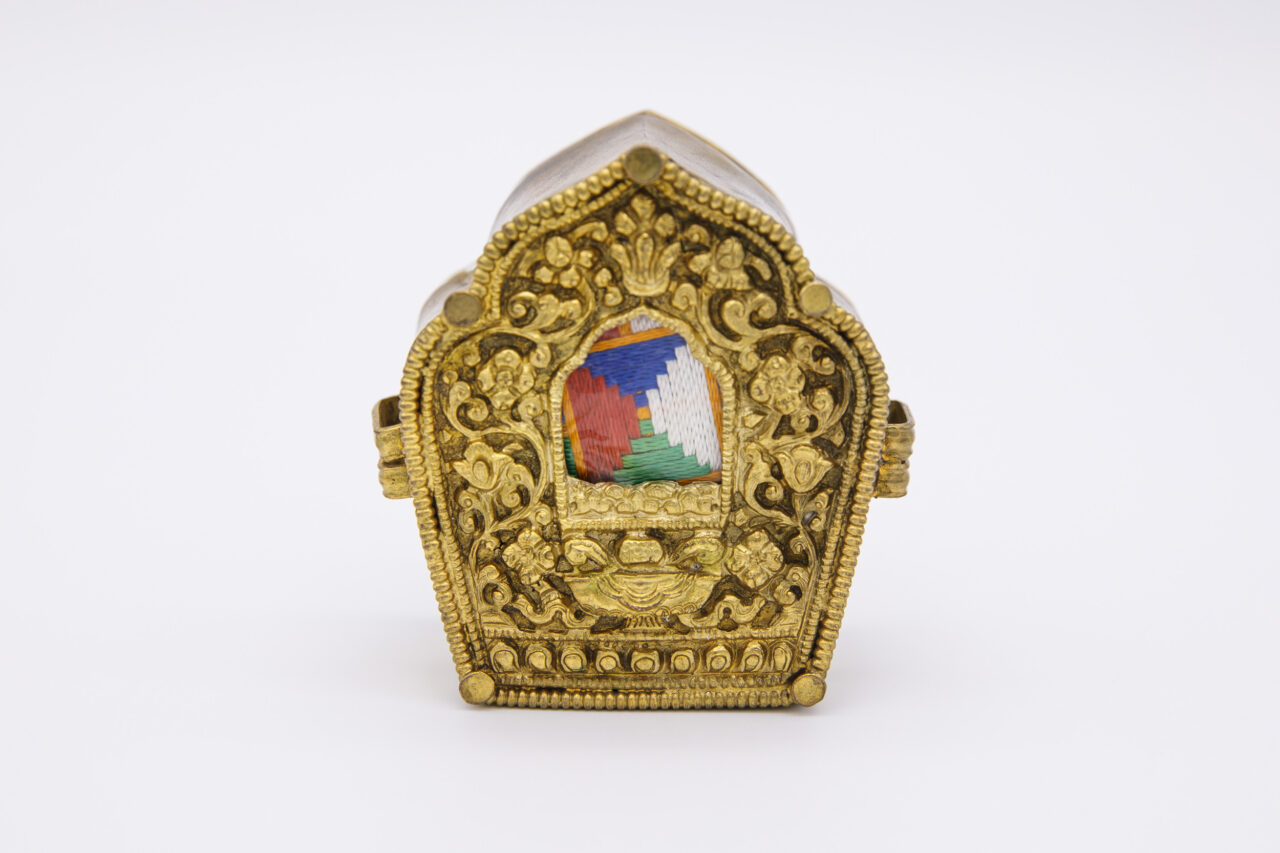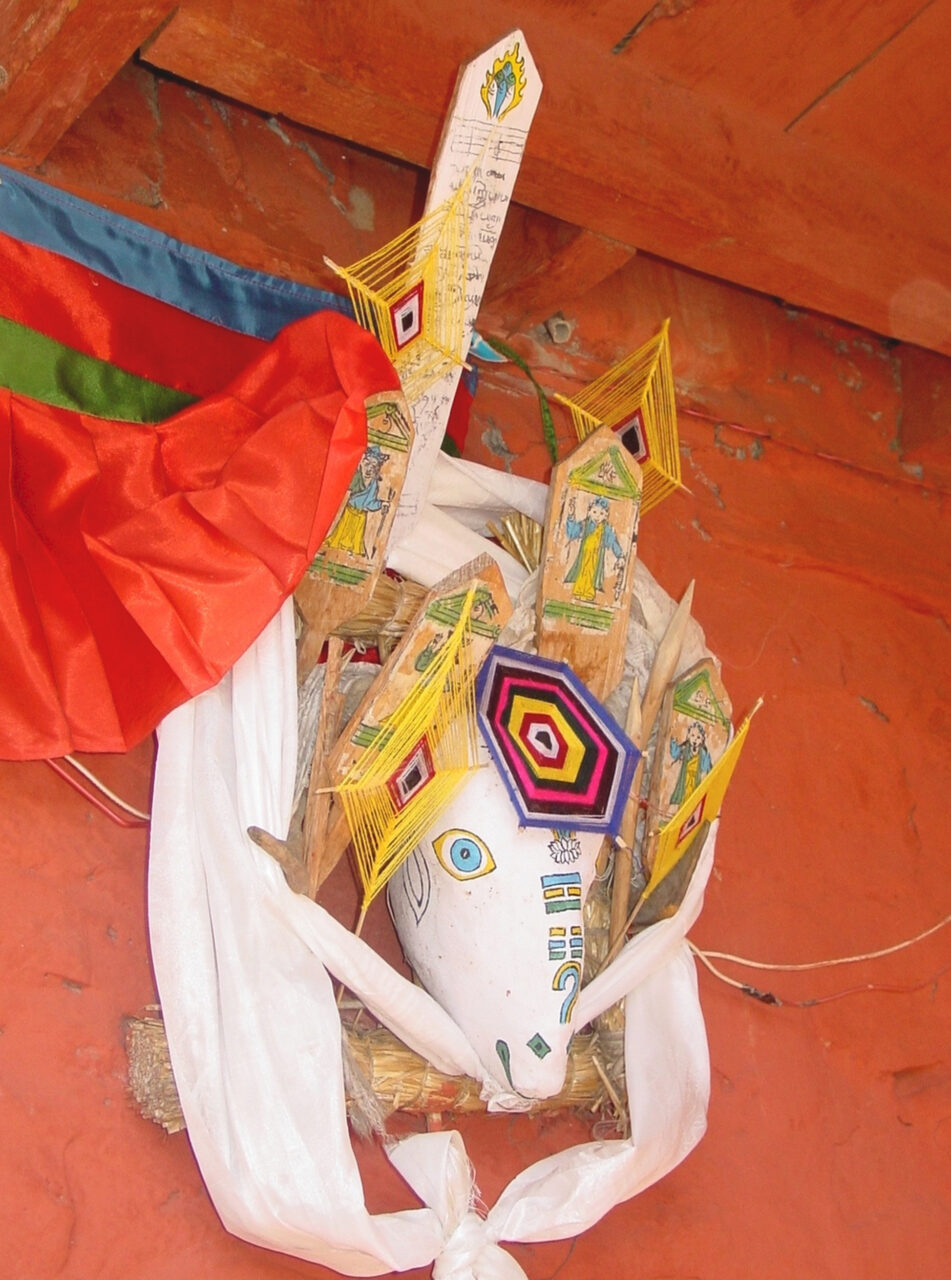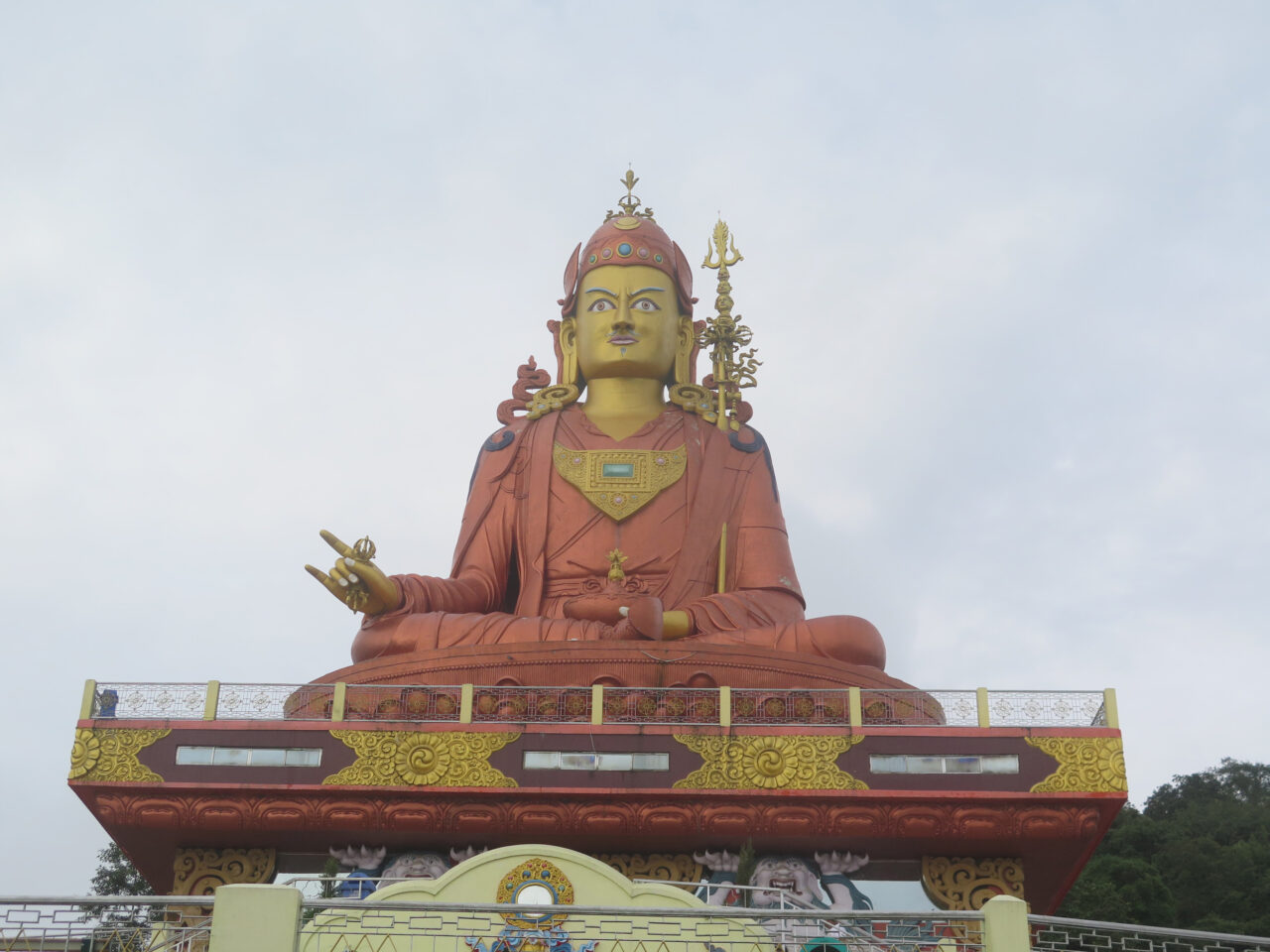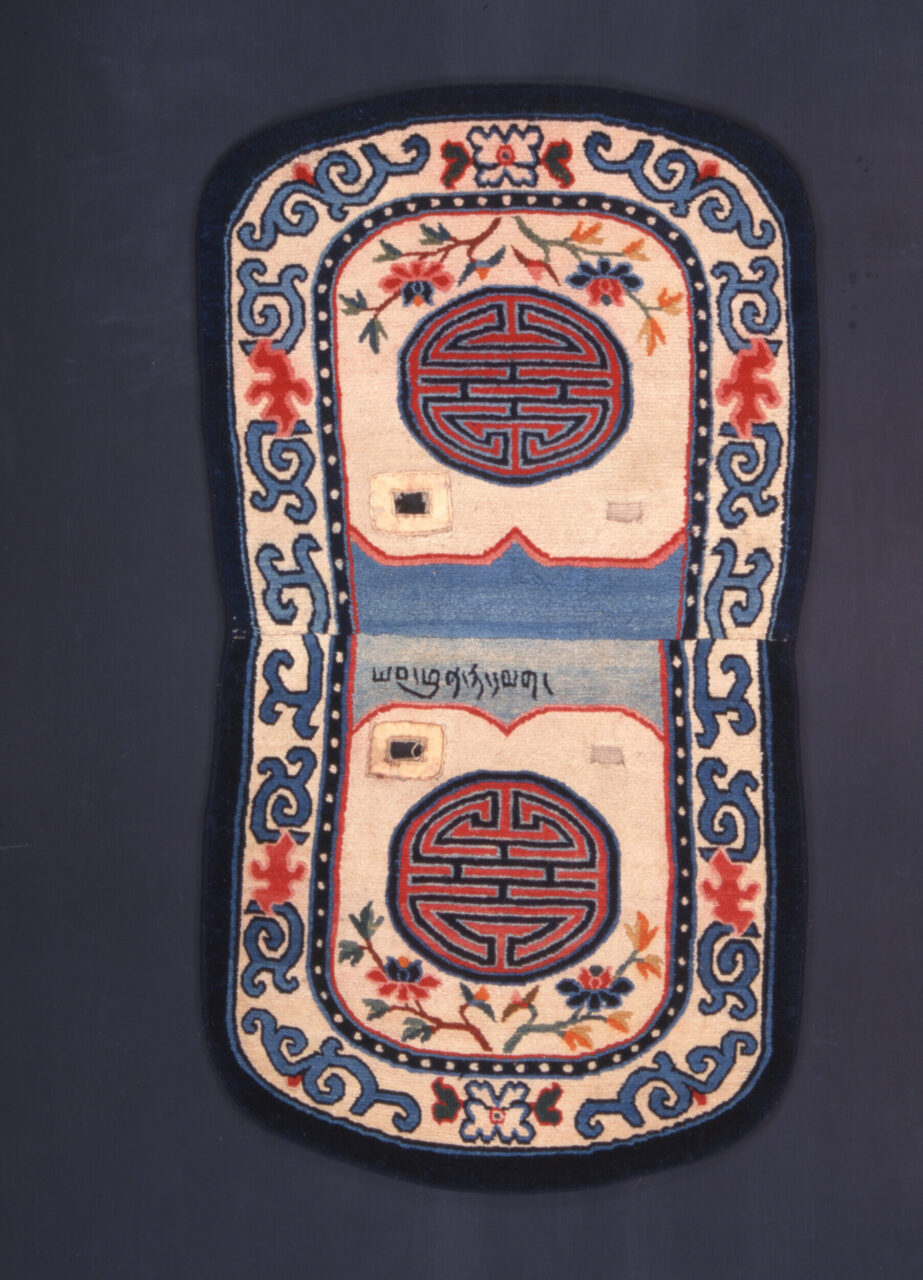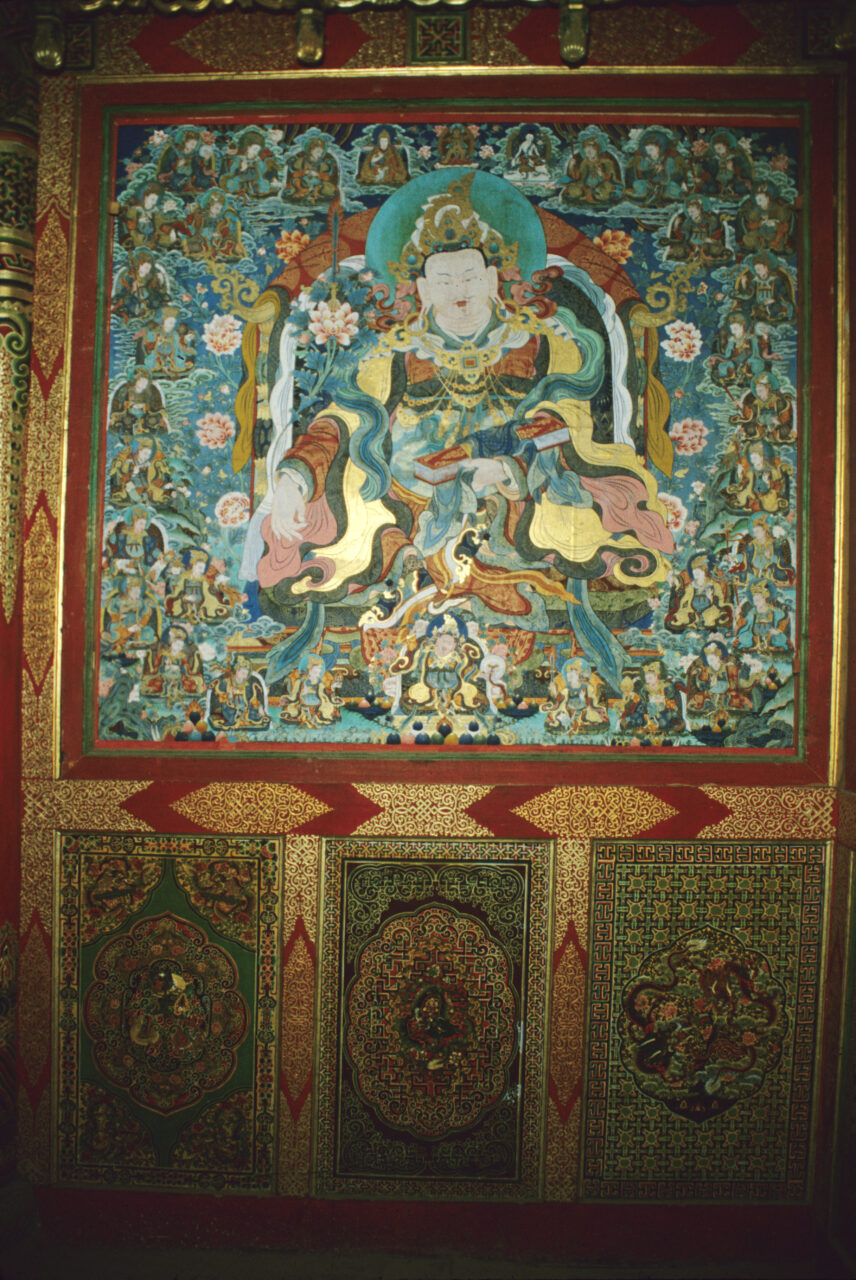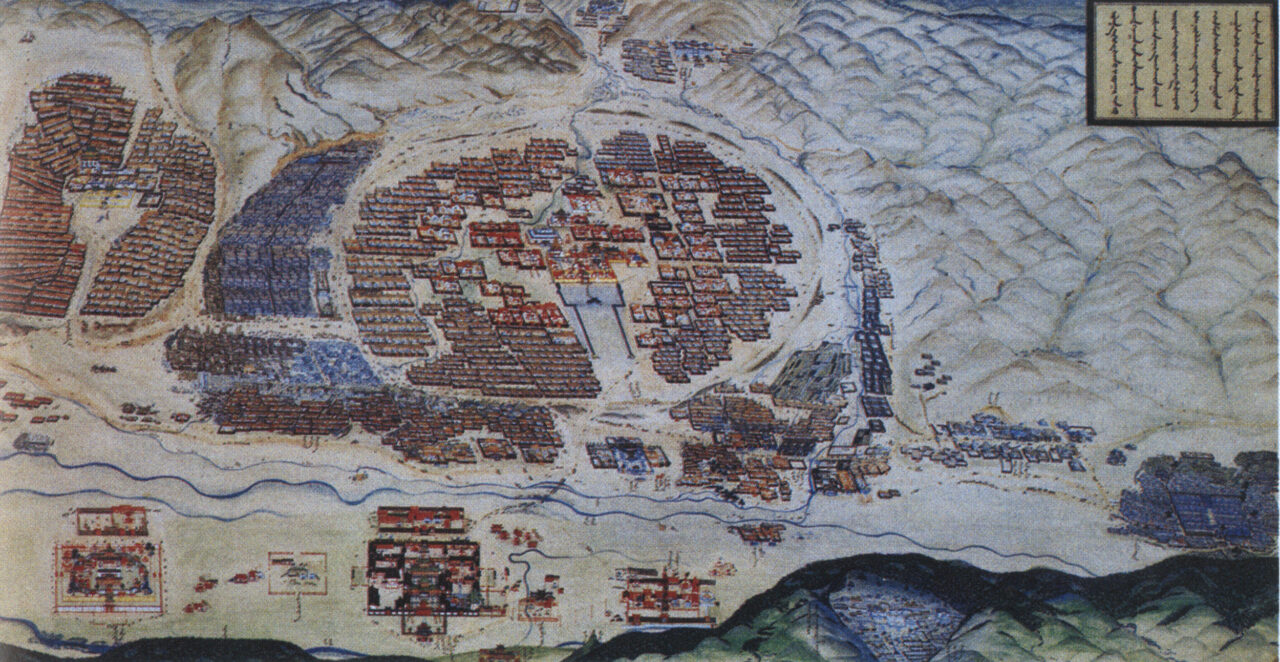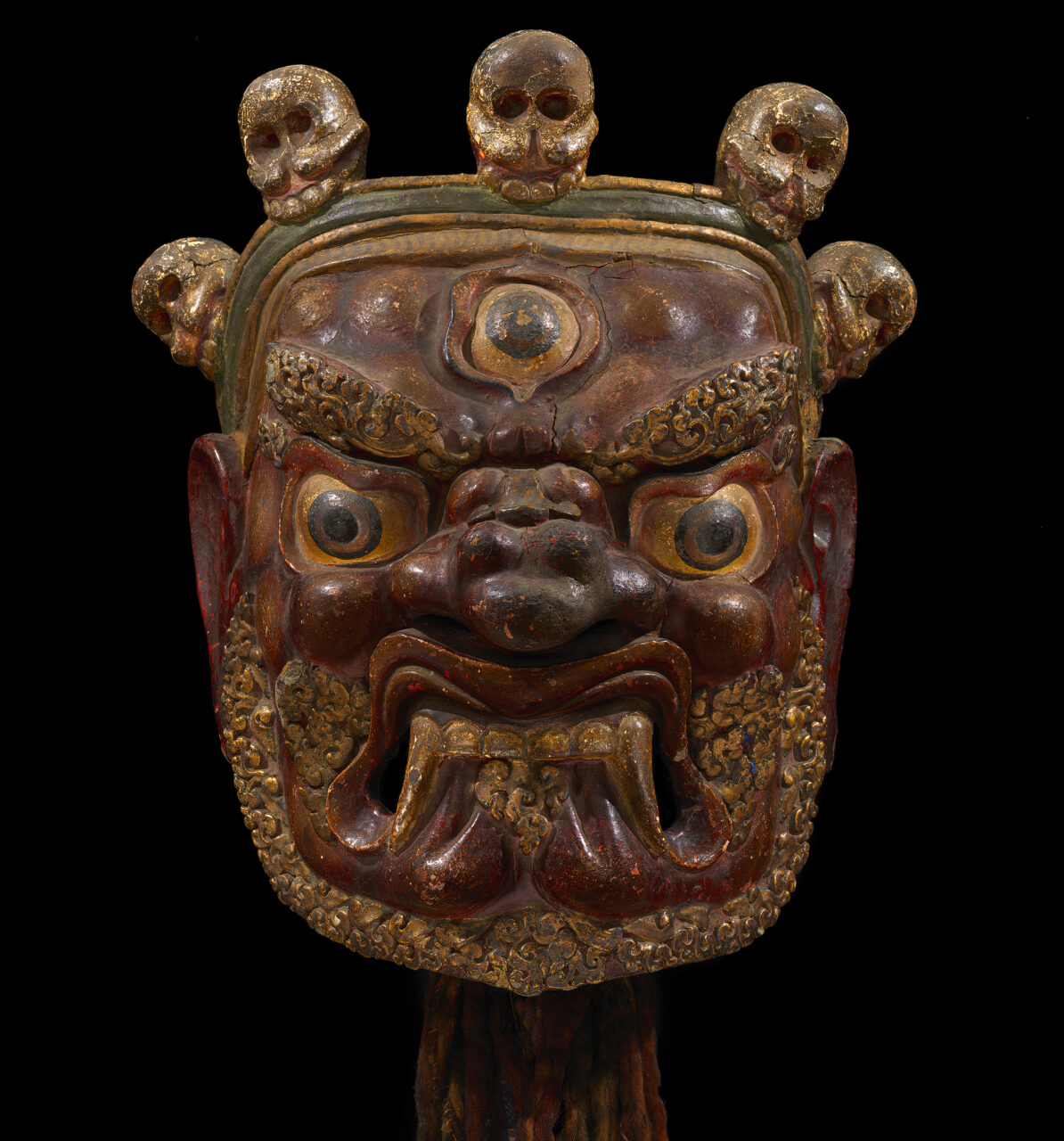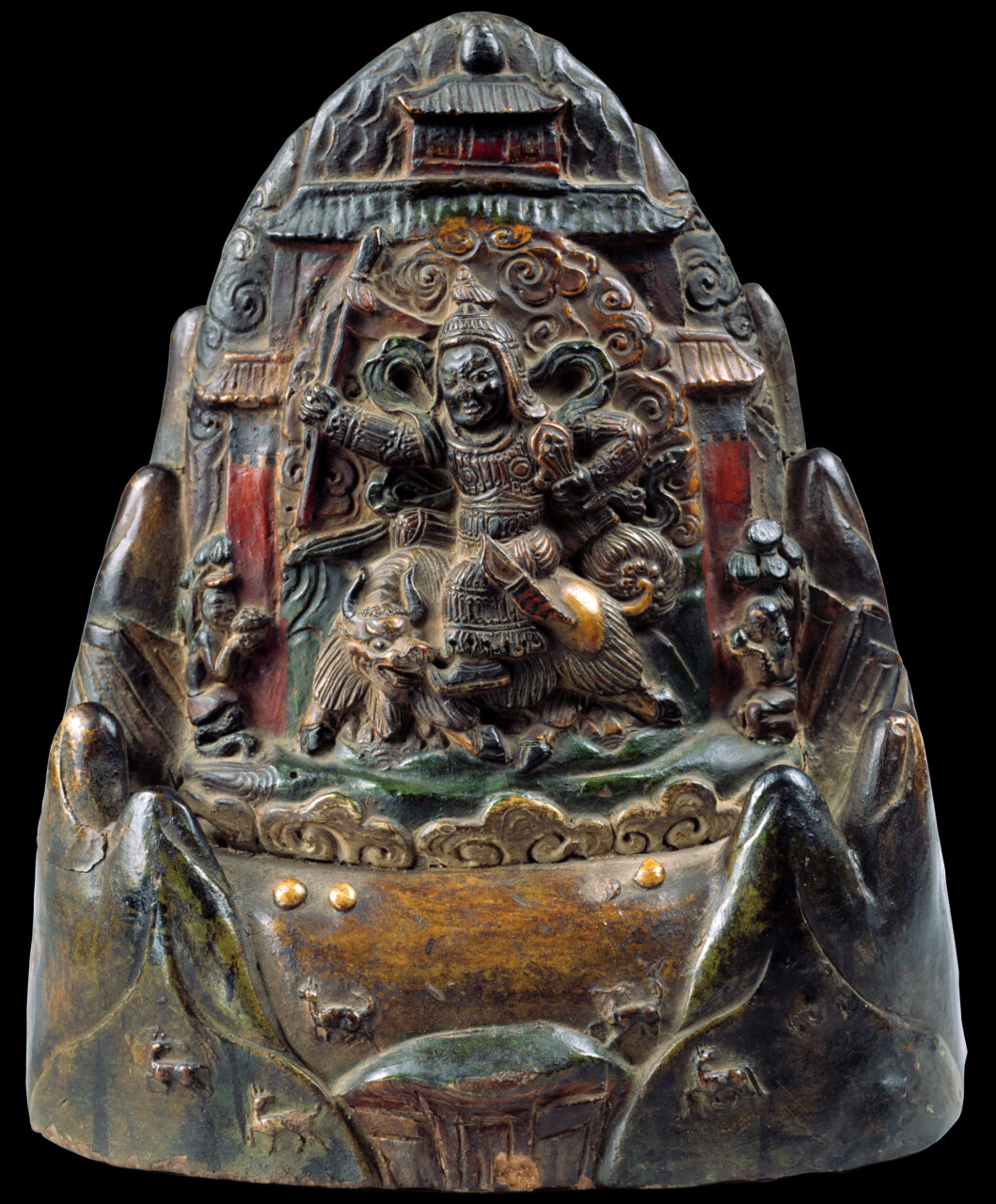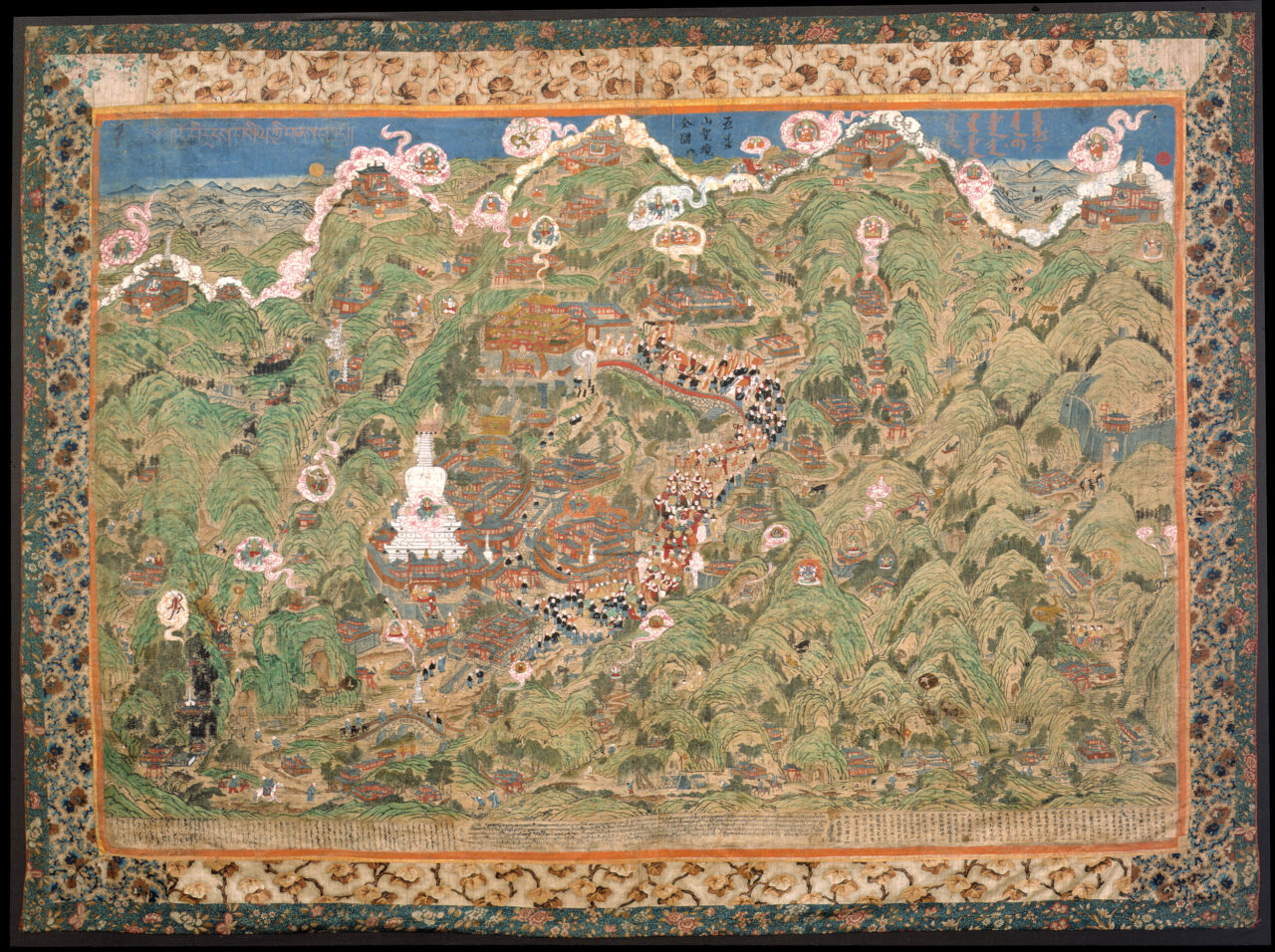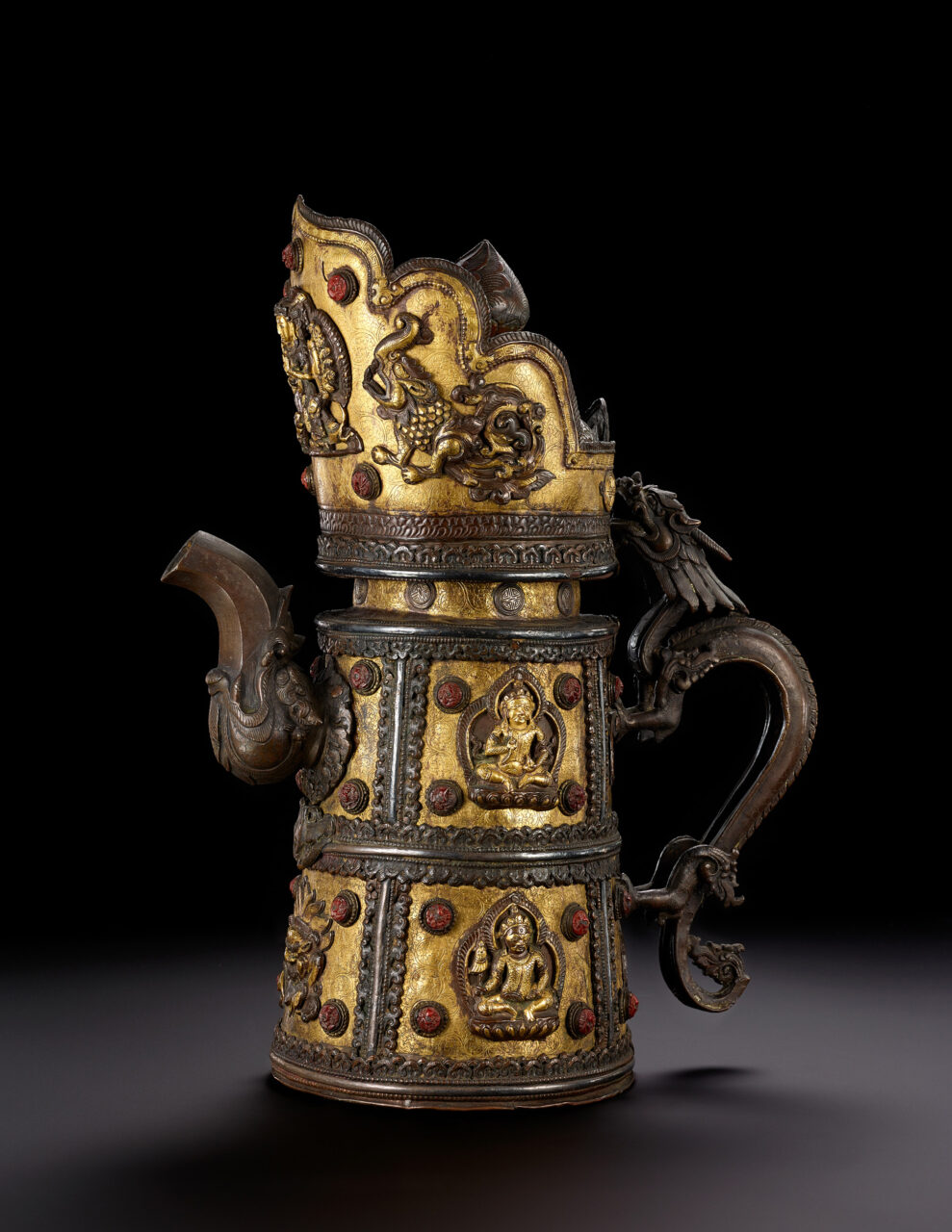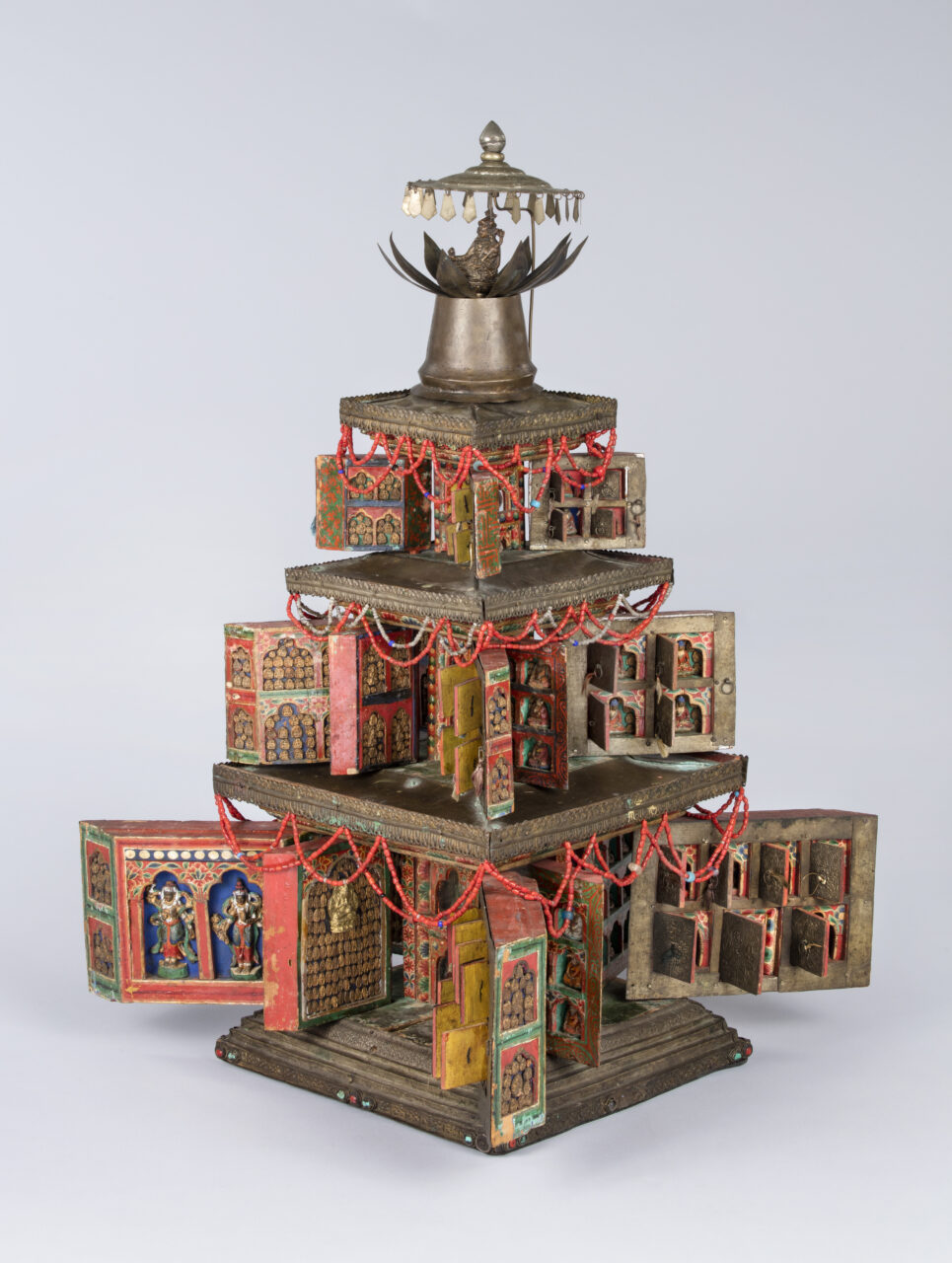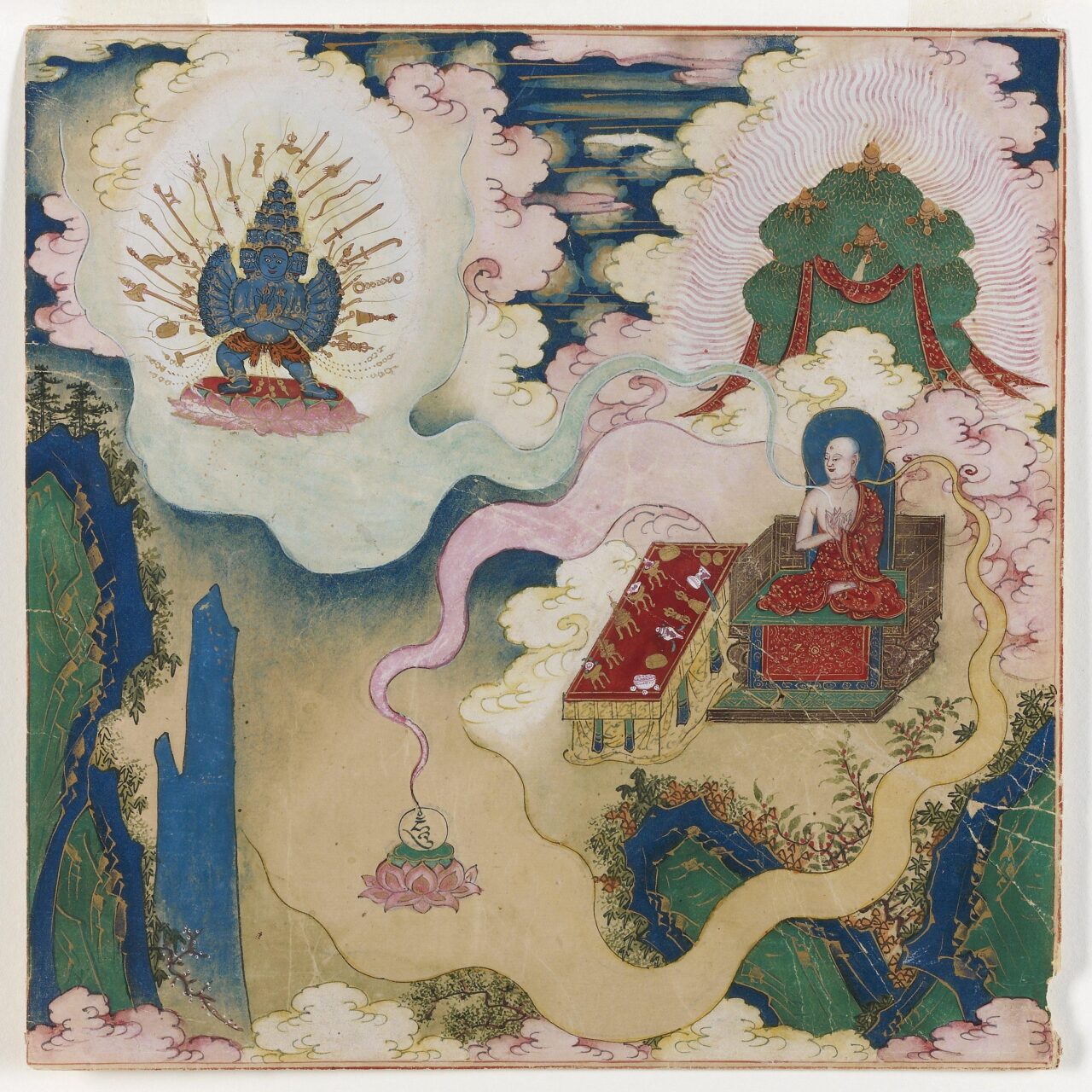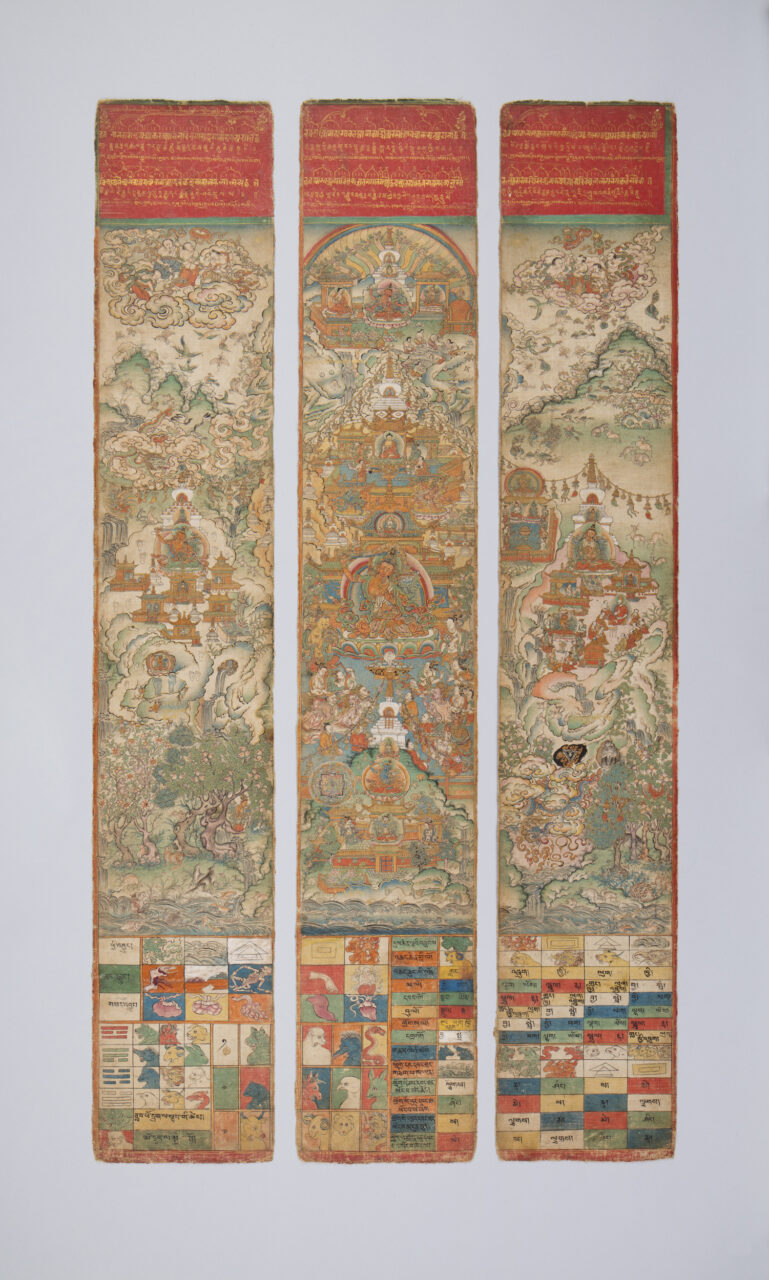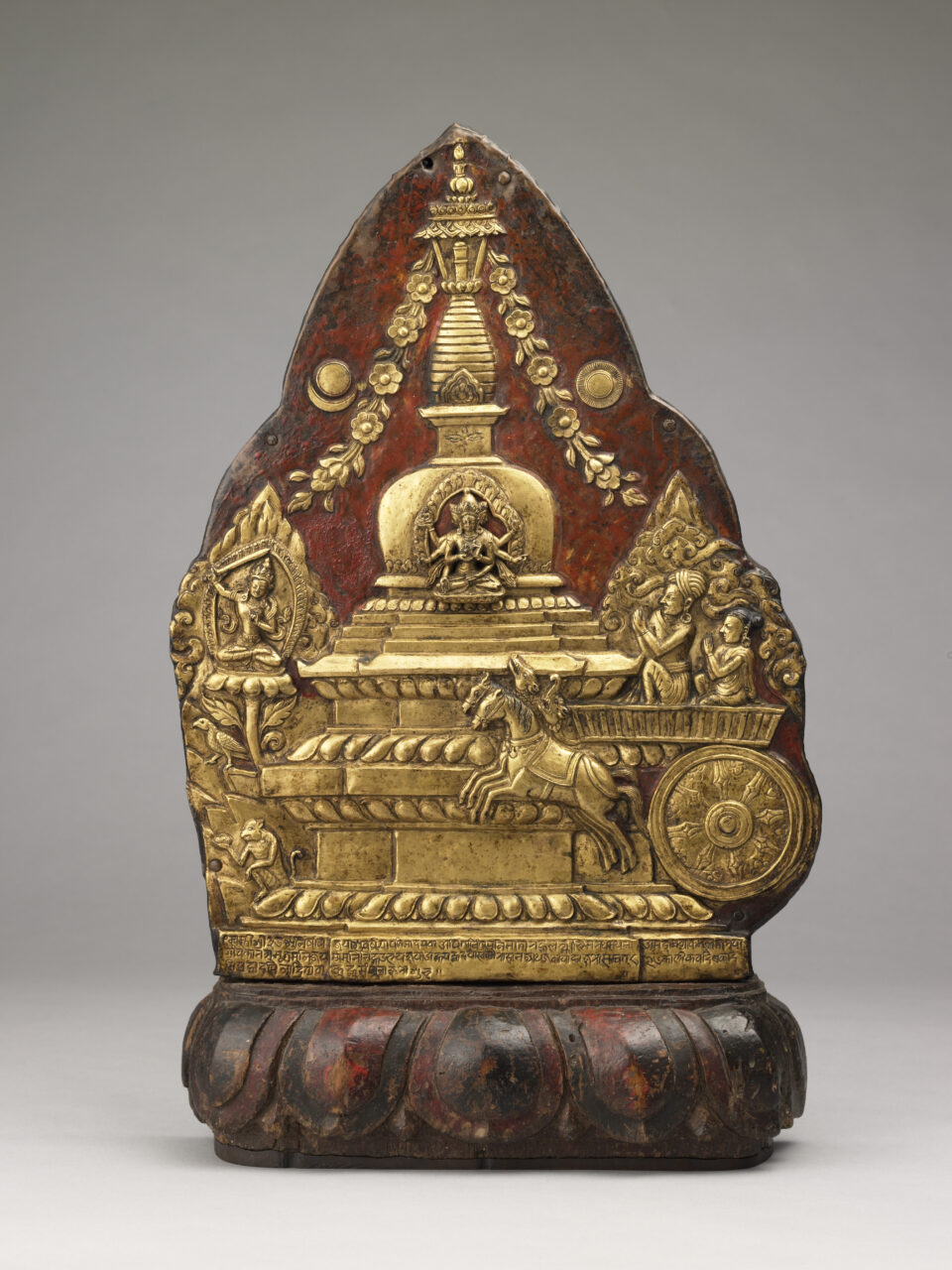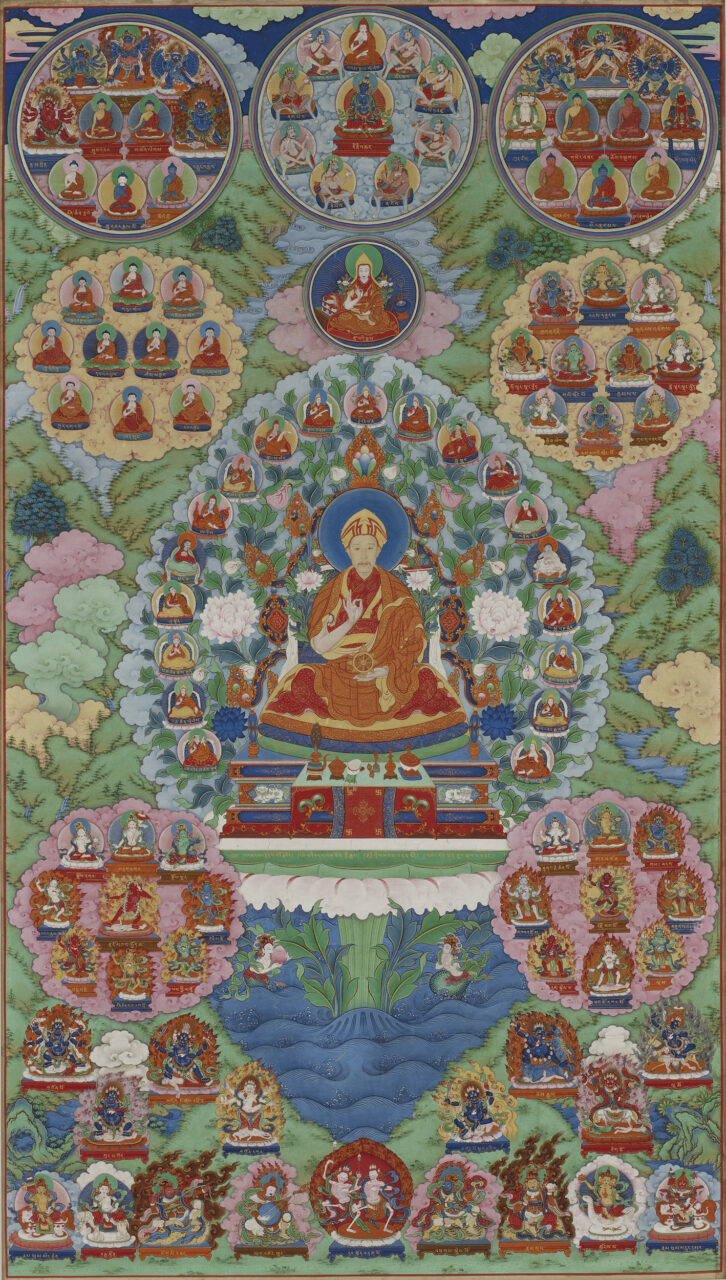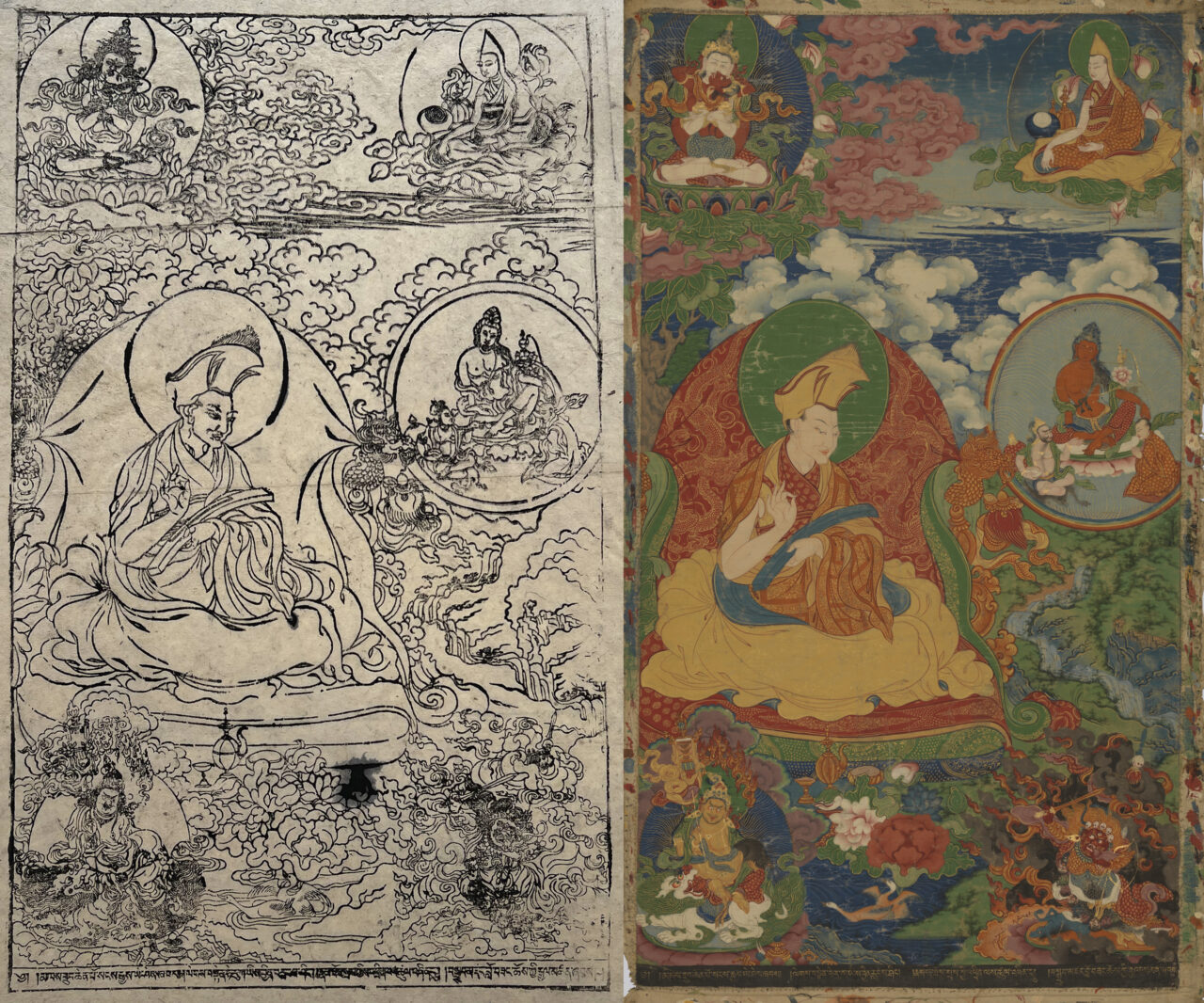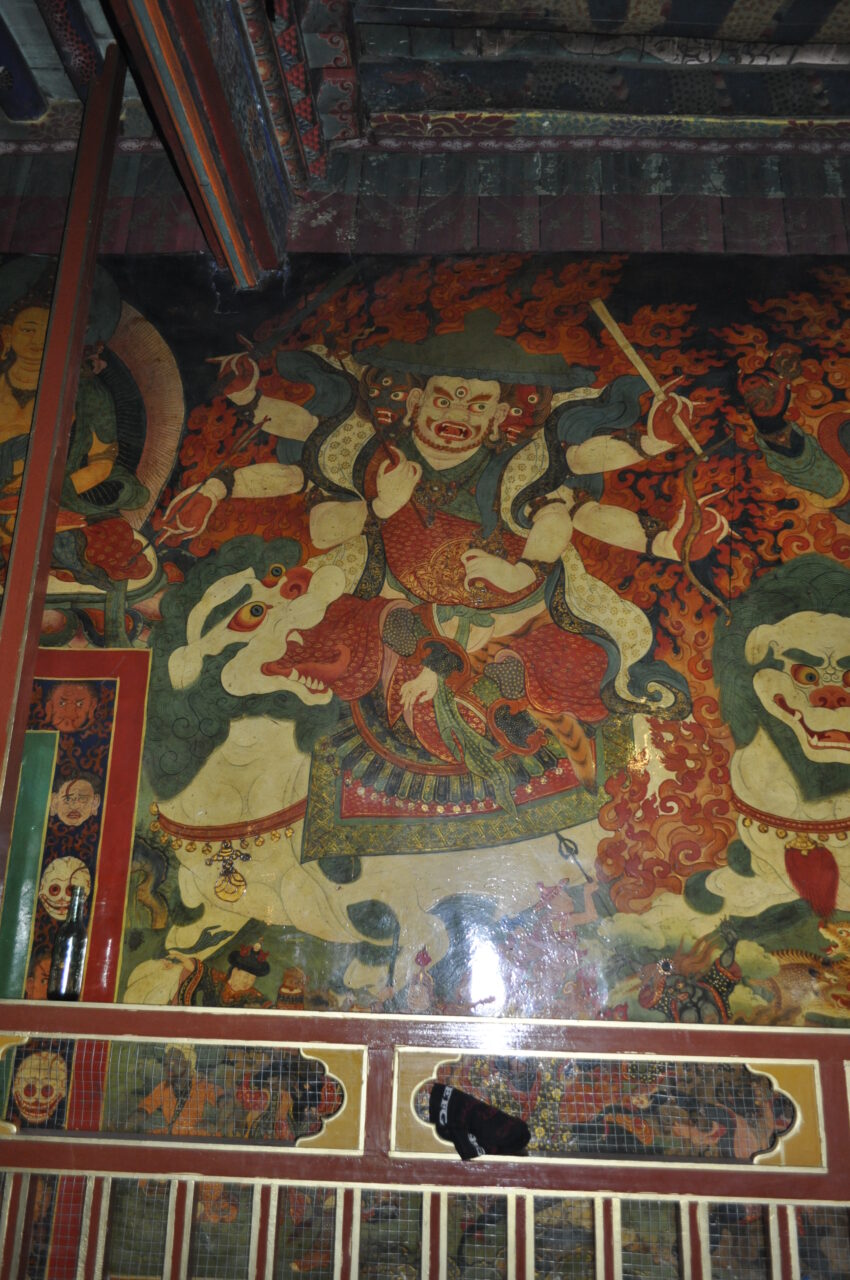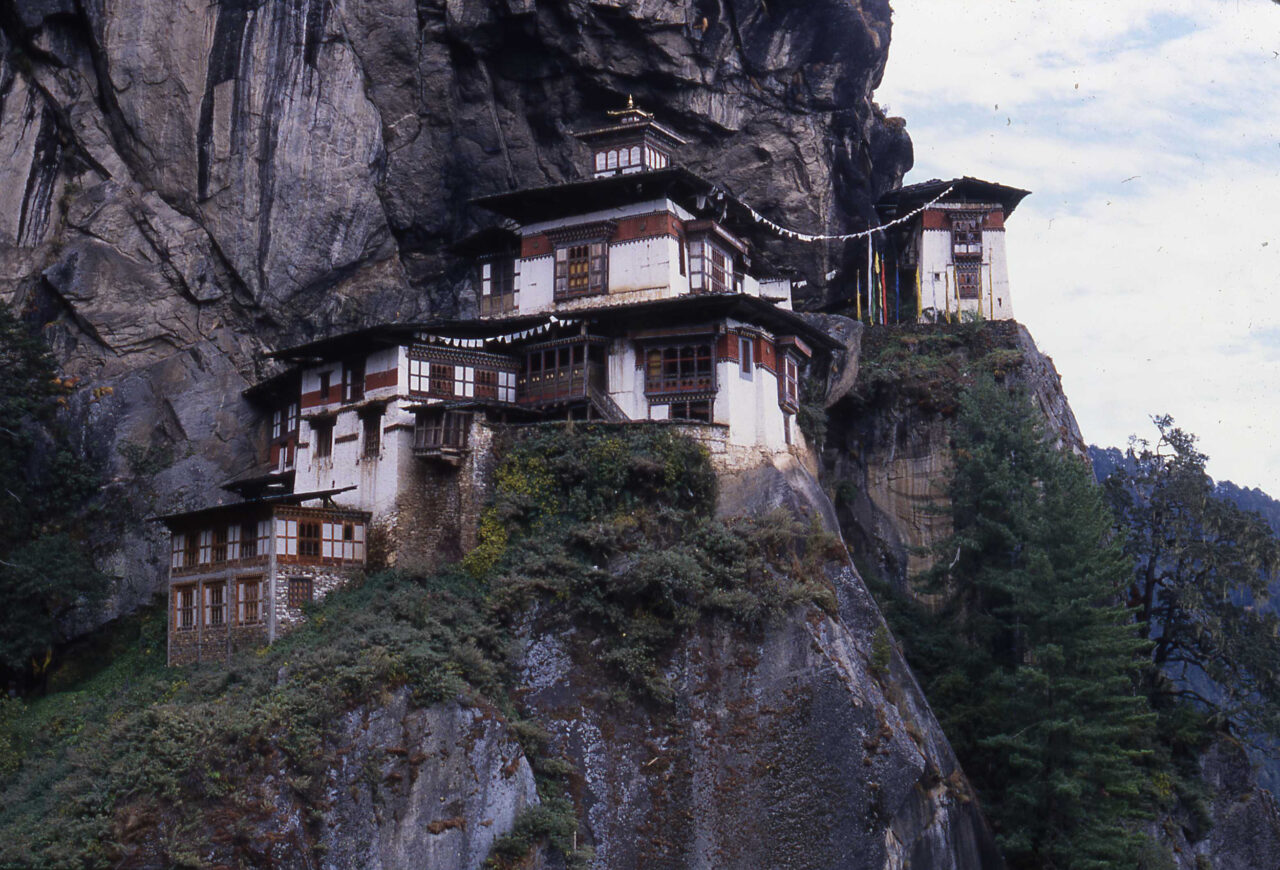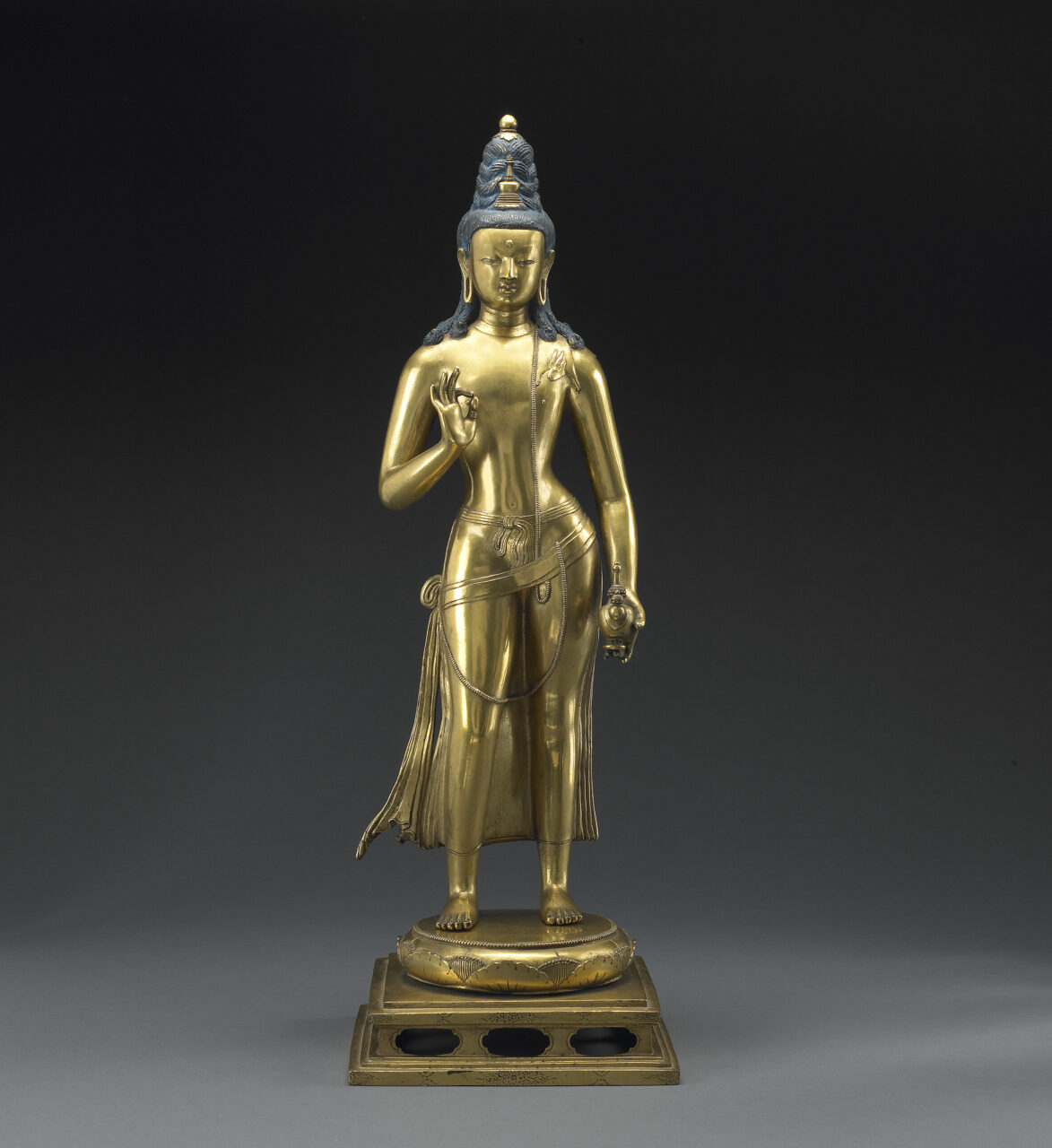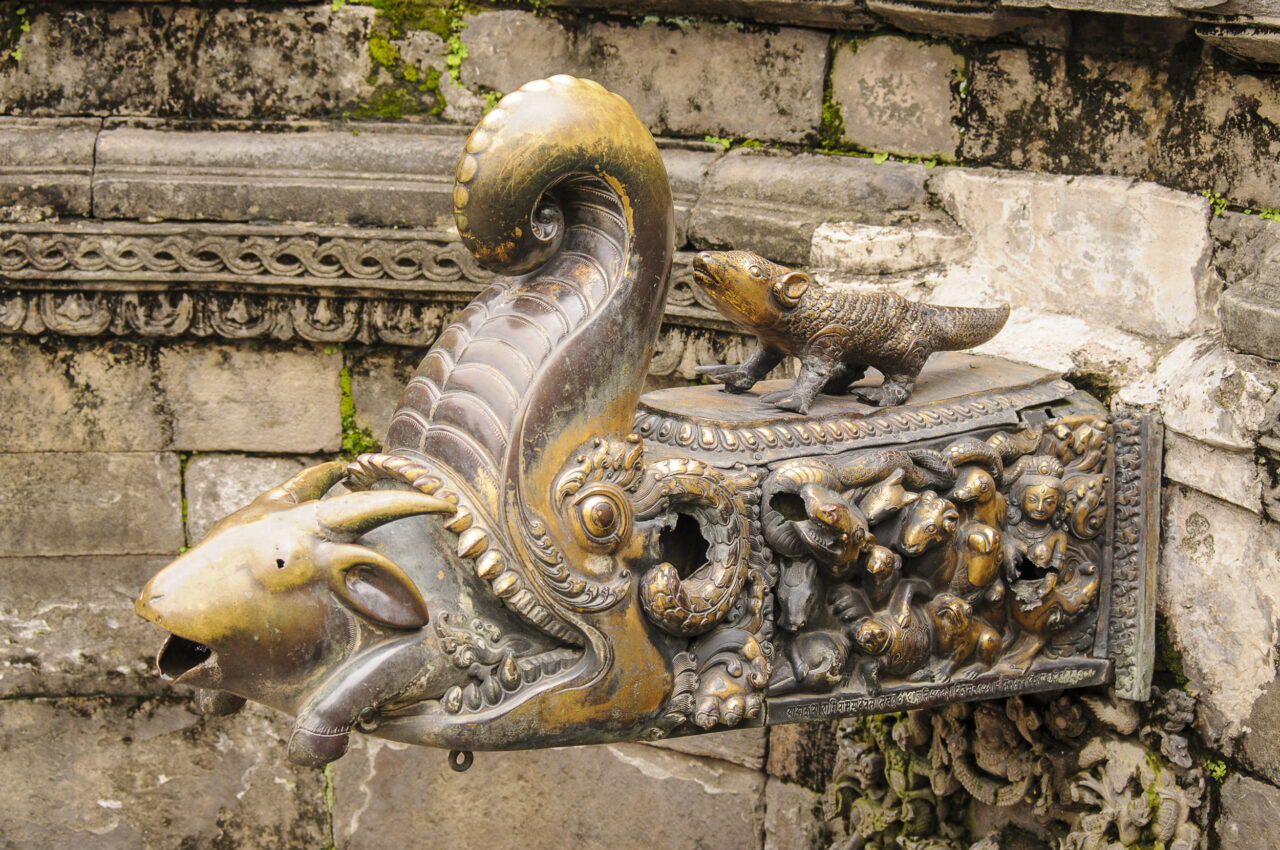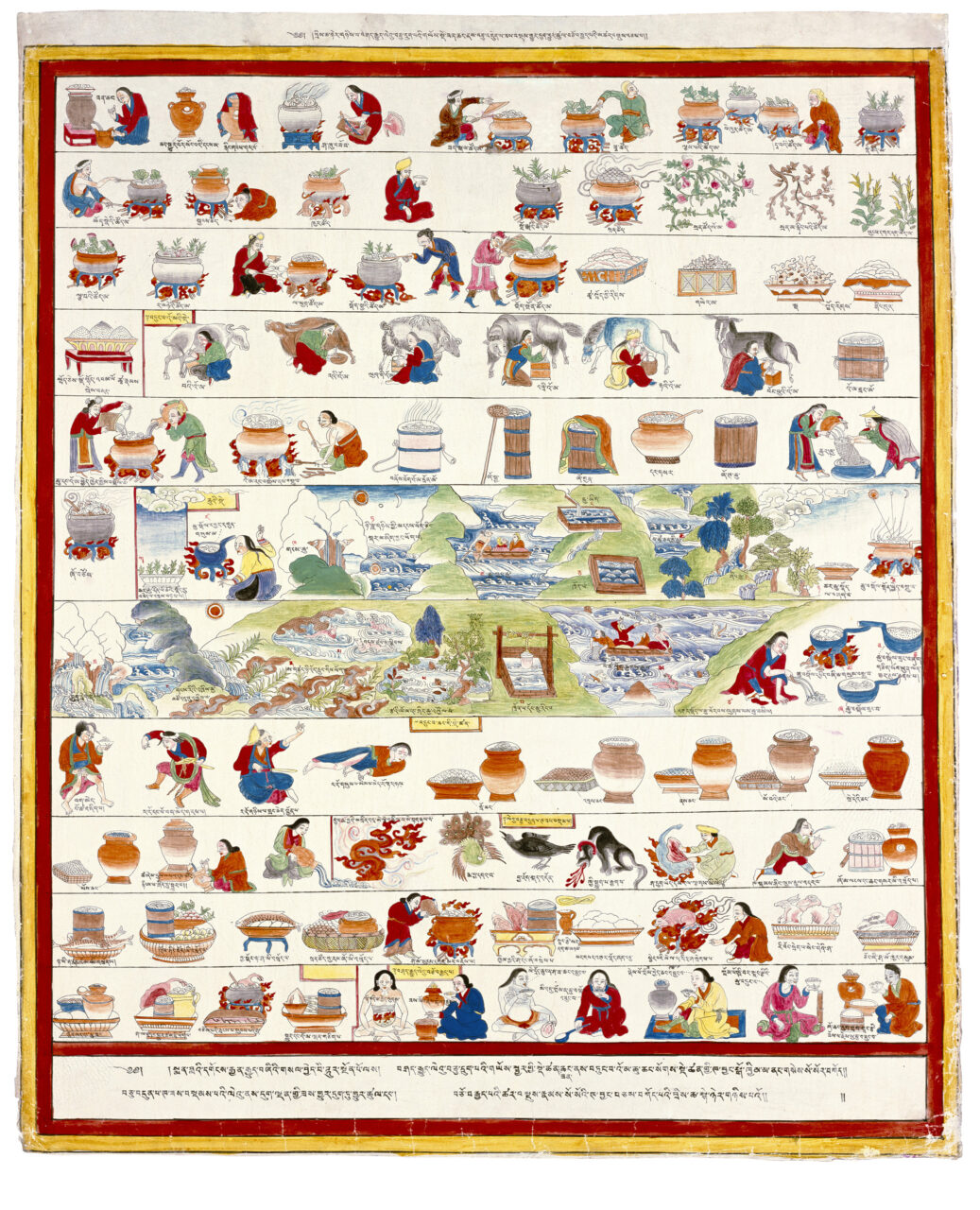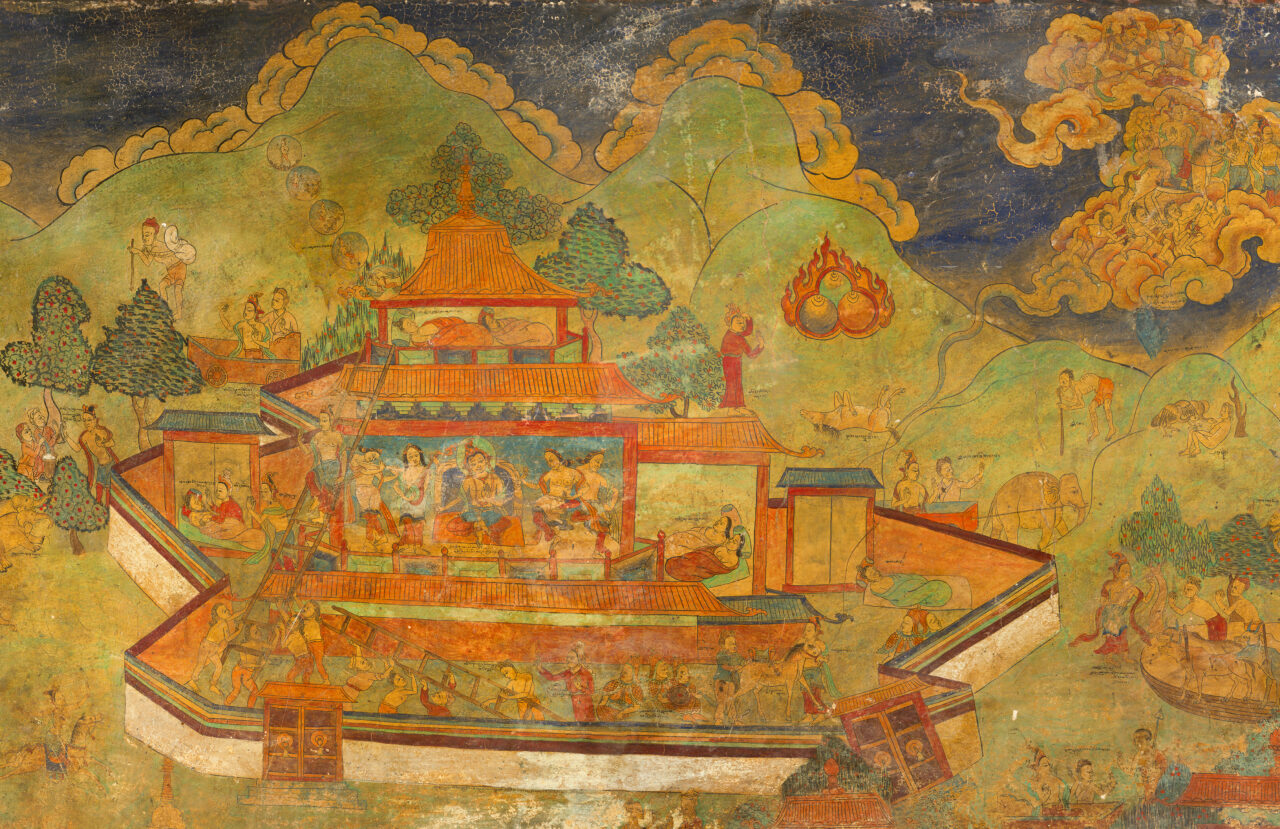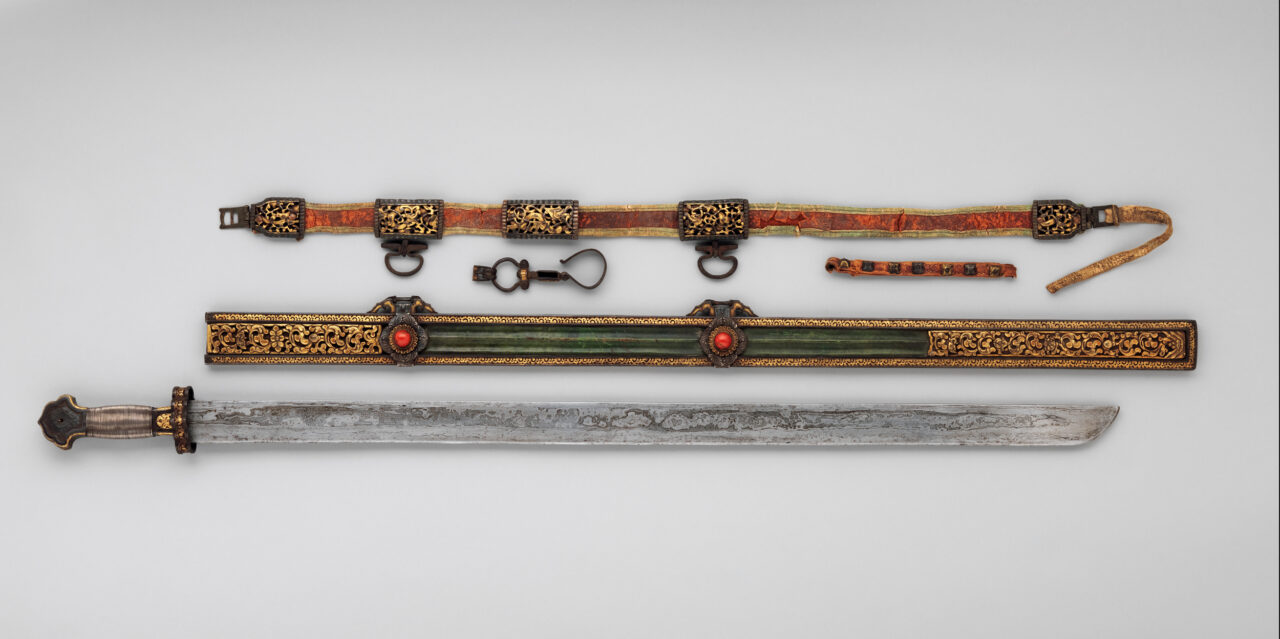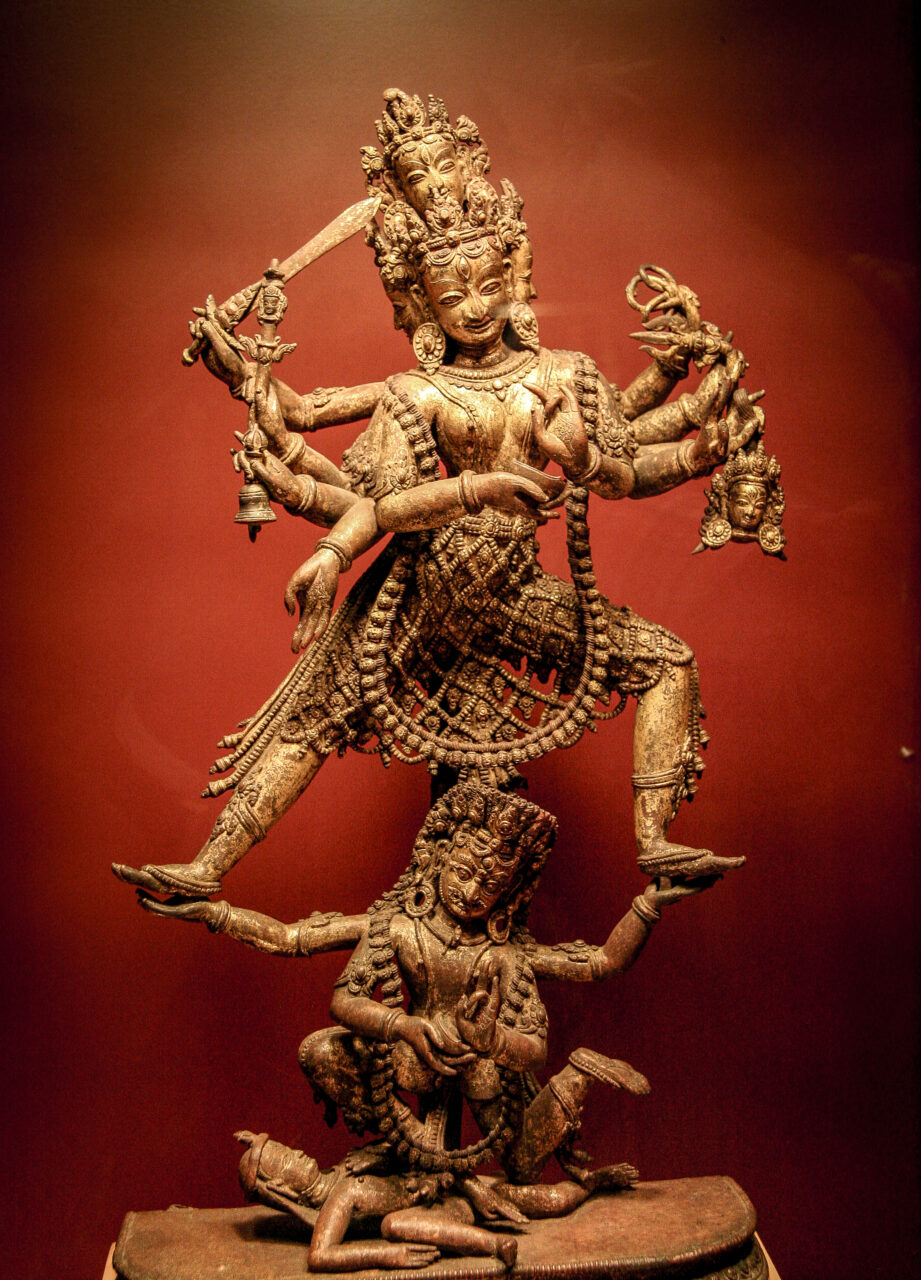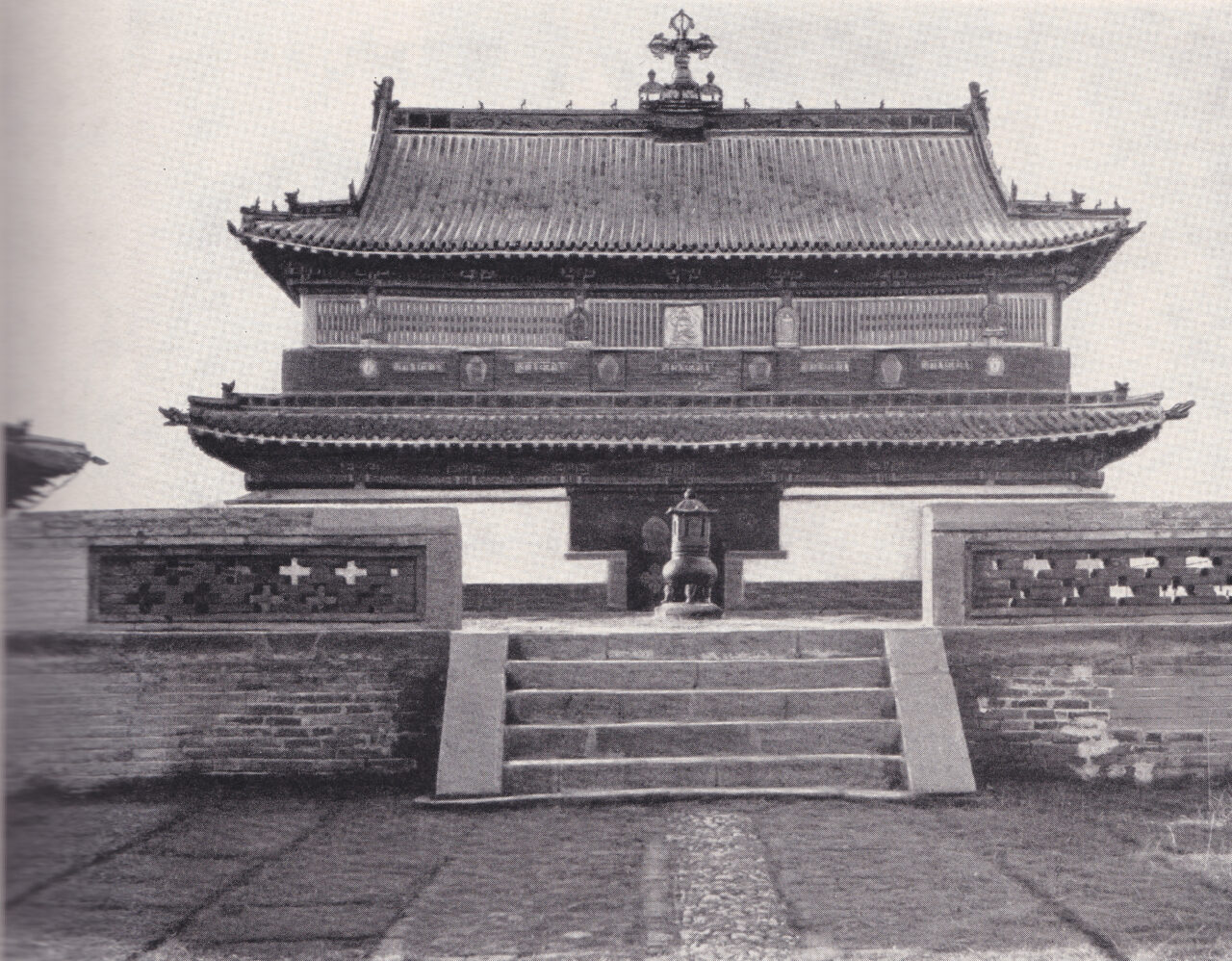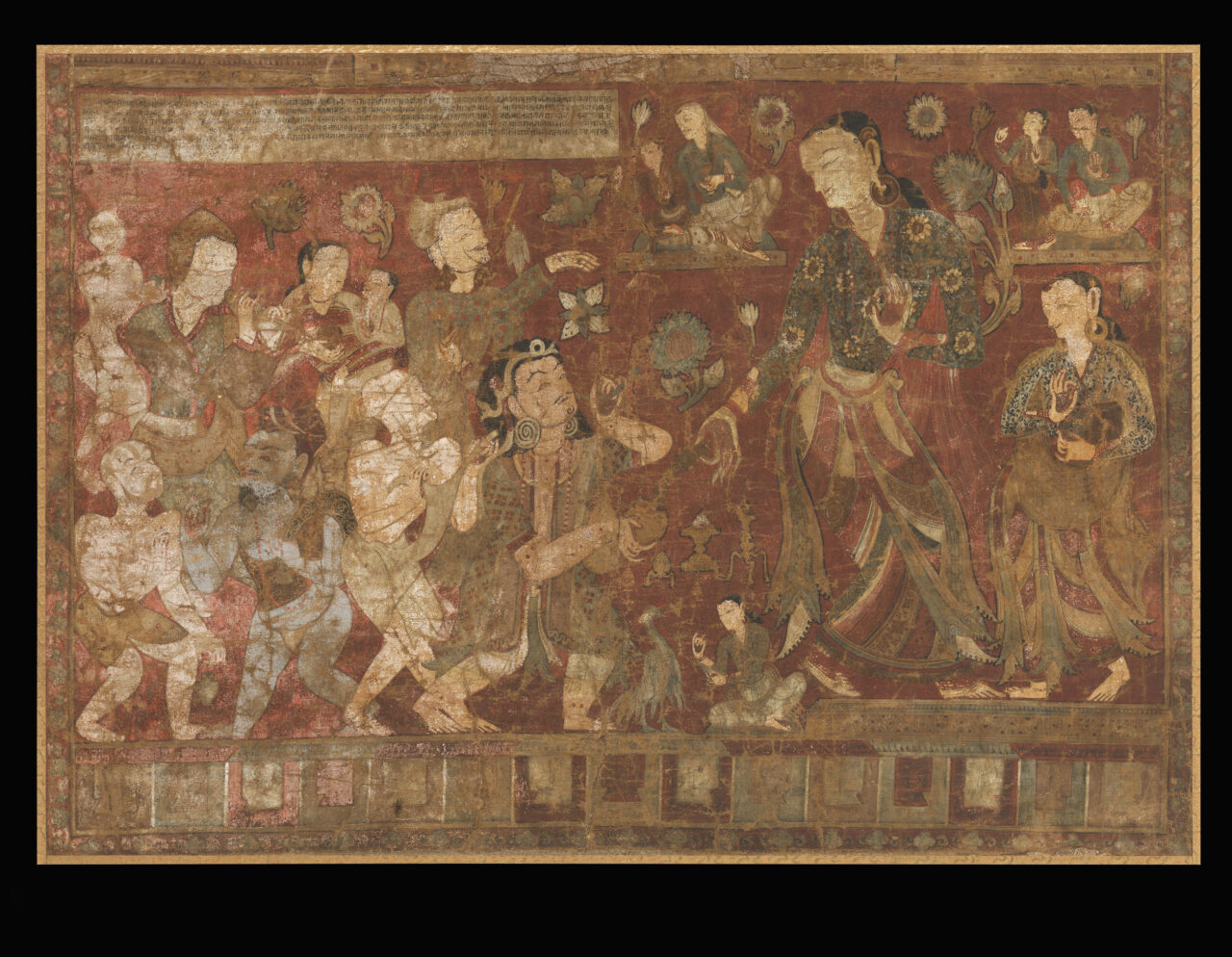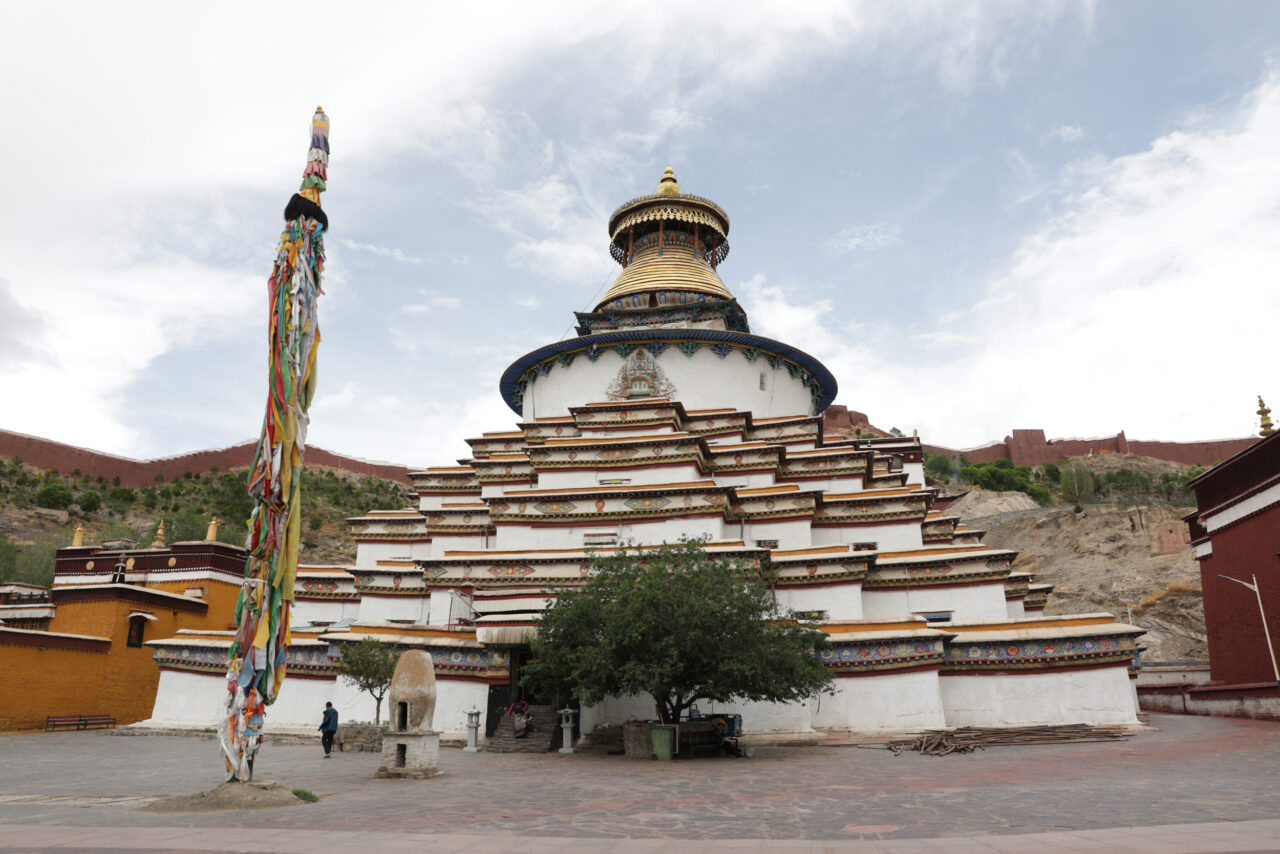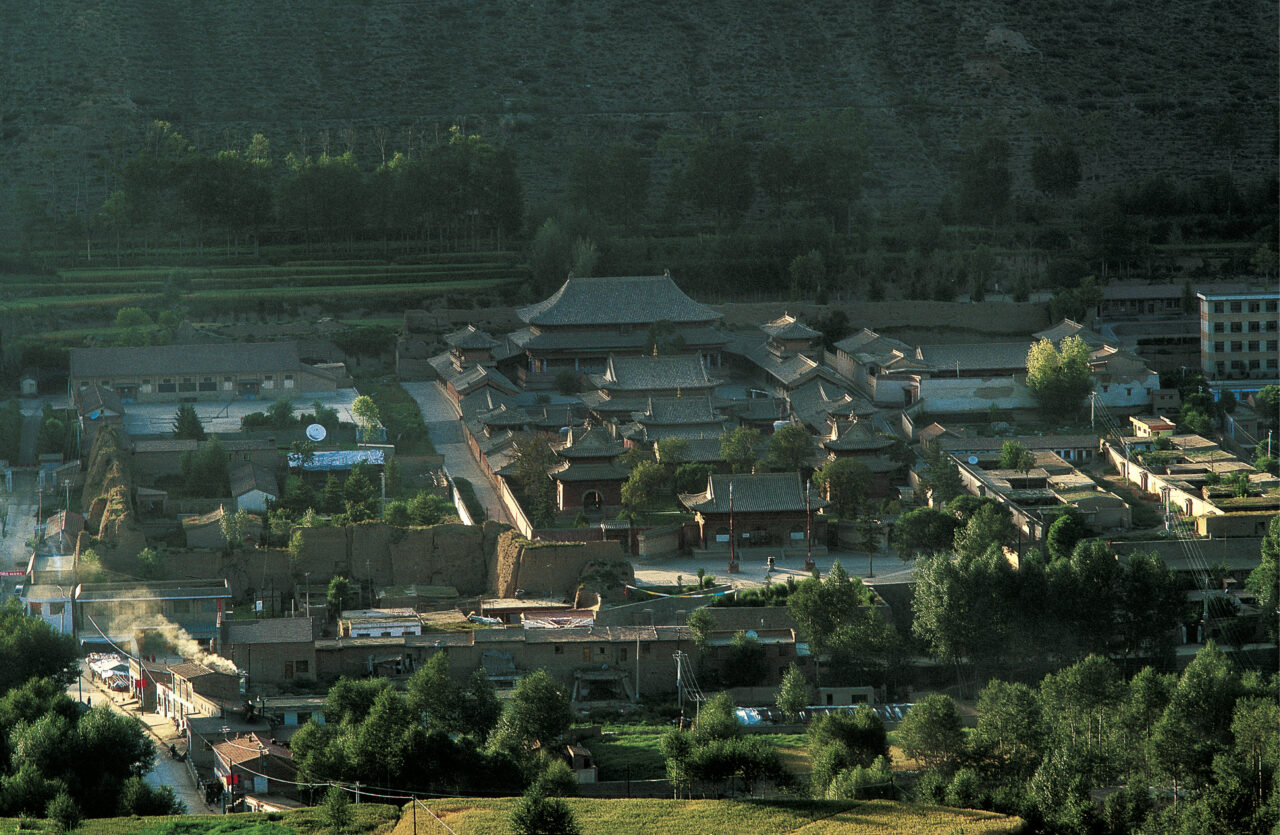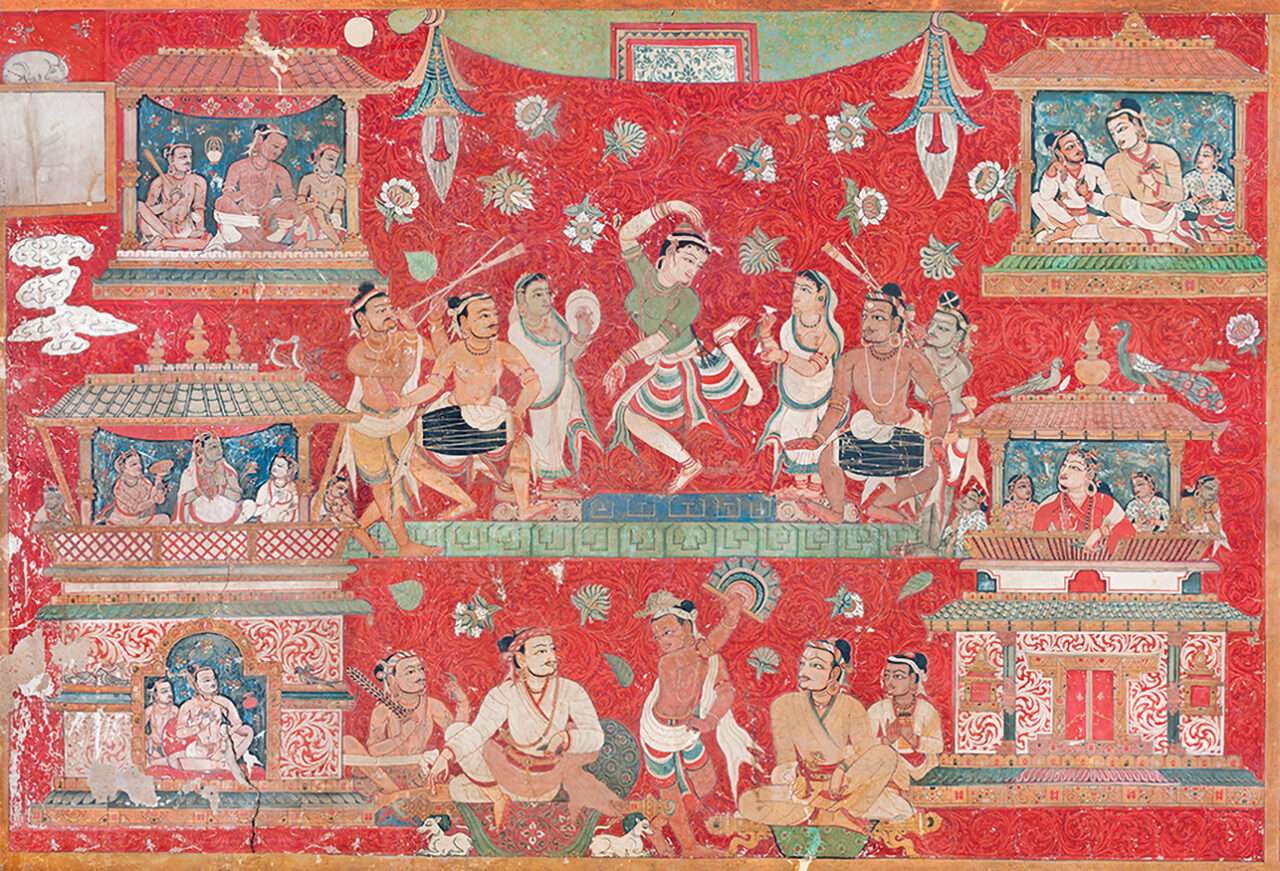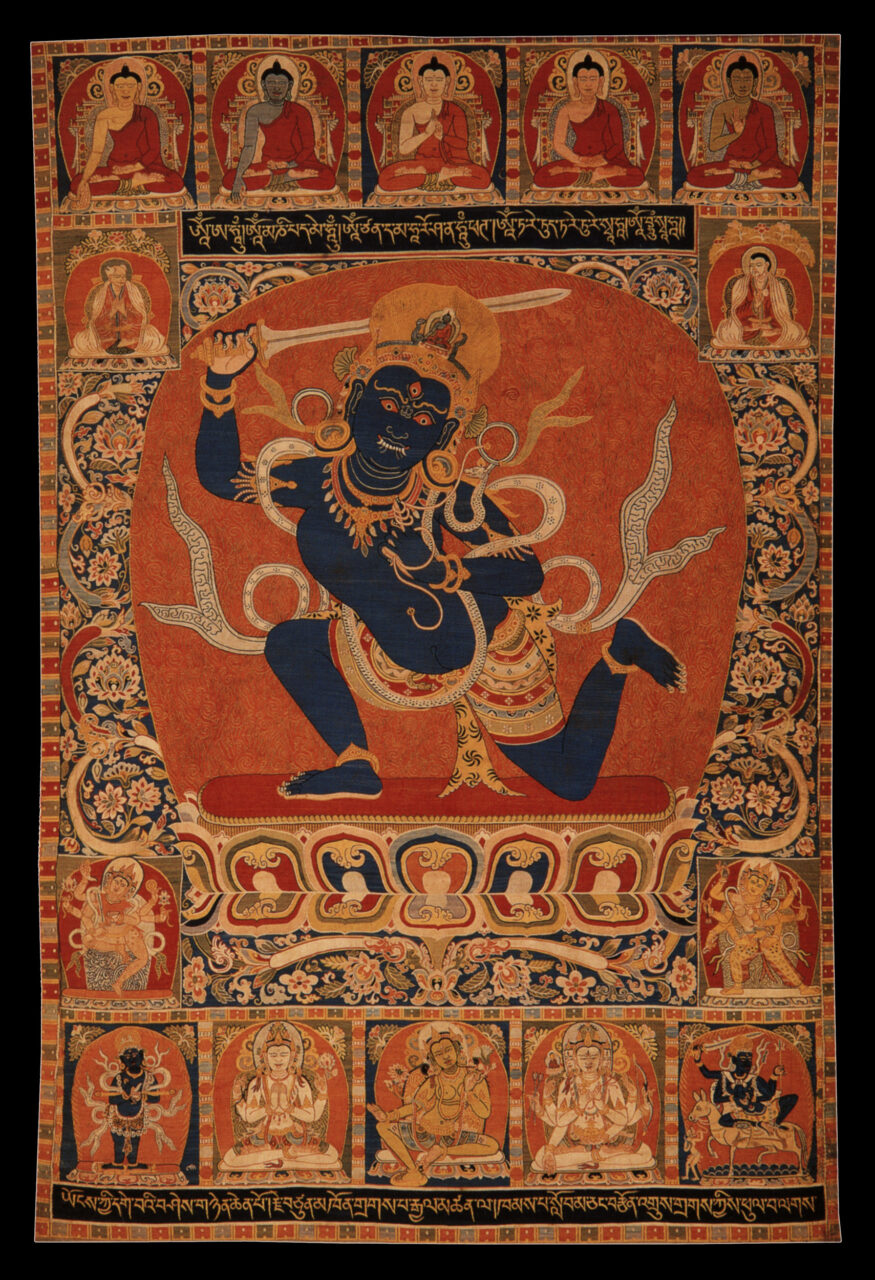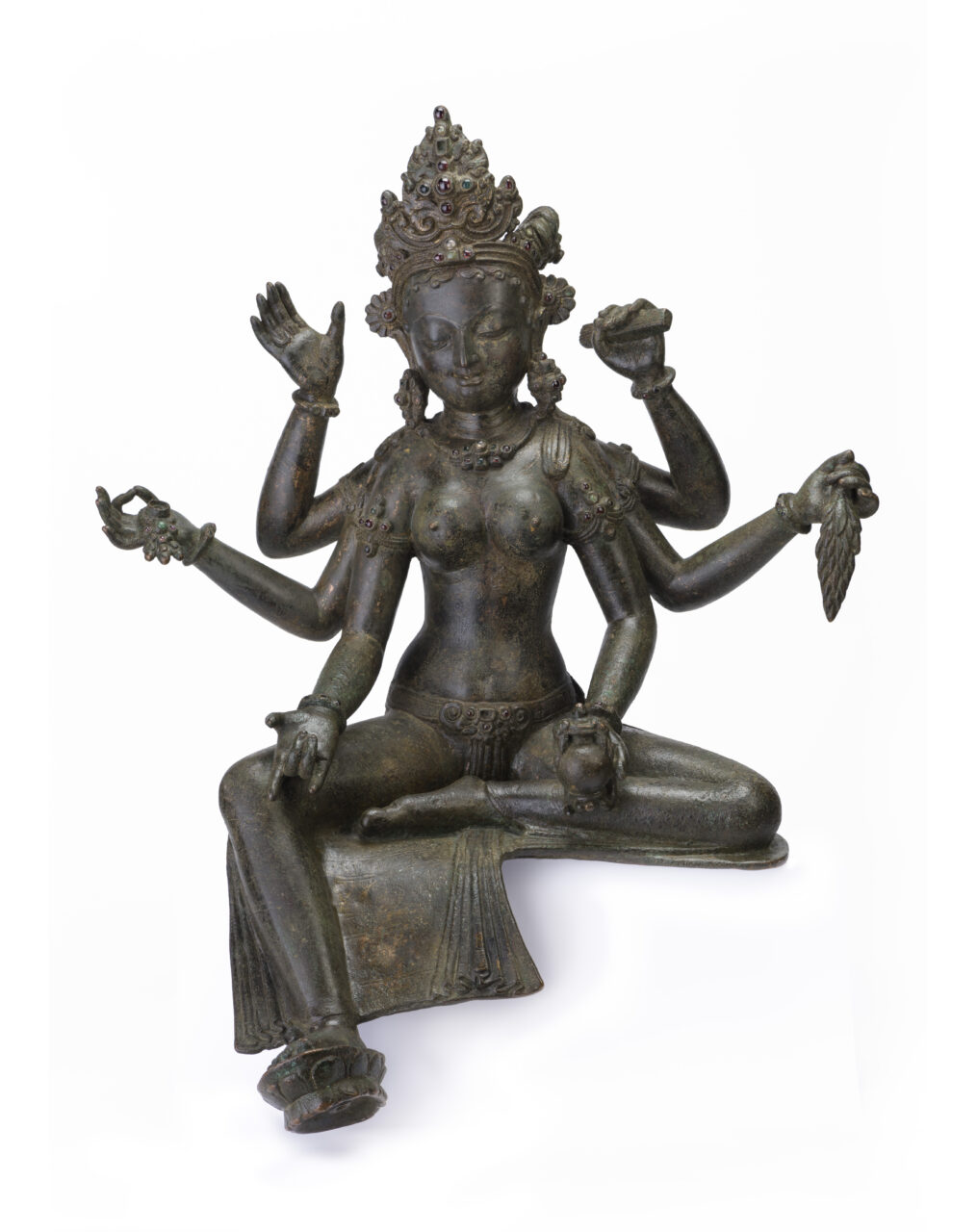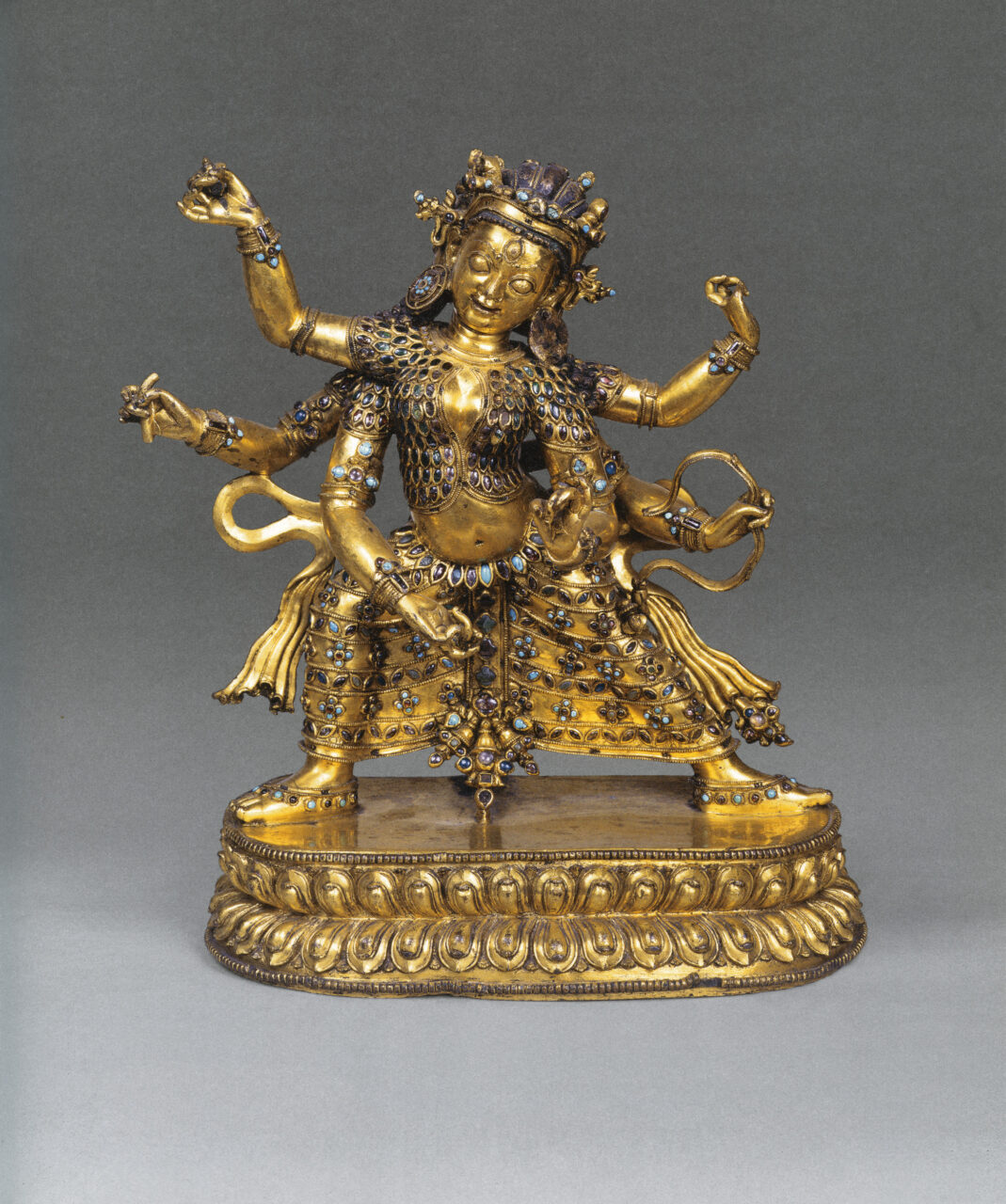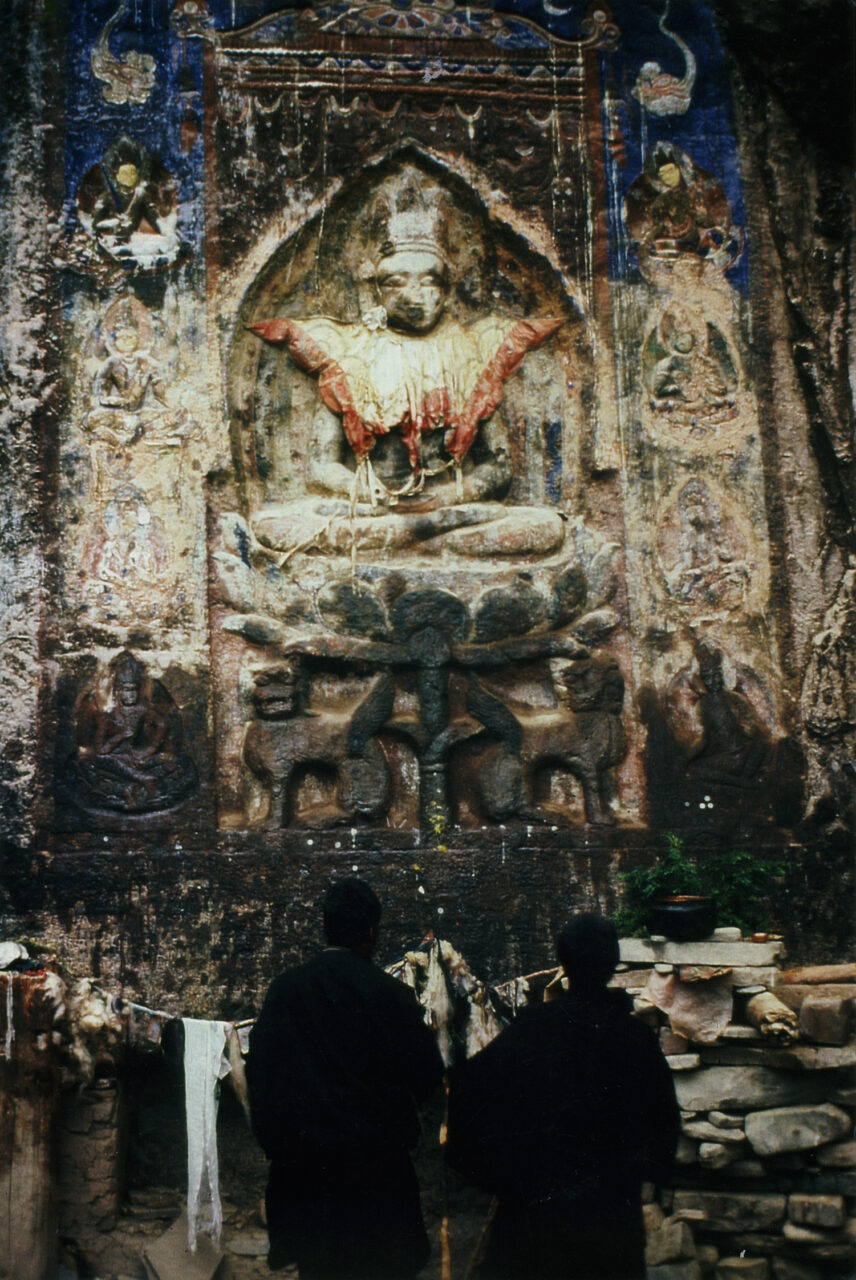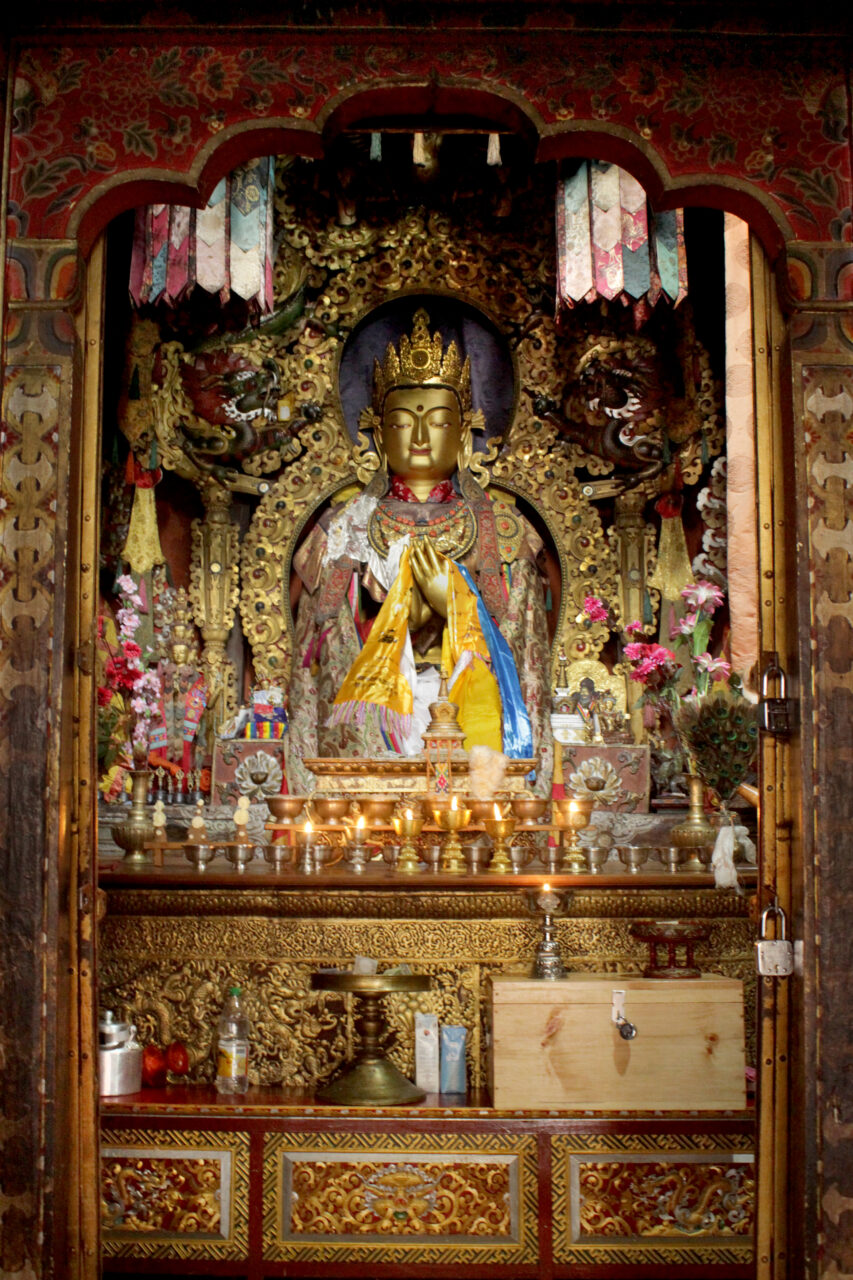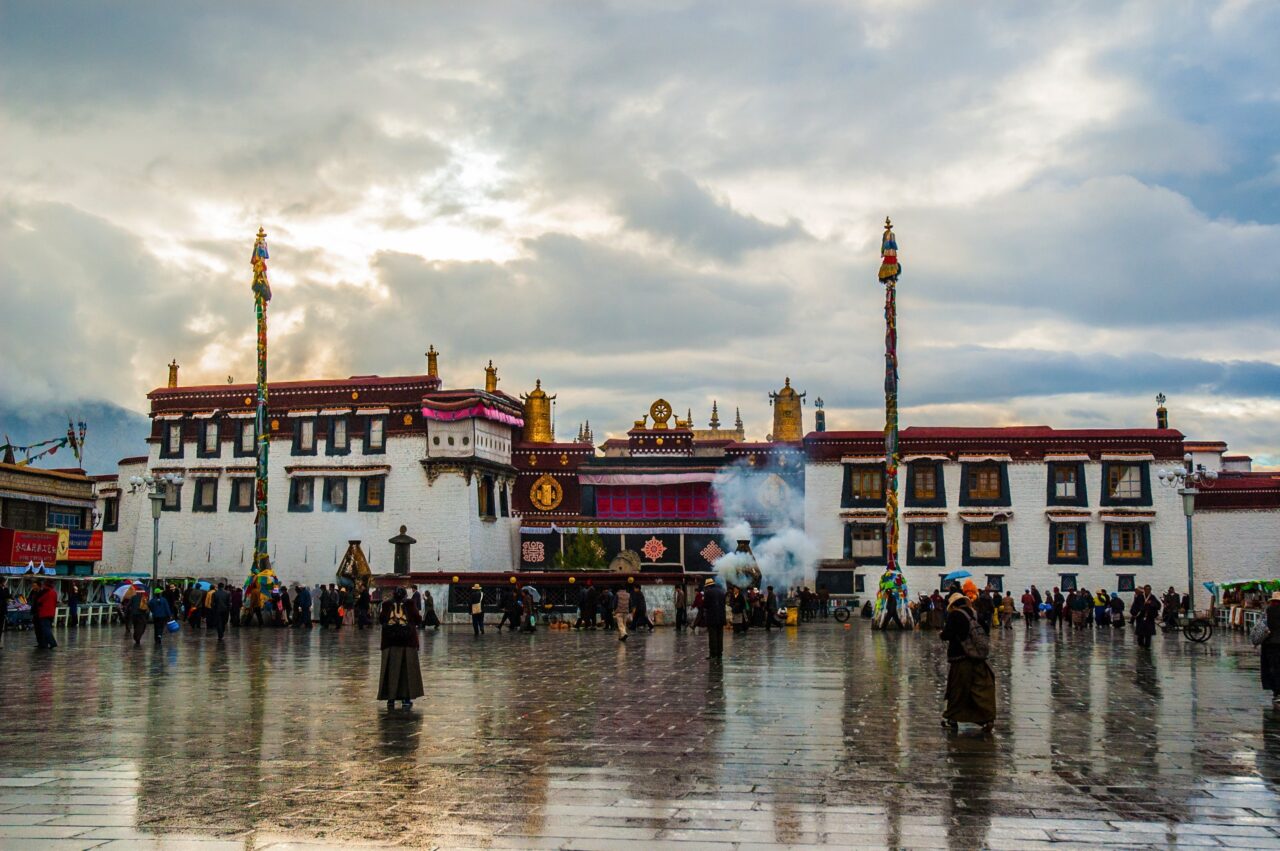In Buddhist context, donor is a person who contributes to or commissions a religious work of art. This act is intended to increase merit on behalf of the benefactor and is dedicated to the benefit of all. It is also usually done for a specific purpose, such as longevity, prosperity, or well-being; to advance religious practice; or to ensure a good rebirth of a deceased relative, teacher, or friend. A similar practice is also known in Hinduism and Bon.
Gilding is a metalworking technique in which a fine golden surface is applied over a statue made of bronze. In Newar metalworking workshops, gilding is typically done with fire and mercury, which gives sculptures a warm finish (but is poisonous for their makers). In Tibetan contexts sometimes gold dust is mixed with glue and applied with a brush (often called “cold gold”), especially to a deity’s face to gain merit.
The Khasa Malla were a kingdom in what is now western Nepal and Tibet, centered on the Karnali River valley. While a Himalayan people called Khasa are mentioned in ancient Indian texts, the organized Khasa Malla kingdom flourished roughly between the twelfth and the fourteenth centuries. Little is known about this kingdom, as written sources are limited to a few inscriptions and mentions in Tibetan chronicles, in which they are known as the Yatse kingdom. Nevertheless, the Khasa Malla had a unique culture of Buddhist bronze casting that combined Indic and Tibetan cultural elements. The Khasa Malla are not to be confused with the Malla Dynasty based in the Kathmandu Valley.
Historically, Tibetan Buddhism refers to those Buddhist traditions that use Tibetan as a ritual language. It is practiced in Tibet, Mongolia, Bhutan, Ladakh, and among certain groups in Nepal, China, and Russia and has an international following. Buddhism was introduced to Tibet in two waves, first when rulers of the Tibetan Empire (seventh to ninth centuries CE), embraced the Buddhist faith as their state religion, and during the second diffusion (late tenth through thirteenth centuries), when monks and translators brought in Buddhist culture from India, Nepal, and Central Asia. As a result, the entire Buddhist canon was translated into Tibetan, and monasteries grew to become centers of intellectual, cultural, and political power. From the end of the twelfth century, Tibetans were exporting their own Buddhist traditions abroad. Tibetan Buddhism integrates Mahayana teachings with the esoteric practices of Vajrayana, and includes those developed in Tibet, such as Dzogchen, as well as indigenous Tibetan religious practices focused on local gods. Historically major traditions of Tibetan Buddhism are Nyingma, Kagyu, Sakya, and Geluk.
The Tibetan script is used to write the Tibetan language, as well as several other smaller Himalayan languages. Based on the Brahmi script used in the Gupta Empire in India, the Tibetan script was developed under the Tibetan Empire in the seventh century and is credited to minister Tonmi Sambhota (b. 619?). Two important forms of the Tibetan script are “Uchen” (Tib. “having a head”), a standard type used in printed texts, and “Umey” (Tib. “headless”), a cursive form sometimes used in manuscripts. There are many other cursive and decorative forms of the script.




